









10 essential software features that every feed and petfood producer needs



→ READ MORE ON PAGE 62
to stay competitive and profitable in feed and pet food production?
How
www.bestmix.com @bestmixsoftware 24




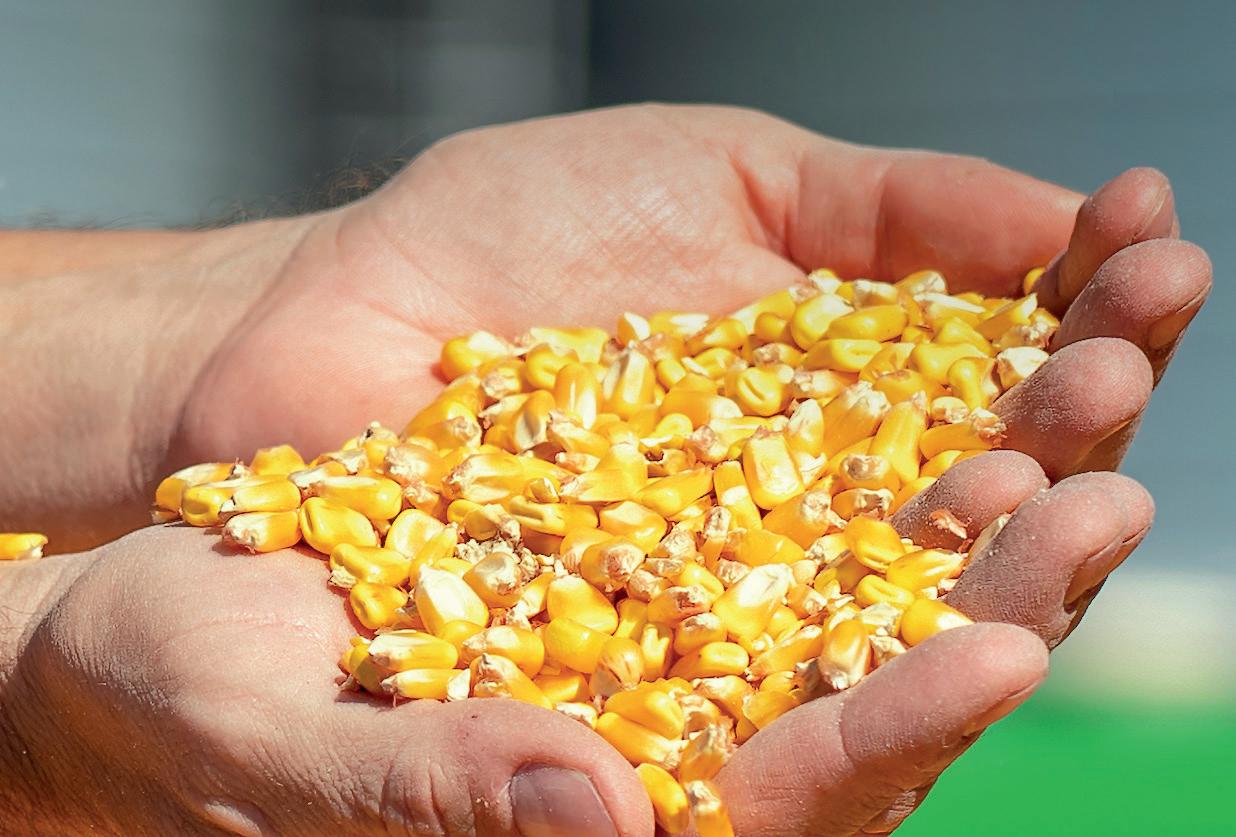





The smart alternative to propionic acid


Selko Fylax Grain is a microbial inhibitor that is highly efficacious at low dosage rates saving you money. It is less volatile than straight propionic acid making its effects longer lasting, and it has the added benefit that it also has an inhibitive effect on enterobacteria.
Low Cost
Highly efficacious at low dosage rates of 0.5-2kg / mT

Dual Action
Microbial inhibitor that also has an effect on enterobacteria



Longer Acting
Less volatile leading to longer-lasting treatment
Learn more at www.trouwnutrition.co.uk
RAW MATERIAL QUALITY









Feed Compounder March/april 2024 page 1 COMMENT Opinion: Why 1.52°C matters 2 Ryan Mounsey: Feed Production Update 4 Colin Ley: View from Europe 10 Matthew Wedzerai: Scientifically Speaking … 14 Christine Pedersen: Milk Matters 16 Robert Ashton: 10 Ways to Avoid Inertia 18 Green Pages 20 Feed Trade Topics From the Island of Ireland CFE and CPM Seminar 23 How to Stay Competitive and Profitable 24 with Bestmix Software Mycotoxins in UK and Irish Feed 26 dsm-firmenich World Mycotoxin Survey Results Driving Efficiency with Data-Drive Decisions 28 with CORE Tech Supplementing Copper in Calves 30 By Vet Leandro Royo and Dr Rahma Balegi Dairy Benchmarking Report Identifies Herd Targets 31 Discussing the 500-NMR KPI Report with Will Tulley Company Profile: Binary Consultants 34 Putting the Cream Back on Top at Turnout 36 With Nigel Airey, Debby Brown and Dr. Philip Ingram Glutamine: the Pivotal Amino Acid to Support Gut Health in Pig and Poultry 38 By Aude Simongiovanni and Herman Claassen Cargill 2023 Global Mycotoxin Report 41 Adams & Green Pioneering Excellence in Animal Nutrition and Sustainability 42 Feed Ingredients: Fats, Molasses & Sugars 45 Feed Ingredients: Sensory Products 48 In Brief 50 Computing: Formulation, Process Control, Mill Management 53 In Conversation 56 with Promtek’s Richard Key and Liam Barks People 58 Making the safe way the easy way… 61 With Dave Roberts Buyers’ Guide 62 COMPOUNDE R F EED Contents March/April 2024 Vol. 44 No. 2 SUBSCRIPTION RATES: One year: £80 Two years: £150 Three years: £200 ISSN 0950-771X Views expressed by contributors are not necessarily those of the Publisher. © Feed Compounder 2024 ADVERTISEMENT/SALES MANAGER: Fiona Mounsey ADMINISTRATIVE ASSISTANT: Sophie Mounsey EDITOR: Ryan Mounsey PUBLISHED BY: Pentlands Publishing Ltd Plas Y Coed Velfrey Road Whitland SA34 0RA United Kingdom Tel: +44 (0) 1994 240002 Web site: www.feedcompounder.com E-mail: mail@feedcompounder.com
WHY 1.52°C MATTERS
The rising impact of global warming appears to be even closer than was thought with the past 12 months yielding a global mean temperature of 1.52°C above the world’s 1850-1900 pre-industrial average. That’s the 1.5° rise everyone has been trying to avoid, of course, as enshrined in the 2015 Paris Agreement.
While clearly not what anyone wanted to hear in early 2024, the 1.52°C announcement by the EU’s Copernicus Climate Change Service doesn’t mean the temperature battle has already been lost forever or that there’s no going back. Scientists have been quick to point out there will be many temperature fluctuations in the years ahead, resulting in annual readings which will be both above and below the 1.5° limit.
In fact, total 1.5° failure will only be confirmed once there’s an average rise of that amount over a 20-year period. That’s according to the Intergovernmental Panel on Climate Change (IPCC), the UN climate body. Hardly a reason to rejoice certainly, but the fight goes on, with a bit of time left to focus on what this means for our industry in terms of sustainable crop production, raw material supplies, and the like.
An increased flow of climate-based research and analysis is already starting to hit the headlines, both positive and negative, to help businesses prepare for whatever the future holds.
One such project, carried out at Wageningen Economic Research in The Netherlands, has explored the possible impact of a climatedriven decline in pollinating insects, such as bees, hoverflies, and moths. The suggestion is that a decline in pollinators could cause a £1.2 billion reduction in annual Dutch farm output, equivalent to a fall of about 4%. The estimated reduction for German farmers was put at more than £1.5 billion.
This is because crops such as oilseed rape have a 25% dependence on pollinators. While this is a lot less than the 85% dependence registered by some food crops, such as apples and green beans, a 25% hit would still be worrying and costly, especially if growers had to replace the natural work of bees and insects with mechanical pollination processes.
The story is a little more positive in the UK, where the Dutch analysis puts the potential pollinator-inflicted reduction in production volumes at a less frightening 0-1.25%. In addition, while pollinator numbers are falling in Europe and other parts of the world, hence the Dutch research, Scotland has continued to enjoy a 30% increase in bees, etc., since 1970.
Staying with positive news, there was another item of climatelinked encouragement in February when a joint UN/FAO document was issued under the uplifting headline – ‘Nature is staging a comeback’.
The document featured seven so-called ‘World Restoration Flagships’ which, taken together, are forecast to be contributing to the restoration of nearly 40 million hectares of damaged and unproductive
land. These are areas which were harmed in the past by wildfires, drought, deforestation, and pollution.
The ultimate goal set for the Flagship programme is to prevent, halt, and reverse the degradation of ecosystems on every continent and in every ocean, leading to the restoration of one billion hectares of productive land. Having mourned the loss of valuable hectares in recent years, this has to be good news for anyone seeking to produce food or feed.
FAO Director-General QU Dongyu said the programme showed what can be achieved by addressing the impact of climate and biodiversity factors, adding that the seven flagship projects represented a ‘crucial step’ forward in the transformation of global agrifood systems, potentially making them efficient, inclusive, resilient, and sustainable.
The seven include a Mediterranean Forests Initiative, shared between Lebanon, Morocco, Tunisia, and Turkey, whose backers are targeting the restoration of over eight million hectares by 2030; the bringing of Pakistan’s Indus Basin back to full life by reinvigorating the country’s 3,180- km long Indus River which irrigates over 80% of the nation’s arable land; and a Regreening Africa initiative based on the use of proven agroforestry techniques to return five million hectares of land to its productive past, hopefully by 2030. There are also projects running in Asia, South America, Sri Lanka, and a second initiative in Africa, all designed to return damaged or neglected areas of land to active cropping.
Even if some of these locations may sound a bit remote from a UK/EU compound feed perspective, the initiatives surely have to be applauded. Producing tomorrow’s raw materials will require all the land resources the world has to offer. That will include farming restored hectares wherever they happen to be.
Our industry has long focused on the loss of productive land or the impact of weather-driven disruptions to planting and harvesting around the globe, blaming both factors for removing vital supplies at short notice and usually at considerable added cost. Bringing damaged areas of farmland back to life won’t solve all such issues but it can’t hurt either.
Focusing on the 1.52°C challenge, meanwhile, holds the hope of calmer and more predictable weather patterns emerging than those that have become standard in recent years. There will always be weather systems to face, of course, such as El Niño, etc., but something more settled would be good.
Hopefully, embarking on a 20-year watch of the world’s temperature curve, waiting to discover if we’re stuck with a 1.52°C gain or can secure a return to cooler times, will help concentrate minds on climate correction and the benefits this could bring, before it really is too late.
page 2 March/april 2024 Feed Compounder Comment section is sponsored by Compound Feed Engineering Ltd www.cfegroup.com Opinion


GREAT BRITAIN
Feed Production Update
By Ryan Mounsey
Year End Overview
Total production of compounds, blends and concentrates, including integrated poultry units, during the year 2023 amounted to 12,952,800 tonnes, the lowest output for a calendar year since 2012 and a decrease from a year earlier of 474,000 tonnes or 3.5 per cent. Furthermore, the total under review was an even more significant 620,700 tonnes or 4.6 per cent down on the decade average for production in a year.
Total feed production during the year of 2023 was made up of: 45.7 per cent poultry feed; 30.5 per cent cattle and calf feed; 14.4 per cent pig feed; 5.6 per cent sheep feed; 1.5 per cent horse feed; and 2.2 per cent other feed.
For the third time in succession, total year-end poultry feed production had dropped below year previous levels. 2023’s output of 5,924,900 tonnes was 160,300 tonnes or 2.6 per cent lower than in 2022. The total under review was even greater 268,900 tonnes or 4.4 per cent below the 10 year average for the period.
Despite this considerable downturn, the production of integrated poultry units for the timeframe increased by 49,600 tonnes or 2.4 per cent to 2,152,900 tonnes. Turkey feed also bettered its year previous production, up 5,800 tonnes or 4.2 per cent to 105,900 tonnes, although this was its second lowest return since 1992. Broiler feed production for the year declined by 155,500 tonnes or 6.9 per cent to its lowest level for the timeframe since 2015 of 1,959,800 tonnes. Poultry breeding and rearing feed production, at 304,500 tonnes, was also at its lowest output for the calendar year since 2015, down 13,400 tonnes or 3.8 per cent on a year previous. A decrease in production of 80,400 tonnes or 6.8 per cent from 2022 levels brought layer feed
production down to 1,034,200 tonnes, while there was a proportionally smaller drop from the corresponding period a year previous in chick rearing feed production, which fell 2,500 tonnes or 1.5 per cent to 122,300 tonnes.
Total cattle and calf feed production decreased for the second year in a row but in this case by a minimal 25,100 tonnes or 0.6 per cent, to 3,954,000 tonnes. Although this was a very small decline, it was enough to keep the current output 144,500 tonnes or 3.6 per cent beneath the decade long average for the timeframe.
The production of blends for dairy cows during the period under review bettered its year earlier counterpart by 23,900 tonnes or 2.9 per cent, rising to 786,000 tonnes. All other cattle blends also produced a higher amount of feed than in the preceding year; its current total was up 4,200 tonnes or 1.3 per cent to 293,700 tonnes. Production from the sector’s largest element, compounds for dairy cows, was also at similar levels in 2023 to a year earlier, falling 11,300 tonnes or 0.5 per cent to 2.098,400 tonnes. There were larger declines displayed in both the all other cattle feed and cattle protein concentrates subsectors which fell by 32,300 tonnes or 5.6 per cent to 514,300 tonnes and by 5,600 tonnes or 5.8 per cent to 85,800 tonnes respectively. At 176,00 tonnes, all other calf feed output had declined by 3,700 tonnes or 1.9 per cent to its lowest level for the period under review since 2011.
Total pig feed production fell below two million tonnes for a calendar year for the first time since 2019. The current output of 1,866,500 tonnes was a sizeable 187,300 tonnes or 8.9 per cent down on a year previous. Moreover, the current total was 49,200 tonnes or 2.6 per cent below the decade long average for a year.
Production from all pig feed subsectors dropped below their respective year earlier counterparts. Pig finishing feed fell by 108,900 tonnes or 9.8 per cent from a year earlier to 1,035,900 tonnes, however, this was still the third highest yearly total on record. In contrast, the pig growing feed, pig starters and creep feed and pig protein concentrate subsectors were all at their lowest levels for the period since records were kept in their current form. Pig growing feed output had dropped by 23,300 tonnes or 6.3 per cent to 305,000 tonnes; pig starters and creep feed production fell 12,400 tonnes or 23.8 per cent to 36,100 tonnes; and pig protein concentrates declined from a year earlier by 1,900 tonnes or 31.1 per cent to 2,700 tonnes. Finally, both pig breeding feed and pig link and early grower feed production had fallen below their year earlier output for the third year in succession: the former did so by 14,300 tonnes or 3.2 per cent to 405,900 tonnes and the latter by 26,800 tonnes or 24.5 per cent to 81,000 tonnes.
A sizeable 77,100 tonnes or 9.1 per cent drop brought total year end sheep feed production down to 726,300 tonnes, its lowest total for the period since 2015. As a result of this fall, the total under review was 56,900 tonnes or 7.5 per cent below the decade long average for the time frame.
page 4 March/april 2024 Feed Compounder Comment section is sponsored by Compound Feed Engineering Ltd www.cfegroup.com
Cattle Pig Poultry Sheep Horse Other Total 2022 3979.1 2053.8 6085.2 803.4 208.0 296.7 13426.8 2023 3954.0 1866.5 5924.9 726.3 199.2 282.2 12952.8 10 year Average 4098.5 1915.7 6193.8 783.2 191.5 390.9 13573.5 0 1000 2000 3000 4000 5000 6000 7000 8000 9000 10000 11000 12000 13000 14000 '000 Tonnes Great Britain Year End Feed Production





> Feed Phosphates > Magnesium Oxide > Feed Grade Urea > Sodium Bicarbonate > Sodium Carbonate > Lithothamnium > Oyster Shell > Calcified Marine Shells FEED INGREDIENT SPECIALISTS PROCESSING Raw material is processed into finished product. SHIPPING Chartered vessels transport products into the UK and Ireland. STORAGE Products stored in strategic locations across both territories. TRANSPORT Bulk and packed material delivered to mill MILL OR FARM Deliveries of any size direct to end user. UK +44 1477 544400 Ireland +353 21 206 9855 sales@westendagri.com www.westendagri.com
Compounds for breeding sheep production for 2023 fell from a year previous by 29,700 tonnes or 10.1 per cent to 226,100 tonnes, its lowest total for the period on record. Output of blends for breeding sheep dropped by a substantial 9,900 tonnes or 30.1 per cent to 22,300 tonnes and production from the sector’s largest category, compounds for growing and finishing sheep, declined from its 2022 return by 42,500 tonnes or 9.5 per cent to 401,400 tonnes. In contrast, blends for growing and finishing sheep surpassed its year earlier counterpart by 4,100 tonnes or 6.0 per cent and rose to its second highest total for a calendar year on record of 70,600 tonnes. Protein concentrates for sheep and lambs during 2023 also increased from a year previous, doing so by 800 tones or 11.6 per cent up to 6,000 tonnes of output.
Total horse feed production during the calendar year, at 199,200 tonnes, was 8,800 tonnes or 4.4 per cent lower than in the corresponding period a year previously. However, due to the recent increases in horse feed production, the current total had still outstripped the decade long calendar year average by 7,700 tonnes or 3.9 per cent.
At 282,200 tonnes, total other feed production for the period had declined for the fifth year in succession. The current fall in output of 14,500 tonnes or 4.0 per cent brought the total an even great amount under the 10 year average for the period, which it was now a notable 108,700 tonnes or 32.3 per cent below.
Total Great British animal feed production was at its lowest level for a calendar year in 11 years and moreover, considerably below the decade long average for the period. The downturn was apparent across the board with every feed production sector down on their returns from a year previous and all bar the horse feed production sector below the average output for the past 10 years. Only in the months of July and November did production outpace its year earlier counterpart. However, with production for the fourth quarter falling just 2,600 tonnes below the levels recorded in 2022, there may be signs an upturn in feed production as we enter 2024.
GREAT BRITAIN
January Production Overview
Before beginning to analyse the January production figures for Great Britain, it is worth noting that there are 53 weeks in the statistical year for 2024. In order to incorporate the change, January 24 was increased to a 5 week period compared to 4 weeks in 2023.
Total production of compounds, blends and concentrates, including integrated poultry units, during the month of January 2024 increased by 171,500 tonnes or 16.6 per cent from a year previous to 1,205,400 tonnes, the second highest total for the month on record. In addition, the total under review was 111,500 tonnes or 9.3 per cent in excess of the decade long average for the month.
Total feed production during the month of January 2024 was made up of: 43.6 per cent poultry feed, 31.3 per cent cattle and calf feed, 14.1 per cent pig feed, 7.6 per cent sheep feed, 1.8 per cent horse feed and 1.6 per cent other feed.
At 525,500 tonnes of output, total poultry feed production was at its second highest level for January and 89,200 tonnes or 20.4 per cent greater than a year previous. The current total also outstripped the decade long average for the month by 44,600 tonnes or 8.9 per cent.
The sector’s two largest components, broiler feed and integrated poultry units, both surpassed their year earlier totals by a significant margin. The former rose by 14,440 tonnes or 9.1 per cent to 172,000 tonnes and the latter did so by 56,500 tonnes or 36.4 per cent to 211,800 tonnes. There was a remarkable increase in the production of turkey feed from a year previous of 4,200 tonnes or 144.8 per cent to 7,100 tonnes. This was the highest total for the subsector in four years but also the fifth lowest total on record for the month. All remaining poultry feed categories bettered their year previous returns: layers compounds output grew by 6,800 tonnes or 8.4 per cent to 87,700 tonnes; poultry breed and rearing compounds did so by 2,800 tonnes or 11.6 per cent to 27,000 tonnes; and chick rearing compounds production grew by 2,600 tonnes or 29.5 per cent to 11,400 tonnes.
After three year-on-year declines in production, total January cattle feed output surpassed its year earlier return by 40,700 tonnes or 12.1 per cent and rose to 377,700 tonnes. Moreover, the total under review was 19,800 tonnes or 5.4 per cent in advance of the 10 year average for January.
All cattle and calf subsectors had bettered their corresponding year previous returns. Compounds for dairy cows output rose for the second January in succession, up 18,400 tonnes or 11.1 per cent to 184,700 tonnes. The same pattern was displayed in the production of blends for dairy cows which increased from a year earlier by 6,800 tonnes or 9.4 per cent to 78,800 tonnes. Total calf feed production, at 17,000 tonnes, was 2,300 tonnes or 15.6 per cent in advance of a year previous and all other cattle compounds, at 54,000 tonnes of output for the month, had increased from a year previous by 5,900 tonnes or 12.3 per cent. All other cattle blends were at their highest output for January since 2014 of 34,400 tonnes, up 7,200 tonnes or 26.5 per cent from 2023. Lastly, cattle protein concentrates production was up 200 tonnes or 2.3 per cent on a year previous, to 8,900 tonnes.
Following a sizeable fall in production in the January of 2023, total pig feed production for the month grew by 27,800 tonnes or 19.6 per cent to 169,500 tonnes. Despite this total being lower than three of the past five years it was nevertheless 10,300 tonnes or 6.3 per cent in advance of the 10 year average.
Despite both the sector wide upturn and the extra statistical week, two pig feed subsectors fell below their year previous counterparts. Pig link and early grower feed output dropped by 2,200 tonnes or 29.3 per cent to 5,300 tonnes, its lowest January level since 2011.
page 6 March/april 2024 Feed Compounder Comment section is sponsored by Compound Feed Engineering Ltd www.cfegroup.com



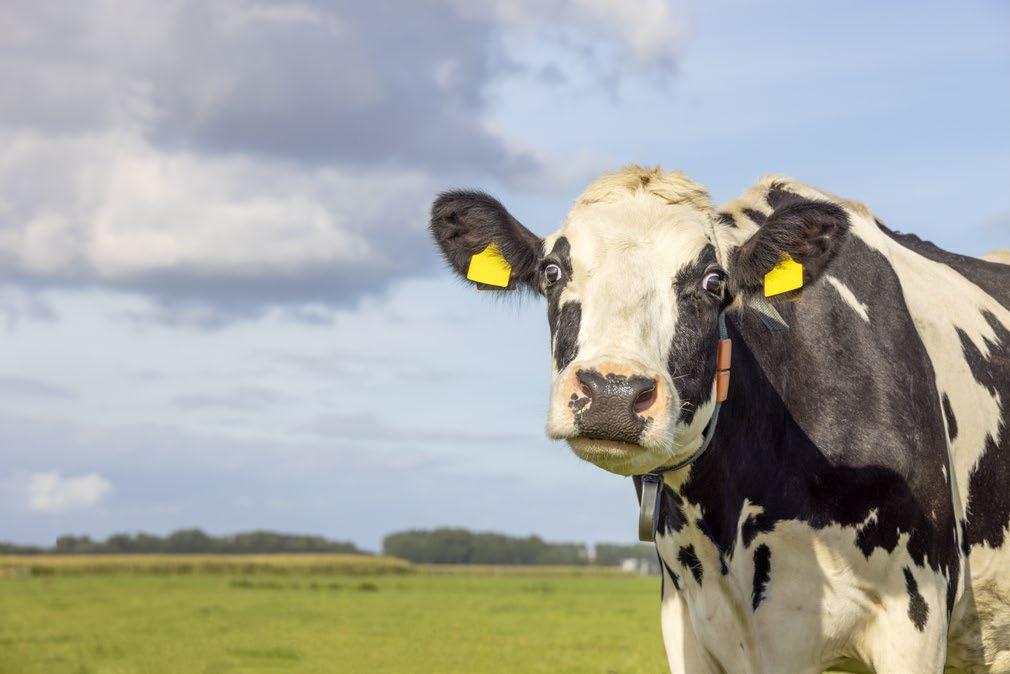
Furthermore, pig starters and creep feed production declined by 100 tonnes or 3.4 per cent to 2,800 tonnes, its fourth successive fall for January. In contrast, the remaining pig feed subsectors all rose sharply from year previous levels: pig finishing compounds did so by 14,900 tonnes or 18.7 per cent, up to 94,600 tonnes; pig breeding feed compounds did so by 5,700 tonnes or 18.3 per cent, up to 36,900 tonnes; and finally; pig growing compounds did so by 9,600 tonnes or 47.8 per cent, up to 29,700 tonnes.
Total sheep feed production for the January under review had surpassed its year previous total by 7,300 tonnes or 8.6 per cent, rising to 91,900 tonnes. However, this total was the fourth lowest of the past decade and was more or less in line with the decade long average which it climbed 200 tonnes above.
Compounds for growing and finishing sheep were at their highest level for the month at 45,900 tonnes, up 2,700 tonnes or 6.3 per cent from a year earlier. Similarly, blends for growing and finishing sheep were at their second highest total on record for the month at 6,700 tonnes, 600 tonnes or 9.8 per cent greater than in 2023. In contrast, at 35,400 tonnes of output, compounds for breeding sheep were at their second lowest level since 1993 despite bettering its year previous return by 3,700 tonnes or 11.7 per cent. Finally, blends for breeding sheep output increased by 100 tonnes or 3.2 per cent to 3,200 tonnes.
Total horse feed production was at its highest level in four years and the third highest level on record for the month at 21,100 tonnes, a rise of 2,200 tonnes or 11.6 per cent from a year previous. Additionally, the current total outstripped the decade long average for January by 2,300 tonnes or 11.5 per cent.
After four successive falls in January output, total other feed production increased by a significant 4,300 tonnes or 27.9 per cent. However, due to much greater outputs in the first half of the preceding decade, the total under review was 7,000 tonnes or 30.1 per cent lower than the 10 year January average.
Given the difference in the statistical periods, there is little that can be said in terms of comparison between the production of January 2024 & 2023. However, as this is a phenomena that happens every five to six years, the fact that production is at its second highest level for the month on record would suggest that production levels were trending somewhat upwards from the historically low levels of 2023.
NORTHERN IRELAND
November Production Overview
Total production of compounds, blends and concentrates during November 2023 in Northern Ireland, at 229,000 tonnes, surpassed its year earlier return by 4,000 tonnes or 1.8 per cent. This was the second highest November total on record and outpaced the decade long average for the month by 16,900 tonnes or 7.7 per cent.
Total feed production during November 2023 was made up of:
54.2 per cent cattle and calf feed, 32.4 per cent poultry feed, 8.6 per cent pig feed, 1.8 per cent sheep feed and 3.1 per cent other feed.
At 124,000 tonnes, total cattle and calf feed production was at its second highest level since records were kept in their current form, 4,300 tonnes or 3.6 per cent up on a year previous. Moreover, the current total was 9,900 tonnes or 8.6 per cent in advance of the decade long average for November.
Despite the sector wide upturn from a year previous, both all other cattle compounds and protein concentrates for cattle and calves declined from year previous levels, with the former falling by just under 200 tonnes or 37.8 per cent to 300 tonnes and the latter by just over 100 tonnes or 28.1 per cent to 300 tonnes. In addition, beef cattle compounds output remained at its year earlier level of 14,000 tonnes. Elsewhere in beef feed production, the beef coarse mixes or blends subsector rose by 3,500 tonnes or 14.5 per cent to 27,500 tonnes. The sector’s largest element, dairy cow compounds, rose to its second highest total on record of 51,000 tonnes after a 100 tonnes or 0.2 per cent increase from a year previous. Dairy coarse mixes or blends surpassed its year previous output by 600 tonnes or 2.6 per cent and rose to 23,900 tonnes and finally, other calf compounds, increased to 6,900 tonnes, up 400 tonnes or 5.9 per cent from 2022.
For the fourth consecutive year, November poultry feed production bettered it year previous production, in this case, rising by 1,000 tonnes or 1.4 per cent to 74,200 tonnes, its highest level for the month on record. Furthermore, the total under review also outpaced the decade long average by 6,600 tonnes or 9.8 per cent.
In contrast to the overall trend, turkey and other poultry feed production decreased from a year previous for the seventh year in succession to 3,300 tonnes, a fall of 400 tonnes or 12.0 per cent from the corresponding month of 2022. Layer and breeder feed output also dropped below year previous levels to 27,500 tonnes, down 800 tonnes or 2.8 per cent. However, broiler feed reached record highs for the month under review, of 40,800 tonnes, bettering the previous record by 2,000 tonnes or 5.1 per cent. Lastly, chick rearing feed production rose 300 tonnes or 14.2 per cent from a year previous to 2,600 tonnes.
Total pig feed production for November decreased by 800 tonnes or 4.0 per cent from a year earlier to 19,700 tonnes. In spite of this
page 8 March/april 2024 Feed Compounder Comment section is sponsored by Compound Feed Engineering Ltd www.cfegroup.com
Cattle Pig Poultry Sheep Horse Other Total 2023 337.0 141.7 436.3 84.6 18.9 15.4 1033.9 2024 377.7 169.5 525.5 91.9 21.1 19.7 1205.4 10 year Average 357.9 159.2 480.9 91.7 18.8 26.7 1138.9 0 100 200 300 400 500 600 700 800 900 1000 1100 1200 '000 Tonnes Great Britain January Feed Production
drop, the total under review was 200 tonnes or 0.8 per cent greater than the decade long average for the month.
Output of pig growing feed, at 3,100 tonnes, and pig breeding feed, at 2,400 tonnes, both fell to their lowest level since 2012, a drop from a year previous of 400 tonnes or 12.1 per cent and 200 tonnes or 7.7 per cent respectively. Additionally, pig finishing feed production declined from a year earlier by 600 tonnes or 6.7 per cent to 8,100 tonnes. On the other hand, pig starter and creep feed surpassed its year previous counterpart by 300 tonnes or 11.3 per cent, rising to 2,700 tonnes of output, while pig link and early grower feed production increased by 100 tonnes or 3.8 per cent to 3,400 tonnes.
At 4,000 tonnes, total sheep feed output had risen by a notable 900 tonnes or 28.5 per cent from a year previous. As a result of this upturn, the total under review outpaced the 10 year average for November by 600 tonnes or 16.4 per cent.
Growing compounds for finishing sheep were at their highest level for the month since 2002 at 2,700 tonnes, up 700 tonnes or 35.0 per cent from a year earlier. Both coarse mixes and blends for sheep and breeding sheep compounds bettered their corresponding 2022 outputs by 100 tonnes, with the former rising 18.9 per cent to 800 tonnes and the latter by 12.6 per cent to 500 tonnes.
Total other feed was only the second sector to fall below its year previous return in November and it did so significantly, with production decreasing by 1,500 tonnes or 17.3 per cent to 7,000 tonnes of output. In addition, this decline had dropped the total under review 300 tonnes or 4.1 per cent below the decade long average for the month.
Northern Irish animal feed production had never been higher at this stage of the year than in 2023. The continually strong outputs of the cattle and calf feed sector and poultry feed sector, which was a record high for November, suggest that this trend will continue into December and result in a record year.




Feed Compounder March/april 2024 page 9
Tel: +44 (0)1159813700 Email: sales@dsl-systems.com Web: dsl-systems.com Member of the Valsoft group Tel: +44 (0)1260 277025 Email: sales@datastorsystems.com Web: datastorsystems.com • Software for life • Optimise processes • Reduce labour • User friendly • 24/7 support • Performance monitoring • Flexible and configurable • Stock control and traceability Advanced control, planning and information software for feed and grain plants Winner of the New Product Showcase IPPE 2023 Best of the Best in Animal Feed www.imperium4.com
Cattle Pig Poultry Sheep Other Total 2022 119.7 20.6 73.1 3.1 8.5 225.0 2023 124.0 19.7 74.2 4.0 7.0 229.0 10 year Average 114.2 19.6 67.6 3.4 7.3 212.1 0 20 40 60 80 100 120 140 160 180 200 220 240 '000 Tonnes Northern Ireland November Feed Production

View From Europe
By Colin Ley
Tough start to 2024 but should get better
First economic impressions of 2024 could be better on several fronts, although the year could still produce some worthwhile European upsides for the feed sector. The best advice at this point is the stay positive and progressive in a glass half-full rather than half-empty context.
Starting with the reality of the European economy, however, the year began on a ‘weaker footing than expected’, according to the European Commission’s Winter Interim Forecast. Having endured ‘subdued growth’ in 2023, it didn’t seem unreasonable to expect a brighter start to 2024, but that’s not the case, certainly not so far.
As a result, EU growth this year is projected to be 0.9%. That’s a significant downgrade from the 1.3% projection contained in the EC’s 2023 Autumn Forecast.
It’s not all gloom, though. Looking beyond the immediate period, EU economic activity is expected to ‘accelerate gradually’ as the year progresses. Such optimism is based on an expectation of inflation continuing to fall, accompanied by a degree of real wage growth and a resilient labour market, both factors which are forecast to help support a ‘rebound in consumption’.
The Winter Forecast also suggests that investment is set to benefit from a gradual easing of credit conditions in 2024 while trade with foreign partners is expected to normalise, after a weak performance last year.
All of which amounts to a sobering dose of economic reality, followed by the promise of jam tomorrow, for those who survive that is.
Shop around
Another team of forecasters, this time attached to the UK’s Agricultural and Horticultural Development Board (AHDB), has also been examining the year ahead, including taking a close look at future pricing patterns for feed ingredients and compound feed.
Their conclusion, published in February this year, is that it is ‘appropriate’ to anticipate that compound feed prices will continue to fall (this year) in line with the main trend of raw material costs.
Stating that there are ‘glimmers of things returning to normal’ after the economic shockwaves created by Russia’s invasion of Ukraine, the AHDB view is that there are already some signs of new (food and farming) growth starting to emerge.
As such, they add, recent declines in feed demand and production suggests there is likely to be a surplus of feed production capacity in Britain (in 2024). This leads into the point, however, that, for commercial, technical, and regulatory reasons, feed producers won’t be able to easily switch between the livestock sectors they serve, thus creating a surplus of feed production capacity as compounders are ‘driven to recapture demand’.
With the AHDB team gearing its content towards farmers, who paid
their wages after all, the Board’s headline message for 2024 is to ‘shop around more than normal to ensure the best-value feed can be found’.
With conventional wisdom dictating that profits are made when markets rise and fall, not when they’re static, there is also clearly the potential for losses to result from pricing and production changes, certainly of the type we’ve seen over the last couple of years.
By the same process, farmers who are focused on applying ‘shop around’ principles to their 2024 feed purchases will inevitably create both winners and losers across our own sector as the year progresses.
Veganuary decline & petfood boost
Okay, time for a couple of positive items to balance this tough intro.
First, news of a small boost from a meat-eating perspective, courtesy of a Kantar Worldpanel report on Irish consumer trends in January.
It appears that while many in Ireland cut back on their alcohol consumption in January, spending 8.6% less on beer, wine and spirits during the month, compared to January 2023, the same wasn’t true of Veganuary, that great vegan invention.
Kantar’s figures show that while nearly 38% of Irish households purchased chilled or frozen plant-based products during the month, Veganuary sales still fell by 2.6% in comparison to January 2023, a decline of €200,000 in value terms.
Second, I also thought I’d pass on a brief piece of non-Europe information relating to the pet food sector.
Once again based on work commissioned by Kantar, the item in question concerns a 3.7% growth in dog food sales in the past year in Central America. Equally encouraging, is the conclusion reached by the analysts involved that the pet food category has not yet reached its full potential.
The ‘further growth’ view is based on the fact that some households with dogs, bought in the last year, are still giving homemade food to their pets while others are following a mixed homemade/processed feed process.
According to a Kantar survey, in fact, 6 out of 10 Central American households are currently following a mixed feed approach.
The company also reported that, by the end of 2023, more and more shoppers were considering snacks and wet food to ‘pamper’ their dogs.
“There is, therefore, a clear opportunity for brands to continue gaining space in the pet products market if they know how to communicate about the benefits that our pets have when consuming products specially designed for them,” said Kantar.
Hopefully, what happens there will travel here in due course. It usually does.
US breakthrough
Staying with the pet food sector, and the other side of the Atlantic (in part), congratulations to the Association of American Feed Control Officials (AAFCO) for finally granting the French insect protein company, Ÿnsect, its first authorisation for the commercialisation of defatted mealworm proteins (Protein70) in the United States.
The European Food Safety Authority (EFSA) published its scientific opinion to the effect that insect proteins were no riskier than other types of protein way back in 2015. This marked a turning point for Europe’s insect industry, serving as the basis for the partial and progressive lifting
page 10 March/april 2024 Feed Compounder Comment section is sponsored by Compound Feed Engineering Ltd www.cfegroup.com

Service, Support & Maintenance


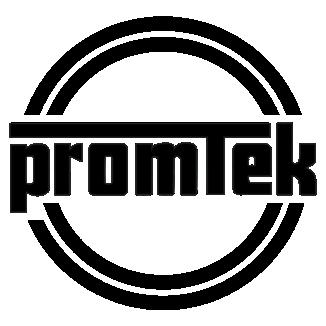
NEWPORT FEEDS
of the continent’s previous feed-ban rules. As a result, insect proteins were duly authorised for use in European aquaculture in 2016, followed by clearance for pigs and poultry in 2021.
The fact that the US has now started to catch up is good news for Ÿnsect, of course, who say AAFCO’s decision will open ‘strong prospects’ for pet food sales into the American pet food market, which the French company states was worth in excess of $42 billion in total in 2022, according to the latest available figures.
For once, what happened here has finally travelled across the Atlantic, and hopefully to our own industry’s benefit.
Regulatory tsunami
It won’t have escaped attention that Europe’s farmers have been exercising their right to protest in recent weeks, and not only in France, where go-slow tractor convoys and the burning of imported meat lorries have a long term history.
While being careful not to support any protests which have overstepped the mark in early 2024, the farmer and farm co-operative body, Copa-Cogeca, penned a sharply-worded open letter in late February to EC president, Ursula Von der Leyen, and Alexander De Croo, Belgium’s Prime Minister and current holder of the Council presidency.

Stating that the European Green Deal, which was designed to drive key emission reduction targets, has been a ‘regulatory tsunami’ for farmers, the letter writers complained of too many rushed consultations, top-down targets lacking assessment, and proposals pushed through without feasibility studies.
The letter went on: “The increasing number of legitimate farming protests in recent weeks and months highlights the pressing necessity for the EU to shift the focus back to rural areas, agriculture, and forestry
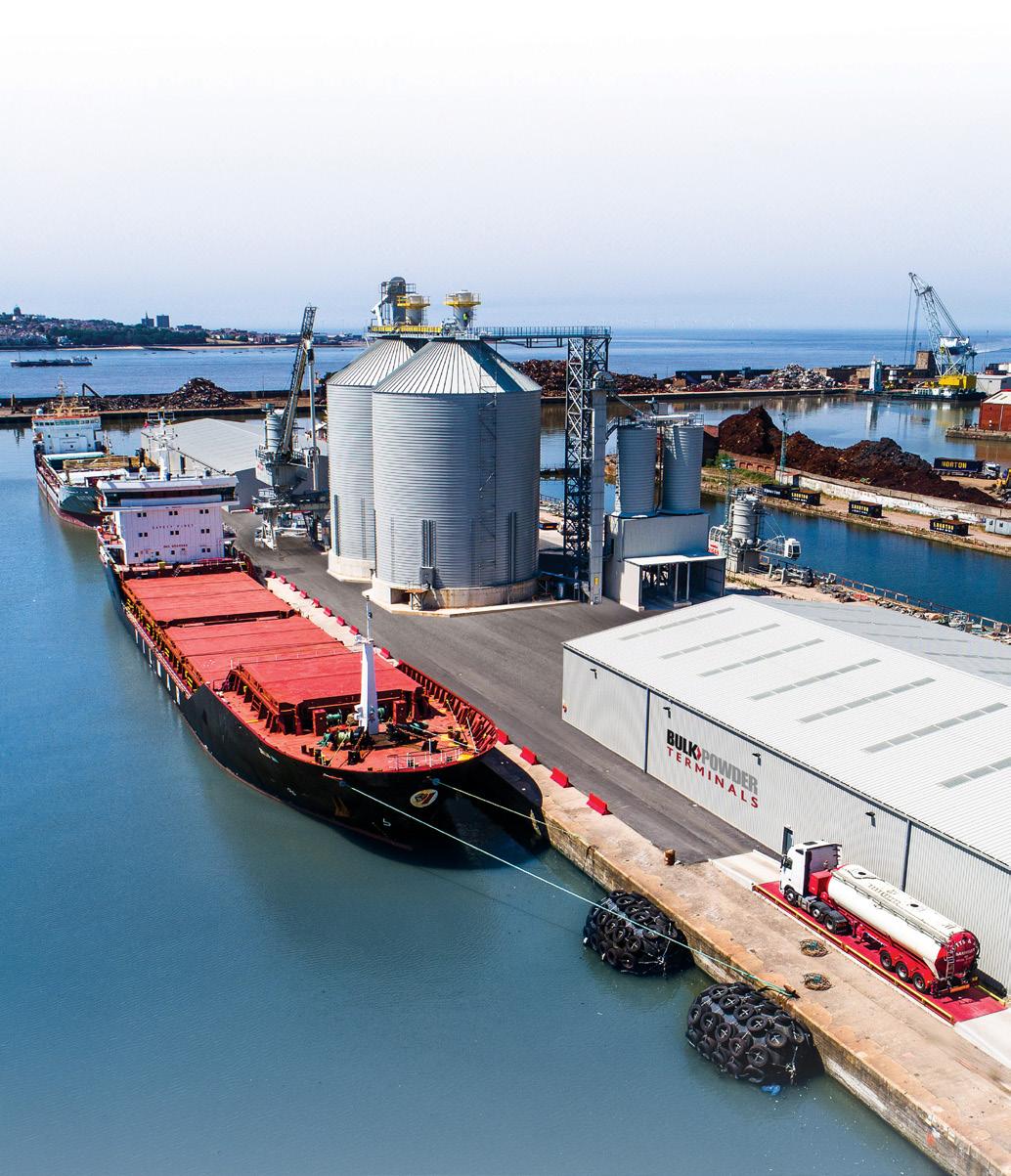
“Our farmers, forest owners and agri-cooperatives need stability, visibility and predictability to be able to look to the future with confidence. A competitive cooperative model aimed at improving the bargaining power of farmers in the food supply chain, facilitating joint investments to allow farmers to obtain more added value for their products and encouraging farmers’ economic, social, and environmental sustainability must be promoted.”
The letter concluded with a challenge for the EC to focus on four
The next EU budget must reflect the many challenges facing
The trade policy agenda must be consistent with the ambition set within the internal market while guaranteeing robust reciprocity measures and ensuring attention to sensitive EU productions.
3. Any new agri-related proposals must be backed up by a feasibility study, discussed with stakeholders.
4. A Commissioner for Agriculture and Rural Areas with a key role as Vice-President of the European Commission is needed.
And, just in case EU leaders and MEPs weren’t already listening, Copa-Cogeca ended with a ‘little reminder’ that the clock is counting down to the next ‘pivotal elections’ for the European Parliament which are now only a few months away. Never a bad way to end a letter to a group of politicians.
page 12 March/april 2024 Feed Compounder
section is sponsored by Compound Feed Engineering Ltd
Comment
www.cfegroup.com
SODIUM BICARBONATE SODIUM CARBONATE CALCINED
PHOSPHATES
NEW BULK SUPPLY CHAIN FACILITY
MAGNESITE
A
+44 (0)20 8332 2519 +44 (0)20 8940 6691 sales@newport-industries.com Contact us:
Weather forecast improvement
For businesses which rely on raw materials whose production and cost is highly weather-dependent, as many of our products are, the prospect of improved seasonal weather predictions has definite appeal. The sooner you know what’s coming on the price and volume horizon, the quicker your buying teams can react, which is why new research taking place at the UK Universities of Lincoln, Sheffield, and Reading looks interesting.
Backed by £650,000 of UK Government grant funding, the three universities are working together on an AI and Machine Learning development which they believe will allow them to improve the predicting of seasonal weather conditions across the UK and Northwest Europe.
While current forecasts depend on expensive supercomputers, the researchers are exploring the potential for an AI/Machine Learning method to be added into the advanced weather mix. Known as NARMAX (Nonlinear AutoRegressive Moving Average models with eXogenous inputs) the new process is apparently capable of predicting the state of the North Atlantic jet stream and atmospheric circulation, both of which are strongly linked to surface air temperature and precipitation anomalies.
Already used successfully in delivering early predictions for both summer and winter conditions in the North Atlantic region, the claim is that NARMAX will ‘improve’ on recent supercomputer-based forecasts, which have tended to ‘underestimate’ year-to-year variations for both seasons.
Ultimately, they say, providing more accurate seasonal forecasts will help give farmers a better idea of likely yields for the season ahead, enabling them to plan how to optimise crop systems and prepare for harvest requirements. Hopefully, better forecasting will help us as well.
Coffee for sheep and cows
Finally, the results of an EU-backed project to assess the potential for converting spent coffee grounds (SCGs) into livestock feed are to be given a public airing at the end of March.
The project, called LIFE ECOFEED, has been running since 2020 with support from the European Commission’s Life Environment and Resource Efficiency programme. The launch theory was that with European coffee consumption averaging more than 2.6 million tonnes a year, the waste produced should be put to the best possible use.
Now, according to new information published by the EC’s European Climate, Infrastructure and Environment Executive Agency, the researchers behind the project are ready to talk about their ‘positive’ findings.
Working with 21 tonnes of SCG and 1.5 tonnes of coffee capsules, the research team have produced 80 tonnes of experimental feed, reports the agency, all of which has been fed to sheep and dairy cattle in controlled diet trials.
Admittedly, 80 tonnes doesn’t sound like a lot on which to base your future. However, more detailed information on the LIFE ECOFFEED project, including the results obtained so far, are due to be unveiled at the World Rural Forum’s global conference which takes place in VitoriaGasteiz, Spain, from March 19-21. This will include a demonstration workshop on March 21, specifically dedicated to the coffee feed project.
Definitely worth following, especially during a year when things are only set to get better as the months roll by.

Contact:
Oliver Caiger-Smith Technical Sales Manager
Caiger-Smith@biochem.net
Mobile: +447722 019727
SMALL INPUT – GREAT EFFECT
Bioavailable combination of metal and glycine
Successfully tested in various animal species
Safe trace mineral supply for high performance
Feed Compounder March/april 2024 page 13
MULTI SPECIES
www.biochem.net
Feed Safety for Food Safety®
E.C.O.TRACE
19-04-15 HW Anzeige - E.C.O.Trace - 86x254 mm.indd 1 23.04.2019 14:49:24
®

Scientifically Speaking …
By Matthew Wedzerai
Curcumin: A natural colourant with performance and health benefits for pigs
Most research work has focused on additives for weaning piglets. Interestingly, researchers of a current study turned the focus to finishing pigs. Their study, recently published in the Frontiers in Veterinary Science journal, demonstrates the potential of dietary curcumin (in nanoparticle form) as an effective feed additive for improving the performance and health status of finishing pigs.
Recent research findings emphasise the use of phytogenic compounds in the form of nanocapsules or nanoparticles as most phytogenic materials have poor bioavailability in biological systems. The natural colourant curcumin is a polyphenolic bioactive compound extracted from the turmeric plant, Curcuma longa, which has phytotherapeutic potential owing to its antimicrobial, antioxidant, anti-inflammatory, and immunostimulatory properties. To increase its solubility and bioavailability, nano-formulation of native curcumin is a better option in animal diets. Previous studies have shown that the encapsulation of phytogenic compounds enhances intracellular uptake and improves delivery in the target organs through surface area modification of the phytogenics.
The curcumin study
In this study, researchers investigated the effects of nano-curcumin nanospheres on growth performance, serum biochemistry, meat quality, and gut health in finishing pigs. Crossbred pigs with an average initial body weight of 73.8 kg were assigned three diets for a 40-day-long study as follows:
• Control diet: no additive
• NC-1 diet: diet supplemented with nano-curcumin (NC) 1.0 mL/kg diet
• NC-2 diet: diet supplemented with nano-curcumin (NC) 2.0 mL/kg diet
Enhancing growth performance
The results of the study showed a positive outcome of dietary nano-curcumin through enhanced growth and feed utilisation (Table 1). Supplementation with nano-curcumin showed significant improvements in average daily gain (ADG) and feed conversion ratio (FCR) which were more pronounced with increasing dosage. The
Item
treatments
growth improvements were attributed to the observed improvements in gut health that are described in subsequent sections of this report.
Meat and carcass quality
Nano-curcumin improved the lightness, redness, and yellowness of both neck muscle and longissimus muscle. The carcass weight and backfat thickness of pigs fed the higher NC supplemented (2.0 ml/kg diet) diet were higher than those of the control and low-concentration NC groups, which endorsed the beneficial effects of nano-curcumin supplementation on weight gain, following the slaughtering of pigs. In addition, the grading percentage (1+) of pork meat also increased with dietary supplementation of NC, which was attributed to the improvement in meat quality in pigs fed nano-curcumin-incorporated diets; higher-class meat grade (1+) and lower-class meat grade (2) was 37% and 20% for the 2.0 ml/kg NC diet compared to the control diet that had 23% and 40%, respectively.
Improving gut health
Histological measures on the intestine, the modulation of microbiota, and intestinal immune response all determine gut health and help establish the health status of pigs.
Histological changes
Gut morphology can serve as an important tool to evaluate the absorption and utilisation of a feed additive in the intestine, which ultimately affects the growth and health status of animals. Abnormalities or changes in GIT especially in the small intestine as the major site for nutrient absorption may influence the overall growth of the animals. In the current study, pigs fed the NC-supplemented diets showed remarkably enhanced villus length, crypt depth, and goblet cell number in the jejunal part of the intestine, which was attributed to the higher surface area of the intestine for absorption of curcumin.
page 14 March/april 2024 Feed Compounder
Dietary
Control (no NC) NC-1 (1.0 ml/ kg) NC-2 (2.0 ml/ kg) Days 1–28 ADG (kg/d) 0.67 0.73 0.78 ADFI (kg/d/pig) 1.9 1.9 1.7 FCR 2.8 2.6 2.1 Days 29–40 ADG (kg/d) 0.83 1.24 1.26 ADFI (kg/d/pig) 2.0 2.2 2.1 FCR 2.4 1.8 1.7 Days 1–40 ADG (kg/d) 0.72 0.88 0.92 ADFI (kg/d/pig) 2.7 2.8 2.5 FCR 2.7 2.2 1.9
Comment section is sponsored by Compound Feed Engineering Ltd www.cfegroup.com
Table 1 — Dietary nano-curcumin (NC) on performance and feed utilisation in finishing pigs
The number of goblet cells per villus was significantly higher (4% and 5% higher) in pigs fed the NC-1 diet and NC-2 diet, respectively, compared to pigs fed the unsupplemented diet.
Intestinal bacteria content
In this study, researchers reported the effects of dietary supplementation with nano-curcumin on the pathogenic and beneficial bacterial contents in faecal and intestinal samples collected from finishing pigs at the end of the experimental period. The intestinal (jejunum) bacteria, Lactobacillus spp., E. coli and Salmonella spp. were not altered by nano-curcumin, however, the supplementation of both levels of nano-curcumin resulted in lower faecal E. coli and Lactobacillus spp contents than observed with the control diet.
Intestinal immune response
Immunohistochemistry of jejunum sections of the intestine of finishing pigs demonstrated that the expression of the pro-inflammatory cytokine, tumour necrosis factor (TNF- α ) is reduced in the NCsupplemented diet compared to the control diet group. On the other hand, the expression of IgA and CD3 proteins was increased in the jejunal intestine of pigs fed NC diets, which was attributed to the enhancement of gut immunity and intestinal permeability of curcumin in finishing pigs.
As we all know, the GIT of animals is composed of the outermost cellular barrier and the innermost immune functional barrier systems
BEYOND NUTRITION, THINK FUNCTION
Inneus® is the first solution highlighting the functionality of amino acids for animal nutrition in European Union.
Inneus® is part of the new Metex Animal Nutrition solutions, dedicated to intestinal health and welfare.
Several scientific trials have shown the ability of Inneus® solutions to enhance piglets or birds’ resilience against various physiological and sanitary challenges.
For the intestinal epithelial cell barrier functions, tight junction proteins such as claudins, occludin and zona occludin-1 are key proteins that create a physiological and immunological barrier in the intestine. A similar study conducted in piglets found that dietary supplementation of curcumin improves intestinal permeability by increasing the mRNA expression of the tight junction proteins occludin, claudin-1 and zonula occludin-1.
Serological indices and ammonia emissions
Serological information of blood is an important tool for ascertaining the health status of animals. In this study, glutamic-pyruvic transaminase, glutamic-oxaloacetic transaminase, triglycerides, and cholesterol levels decreased significantly at the end of the finishing stage in pigs fed nano-curcumin-incorporated diets, which was attributed to the immunomodulation effects of dietary curcumin in improving the health condition of pigs. Another benefit of supplementing nano-curcumin was a reduction in the emission of ammonia; both curcumin levels showed a 65% reduction in faecal ammonia gas emission compared to the unsupplemented diet.
The researchers concluded that dietary supplementation with nano-curcumin can enhance growth performance, immunity, meat quality, and gut health while reducing the emission of ammonia in finishing pigs.

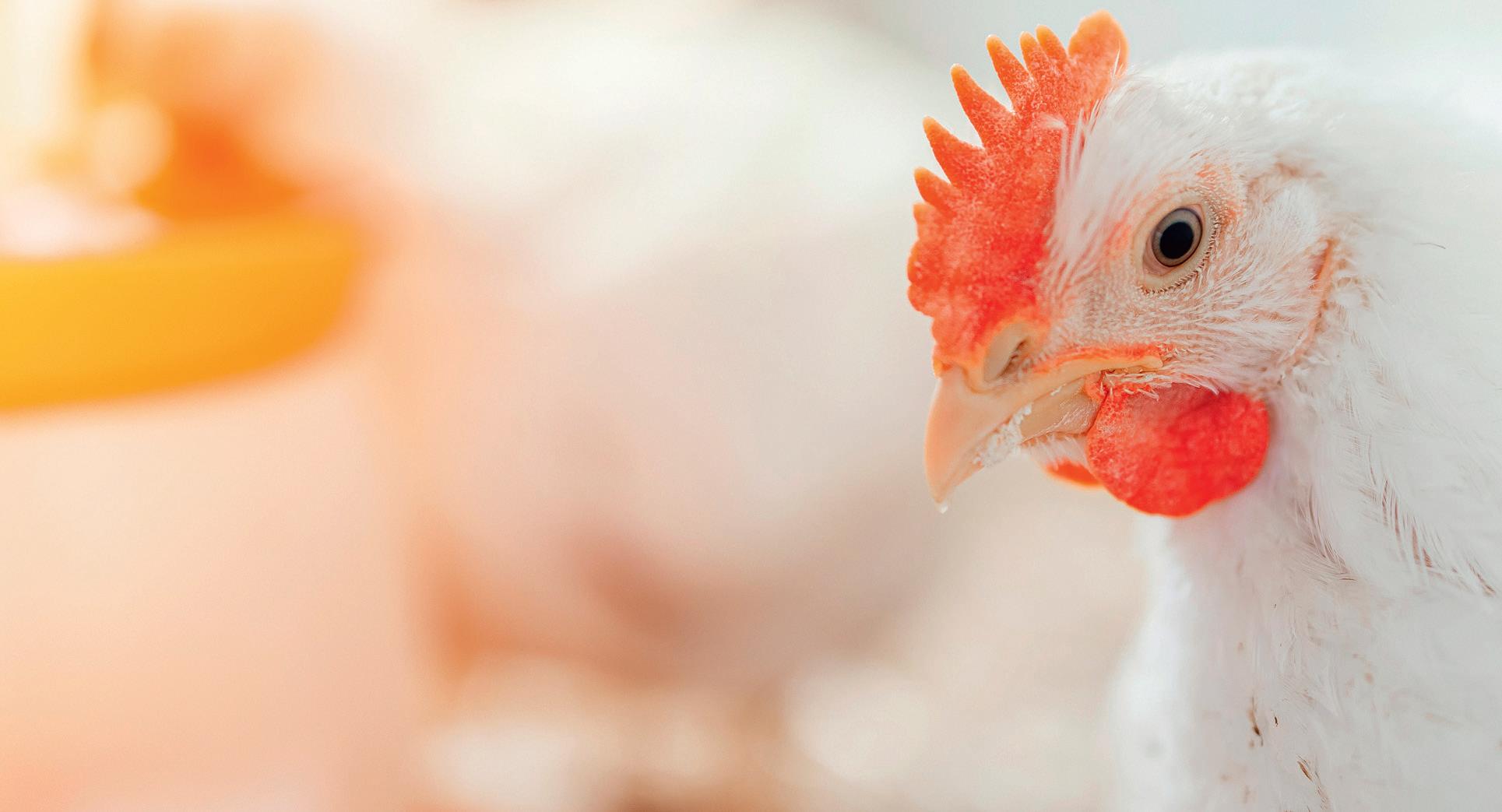
Feed Compounder March/april 2024 page 15 Inneus_multispecies_ADhp_Eng_202403
metexanimalnutrition.com Tailored for animal, inspired by nature

Milk Matters
By Christine Pedersen Senior Dairy Business Consultant
The Dairy Group
christine.pedersen@thedairygroup.co.uk
www.thedairygroup.co.uk
PROSPECTS FOR MILK PRICES AS WE HEAD INTO THE SPRING FLUSH.
The dairy market has been in the doldrums throughout February with Cream, Mild Cheddar and SMP slipping by 1-2% whereas Butter increased by 2%,” says my colleague Nick Holt-Martyn of The Dairy Group. He goes on to say “the excitement with Butter is through EU markets which in the last 2 weeks jumped 3% to suggest March will see an uplift in the UK market.
Graph 1 shows the UK market returns through 2023 based on the milk utilisations as reported by Defra. The downward trend that set in through autumn 2022 continued until autumn 2023 when the decline in autumn milk supply caused markets to stage a partial recovery. There has been a slow easing in markets from December 2023 as the Christmas seasonal effects receded.
With Easter in March this year, the recent rally in the butterfat market could just be another seasonal effect. Overall market returns and as a
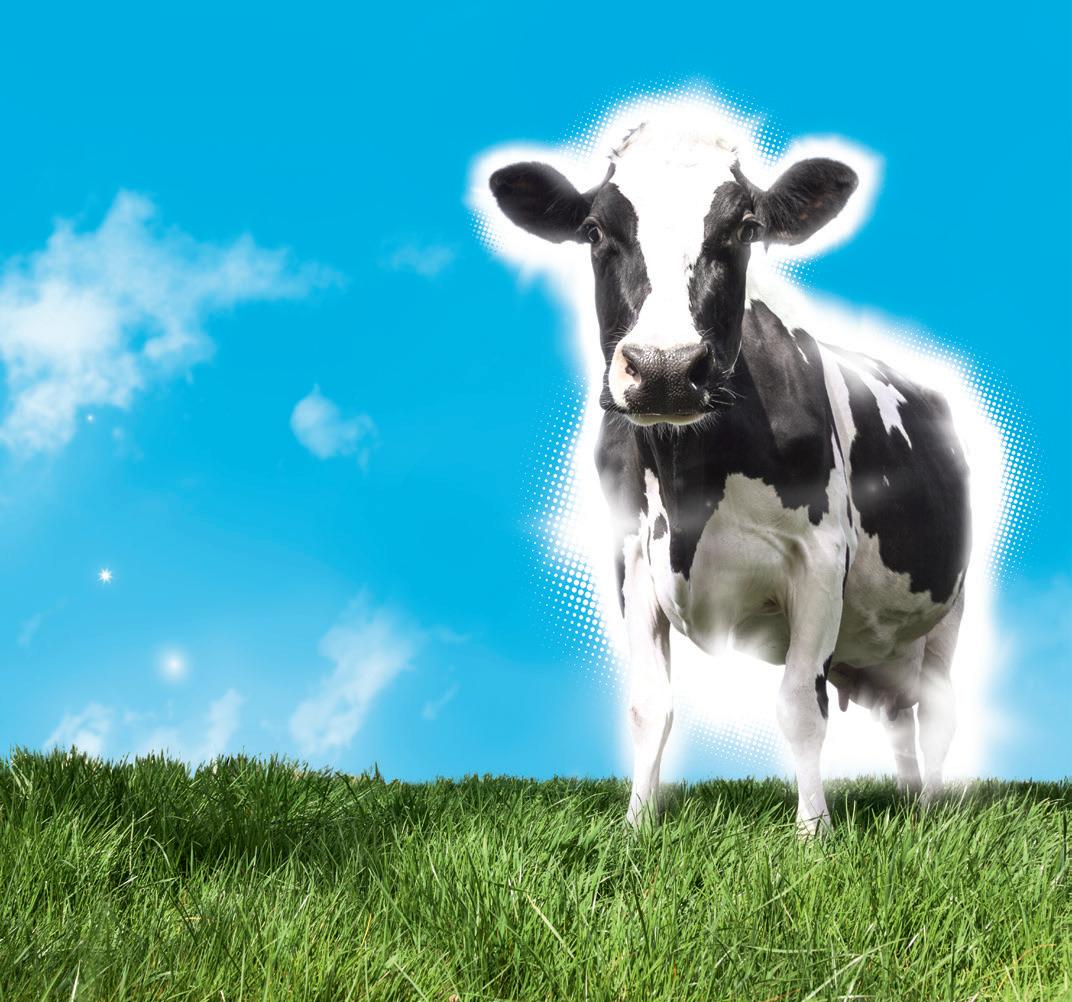







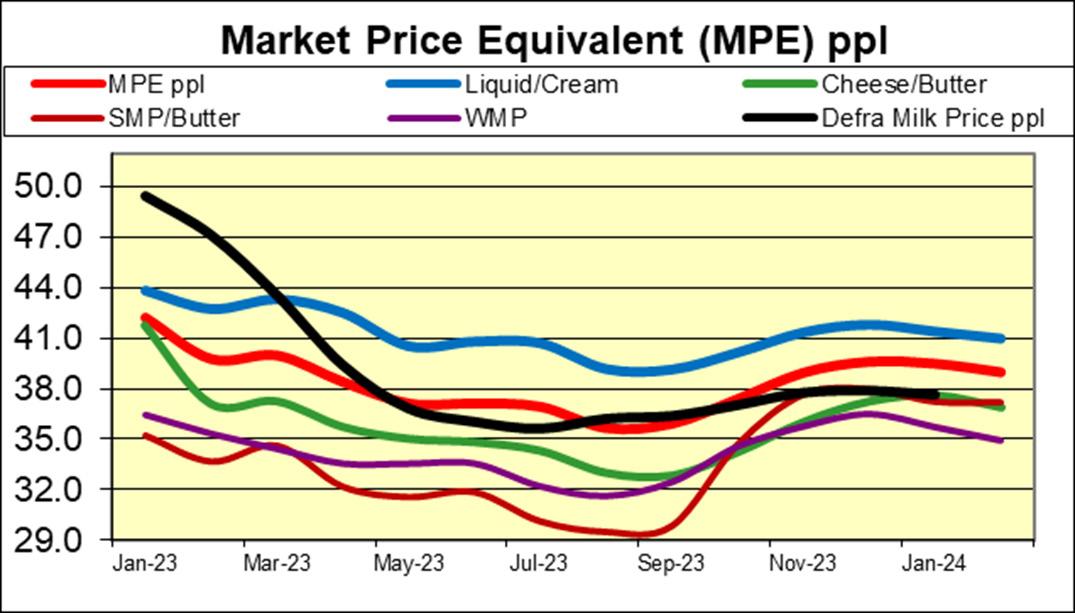
result farmgate prices have been flat through the late autumn and winter with February continuing that trend.
The following graph shows the deviation in supply from the 3 year average through autumn 2023 and the recovery towards the average in 2024. The sluggish start to spring however will dampen expectations of a strong spring flush and help to support markets with a flagging supply. With supply close to the 3 and 5 year average and European economies flirting with recession, thereby holding back demand, there is little sign of a change unless supply drops behind. Spring weather holds the key to spring and summer market returns and farmgate prices.

Milk production in the USA is slipping back while both the EU and New Zealand are volatile, with negative months being followed by positive months. The EU supply position through the spring will be as important as the UK domestic supply in setting the direction of UK pricing. Very often the weather does not discriminate and affects the UK, Ireland and the dairy nations of northern EU to a greater or lesser extent. Globally milk production is still drifting down, but as yet markets are showing little concern about future milk supply. Milk production costs are still high despite weakening feed prices. Oil prices have risen throughout the last 3 months helping to keep inflation above the long term average. Fixed costs have remained much higher than 2 years ago and will keep rising on the back of higher inflation. The rising fixed costs maintain the higher cost of production and the need for higher milk prices for milk production to be profitable. There is the expectation of higher feed and straw prices in 2024/2025 as land is taken out of cereal production due to adverse weather and margins. There is anecdotal evidence of land being diverted into high-value SFI actions instead of cereals, a risk compounded by the
page 16 March/april 2024 Feed Compounder Comment section is sponsored by Compound Feed Engineering Ltd www.cfegroup.com
Elensis For Feed Industry since 1964 SECURES ENERGY +1.2 LITRES across different context of production A COST-EFFECTIVE WAY TO IMPROVE AND SECURE PERFORMANCES IN CHALLENGING CONDITIONS The most efficient VFA for improving energy efficiency INCREASES PROPIONATE Works throughout the digestive tract to enhance energy efficiency IMPROVES TOTAL STARCH DIGESTIBILITY -5 % of methane for less environmental impact REDUCES METHANE Contact for more information: JAMIE-LEIGH DOUGLAS on +44 7586 323955
Graph 1: Source - The Dairy Group, EU Milk Market Observatory & AHDB
wet weather through the autumn and winter. The combination of weak supply, weak margins and weak markets suggest something is going to change soon or farmers will look seriously at the alternatives.
MARKET PRICES
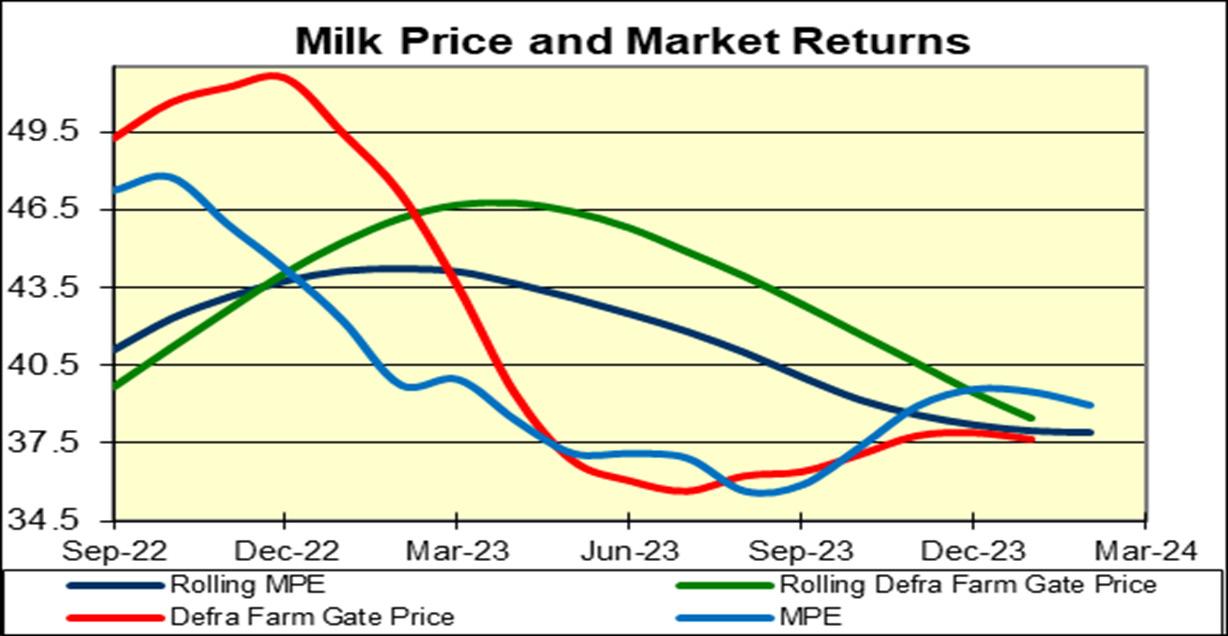
The Market Price Equivalent (MPE) reduced in February to 39.0ppl (-1.3%), up 3.3 ppl (9.3%) in the last 6 months and down 0.8ppl (-2.0%) year on year. Liquid retail prices slipped to 65.0ppl, down 12.0% on the year and 1.4% in the last 6 months. UK supply reduced by 0.6% in January and is forecast to be down 0.8% in February (leap year adjusted). EU weekly commodity prices rose in February with Butter up (3.7%), SMP sectors rose to 6.0ppl from Liquid to WMP despite the weak market tone.

up (0.8%) and Whey (1.2%), even Cheddar managed to rise up 1.1%. The UK commodities were mixed with only Butter up 2.1% and the rest falling 1-2% with Mild Cheddar dropping 2.0%. The range across the
Farm Gate Price was provisionally up to 37.9ppl (+0.3%) for December but reduced in January to 37.7ppl (-0.6%). The farm gate price continues to track the MPE which has eased back from 39.6ppl in November to 39.0 in January. UK Milk quality seasonally eased back from the record levels in November and December to 4.32% Butterfat and 3.45% Protein in January. Our latest milk price forecast, based on current prices and the latest market returns, suggests the Defra farm gate price will rise to 38.7ppl in February, 39.0ppl in March and at 39.0ppl in April.
Landscape_124x178.qxp_Layout 1 21/12/2021 14:33 Page 1
Production in December was confirmed at 1226 M litres (-0.2%) and January was provisionally 1239 M litres (-0.6%). Our forecast for February is 1145 M litres (-0.8%) (1186 M litres due to the leap year) and March 1323 M litres (0.1%). The forecast for 2023/24 stays at 14.85 B litres (-0.4%). The weather changed its mind and reverted to record breaking wet conditions and yet again a drier forecast is now in place for March (we hope!).
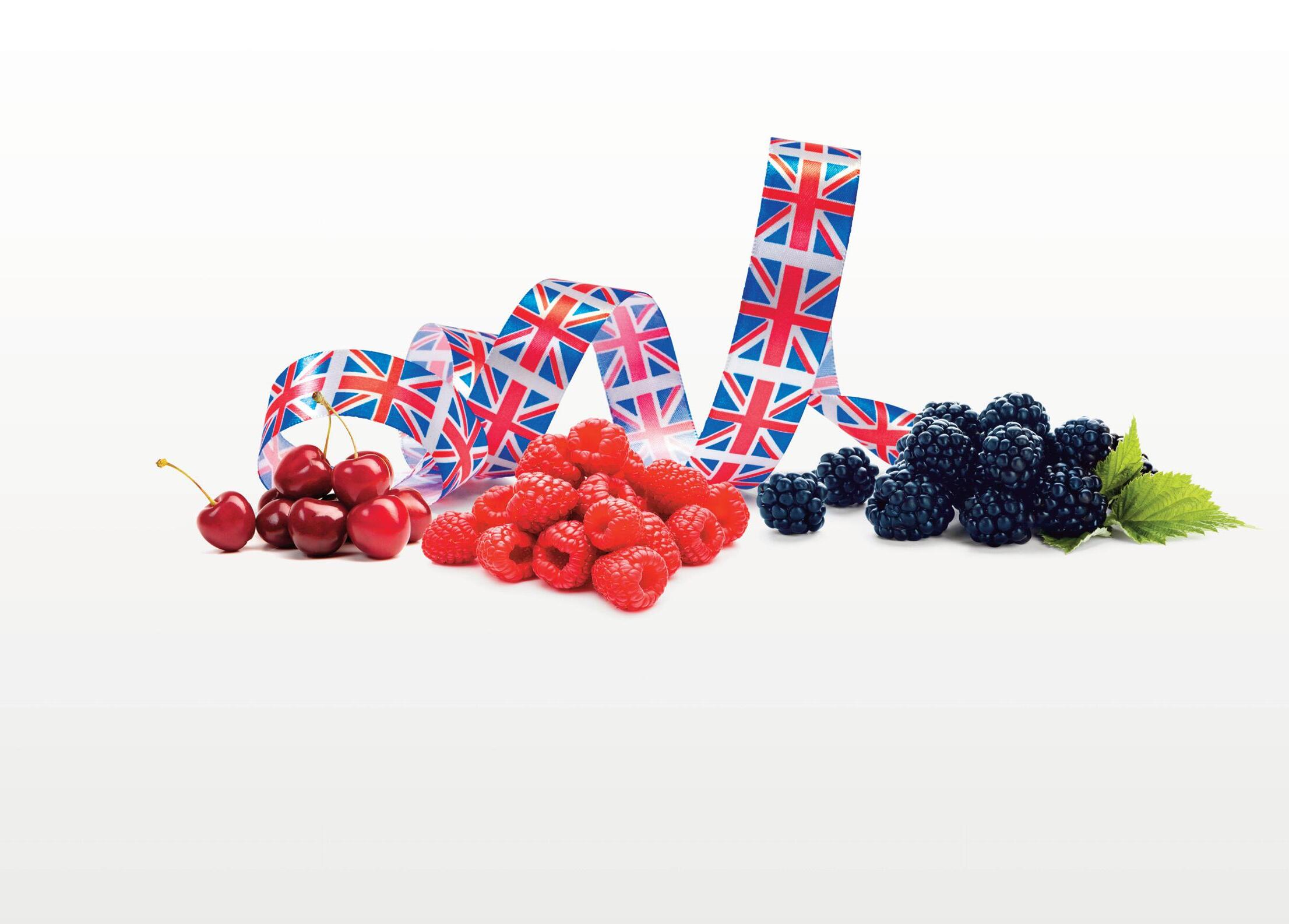
THE UK flavour manufacturer supporting British & Irish agriculture
Unlock the possibilities
To find out more about our unique Tastetite and other feed enhancement technologies visit our website at www.inroadsintl.com email info@inroadsintl.co.uk or call us on +44 (0)1939 236 555.
Feed Compounder March/april 2024 page 17
10461_Inroads_Feed Compounder Ad_Half

Ten Ways … to avoid inertia
By Robert Ashton
I’ve been a charity trustee for more than 30 years, and the fact that only in exceptional circumstances can you serve more than two, three year terms is good. It stops trustee Boards getting stale and bringing in new people should mean that long held assumptions can be challenged and new ideas tried.
But it’s still far too easy for trustees to see themselves as custodians and simply mark time, before passing the baton on to the next generation of trustees, who may be equally reluctant to innovate or encourage change. Let me give you an example.
One charity of which I’m a trustee sits on an endowed fund of around £800,000 from which it has become almost impossible to make grants. The money was left, for the support of impoverished Quakers, by a Quaker brewer in 1740, when the world was a very different place.
I have recently become the point of contact for grant applicants, and with only around 800 potential beneficiaries, I’m not likely to be kept busy processing applications.
For centuries, trustees have diligently managed the investment, but none, until now has explored negotiating widening the scope of the trust with the charity commission, so that more grants can be made. I’ll let you know if we succeed, but what is important is to make an effort. This is why I am reflecting on the importance of avoiding inertia. Here are ten things you might do to avoid failing into the inertia trap.
1. Believe that you can – Let’s be honest. The fear of failure is one of the main reasons we chose to sit on the fence rather than try to do something different. Yes, doing nothing is safe, but it’s also rather boring. Try being bold and be pleasantly surprised by what you can actually do.
2. Don’t take no for an answer – I’m afraid that the more people tell me something is impossible, the more determined I become to prove them wrong. Oddly, when someone says something cannot be done, it usually means that it can, but only if approached differently. Go on, give it a try!
3. Accept less than perfect – I’ve always been haunted by the phrase ‘fit for purpose’, which essentially means just good enough. Too often over the years I’ve strived for perfection, wasting effort in making things better than they need to be. Settle for good enough and you’ll get more done, in less time.
4. Sell the alternative – In my years of consultancy, I was often challenged to achieve something that had defeated the in-house team. It’s not easy, or wise to tell someone they’ve been going about something the wrong way, so always sell the idea that an alternative approach might just work. And please don’t gloat
if your solution does work. Old challenges are always more imaginatively viewed through a fresh pair of eyes.
5. Get off the sofa – personal inertia can inhibit us from tackling organisational inertia. In my experience, doing something is almost always better than doing nothing, so don’t despair and languish at your desk or in front of the TV. Get out and at least try to make your world a better place!
6. Practice change – Doing things differently gets easier the more you try it, and the more you discover that it can actually work. In fact I’d go so far as to say that seeing and doing things differently can become a way of life – a vocation even. You might even develop a reputation for being someone who can!
7. Step into the unknown – Of course you have to be aware of the risk of failure and the very real danger of making things worse, in your attempt to make them better. It’s always good to reflect on what could go wrong, before you embark on an attempt to make them better. Make sure too, that your motives are sound and can withstand critical scrutiny. That will help you if things don’t go as planned. Stepping into the unknown is good, providing you are prepared.
8. Look for examples you can learn from – There really is little new in the world, and much can be gained from taking what works in one context, then applying it in another. One of my favourite examples is how 19th century Suffolk engineer Richard Garrett got talking with American gunsmith Samuel Colt at the 1851 Great Exhibition. When he got home he built a production line, building steam engines in a similar way to how Colt made pistols. This delivered a fivefold increase in output from his factory.
9. Break habits and routines – How often have your heard someone say; ‘but we always do it this way’? Times change, technology changes, yet too often, people and practices don’t evolve to keep up. Make a habit of breaking habits; in fact make a habit of breaking habits!
10. Lead by example – All the most effective managers lead by example. Show people that you’re not afraid to take risks and not prepared to give up too easily. Creating a team culture where failures are considered learning opportunities rather than prompting a public telling off will also help.
While I started this month’s column writing about how a 280 year old endowed fund needed refocusing to remain useful, I’ll end by reflecting on how future generations might view the decisions we make today. It is perhaps a quirk of human nature that while we’re comfortable thinking about the time before we were born, thinking about how the world will continue to evolve after we have died can make us feel uncomfortable.
You only have to think back to your childhood to realise how much attitudes, behaviours and technology have changed. My work career for example began before computers were common or mobile phones invented. There’s little doubt that the next 40 years will see things change more than they did in the last 40. Let’s think and plan more adventurously.
page 18 March/april 2024 Feed Compounder Comment section is sponsored by Compound Feed Engineering Ltd www.cfegroup.com

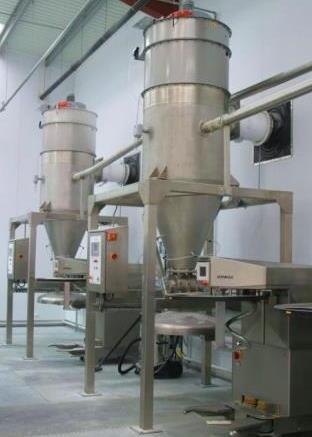










At Condex you’re not just buying a pellet mill: Peace of mind: No bearings, seals or service down time … Guaranteed for 5 YEARS for UK Single V-Belt drive; High inertia, smooth and efficient No oil leaks into feed or on press floor Designed, fabricated and built in Italy Support: Design, installation and project management services UK based stock and engineers 2-3 day Die and roll refurbishment Dies held in stock on request Experience: Sales technicians who understand the day-to-day requirements of a busy mill >50 years manufacturing experience at La Meccanica Condex Ltd - established in 1980 www.lameccanica.it …… Contact us to discuss your requirements WHITE CROSS, LANCASTER, LA1 4XQ Tel: 01524 61601 Email: info@condex.co.uk Web: www.condex.co.uk 01829 741119 admin@croston-engineering co uk Supporting manufacturers since 1976 with solutions in bulk handling, storage, and pneumatic and mechanical conveying, we have a wealth of experience for you to rely upon. croston-engineering.co.uk Design and Implementation New system solutions Modifications to systems Software improvements Minor ingredient additions Water dosing solutions Ongoing Support Critical Spares and Parts Emergency repairs DSEAR Reports Site surveys Fault finding Servicing and Maintainance Equipment Servicing Silo and pipeline cleaning Infestation works Calibration and certification Continuity and Earth testing
Green Pages Feed Trade Topics from the Island of Ireland
OPPORTUNITY BECKONS FOR IRELAND’S MALTING BARLEY SECTOR
Diageo and Boortmalt are both confirming their growing commitment to Ireland’s malting barley sector.
The backdrop for these developments was the 2024 Diageo / Boortmalt Malting Barley Awards.
Peter Nallen is chief operations & agriculture officer at Boortmalt. He confirmed that further investment is planned for the company’s malting facility at Athy in Co Kildare, adding:
“The new development programme will further enhance the capacity of Athy up to 200,000t per annum.
“When completed this will constitute a doubling of the site’s capacity, relative to 2010 when Boortmalt took control of the site.
“Our two passions for the business are innovation and sustainability.
“With this in mind, I can also confirm that our expansion for Athy will be carbon neutral.
“This is being achieved with the development of some very innovative technologies, focussing on the use of heat pumps. All of these have been developed in-house and are now patented.
According to Nallen, the spring barley season in 2023 was extremely challenging.
He cited the major split in the planting season with the months that followed throwing up major challenges with regard to crop yields and quality.
“But despite all of these problems, growers and the rest of the supply chain still managed to do what is needed.”
Nallen also referenced Boortmalt’s ongoing commitment to a transparent pricing model for malting barley growers.
He said: “We believe the current pricing system to be very fair. It is very transparent, giving farmers direct control over the pricing of the grain that they produce.”
Meanwhile, Diageo is confirming that its commitment to develop a new €200M brewery at Newbridge in Co Kildare remains a priority.
Aidan Crowe, the operations director at Saint James’ Gate Brewery, also spoke at the Malting Barley Awards ceremony. He confirmed that Diageo remains committed to reducing the carbon footprint of its entire operation in every sense.
According to Crowe, the adoption of regenerative agricultural practices by farmers will be a key part of this strategy moving forward.
He added: “Our farm trials in this area continue apace. It is our intention to make the results of this work widely available.”
Reflecting on the quality of the barley produced courtesy of the 2023 harvest, Crowe confirmed its total suitability from a brewing perspective.
“This is despite all the challenges that confronted growers last year.
We are currently using a 50:50 mix of 2022 and 2023 barley. And, so far, everything has gone according to plan.
Last year 1.3 billion pints of Guinness were brewed at St James’s Gate in Dublin.
FANE VALLEY TO PARTNER WITH NUFFIELD FARMING SCHOLARSHIPS
Fane Valley Co-op will partner with the Nuffield Farming Scholarships Trust in delivering, possibly, one of the most significant agricultural events taking place on the island of Ireland this year.
Belfast will host the 2024 Nuffield Farming Conference over three days between Tuesday 19 November and Thursday 21 November.
The event, which will include presentations from around 30 Nuffield Scholars, looks set to attract 400 plus delegates from across the UK and Ireland.

Fane Valley Co-op will partner with the Nuffield Farming Scholarships Trust in delivering the 2024 Nuffield Farming Conference. Belfast will host the event in November.
Adding to the significance of the conference coming to Belfast is the fact that Northern Ireland has been used to pilot Nuffield’s NextGen Scholarship programme.
This is an exciting initiative that will provide two young people from Northern Ireland, aged between 18 and 24 years of age, with a unique opportunity to study the UK’s dairy industry.
Full details of how the scholars progressed will also be profiled at the November conference.
Speaking at the launch of the sponsorship agreement, Fane Valley Group Chief Executive, Trevor Lockhart MBE, commented: “Fane Valley is delighted to partner with the Nuffield Farming Scholarships Trust in support of the organisation’s annual national Nuffield Farming Conference, to be held in Belfast later this year.
page 20 March/april 2024 Feed Compounder
“As an agricultural cooperative, we embrace collaboration, innovation, and the advancement of agriculture, and we believe the lifechanging and life-shaping scholarships available through Nuffieldare making a very positive contribution to the development of the next generation in our sector.”
He continued: “For over seventy years Nuffield has been committed to the education and up-skilling of Scholars, enabling them to study farming systems, techniques and new technologies across the world and bring this knowledge back home, to their respective roles.
Fane Valley applauds those passionate individuals seeking to develop, both personally and professionally, through their scholarships.
“Fane Valley is privileged to promote and support the work of Nuffield and their efforts in advancing agriculture.”
Wyn Owen, chair of the Nuffield Farming Scholarships Trust, has welcomed Fane Valley’s substantial commitment to the Belfast conference.
He commented: “Belfast is a fitting location for the 2024 Nuffield Farming Conference, and we’re delighted to be coming back to such an important region to UK agriculture.
“We are proud to partner with Fane Valley, an iconic name in Northern Ireland, and will deliver a conference to remember with their support.”
Tom Rawson, vice-chair of the Nuffield Farming Scholarships Trust, added: “Nuffield Farming’s return to Belfast is especially distinctive after launching the pilot for our Next-Gen Scholarship programme to the region’s dairy sector.”
He concluded: “Our first Next-Gen Scholars will share their experiences from their dairy sector study tour at Belfast 2024, and we hope the programme will go on to develop young talent in the industry nationwide for many years to come.”
Fane Valley Co-operative Society is a progressive agricultural and food processing business with interests in animal feed manufacturing, agricultural supplies, livestock identification and the provision of agronomy & forage services, porridge oats & breakfast cereals, the production of beef drippings, the processing of edible offals and fully integrated duck processing and production.
The business operates across multiple locations in both the UK and Ireland.
Formed in 1903 Fane Valley remains 100% farmer owned. The business, which employs almost 1,000 people, continues to develop through a strategy of organic growth and targeted acquisitions.

FORTRESS FOOD PROGRAMME CONTINUES TO DELIVER FOR IRELAND’S COMPOUND FEED SECTOR
Robin Irvine is the director of the Northern Ireland Food Fortress programme, recognised internationally as a world-leading risk management and feed quality assurance scheme.
The initiative has a footprint that now encompasses the animal feed compounding sector, operating across the island of Ireland.
Irvine spoke at a recent mycotoxins seminar hosted by Alltech, Queen’s University Belfast and the Agri-Food and Biosciences Institute.
Courtesy of his presentation, he reminded delegates of the crises created by the dioxin in pigmeat crisis of 2008 and the subsequent challenges created by aflatoxin residues detected in dairy products, produced in Ireland.
Both issues were the result of mycotoxin-contaminated animal feed.
The scale of the dioxin crisis was more than significant. It resulted in 30,000 tonnes of pig meat product being recalled and destroyed.
Additionally, over 170,000 pigs and 5,700 cattle from farms that received contaminated product were culled on a precautionary basis.
The contamination was eventually detected by the national monitoring programme leading to multiple farm closures, major animal welfare issues and a global recall of Irish pork, resulting in the loss of an estimated 1,800 jobs.
The incident was estimated to have cost the Irish economy over €120,000,000.
Robin Irvine commented: “The required lessons were quickly learnt. The end result was a decision taken by feed compounders in Northern Ireland, committing the industry to a comprehensive system of checks and state-of-the-art analysis, where all raw materials and compound feeds are concerned.
“This has evolved into the Food Fortress system that we have in place today. It has been fully operational for the past decade.
“Over the years, the scheme has evolved to include raw material importers and feed compounders in the Republic of Ireland.
“All are contributing to a risk management system, that is recognised as best in class the world over.”
The Food Fortress representative confirmed that Northern Ireland’s agri food sector generates an annual turnover in the region of £6 billion.
Feed Compounder March/april 2024 page 21 Alltech.com/ireland AlltechNaturally @Alltech Sarney | Summerhill Road | Dunboyne | Co. Meath Choose the proven leader for all of your feed additive needs
“Approximately 75% of this output is exported. Two thirds of this produce is destined for Great Britain with one third exported to the European Union and beyond.
“All of this represents a major contribution to Northern Ireland’s economy, both in terms of the monies generated and the jobs created.”
According to Robin Irvine, 72 feed compounders in Northern Ireland and seven raw material importers are fully aligned to Food Fortress.
He further explained.
“The comprehensive analysis of raw materials and compound feeds takes place on a regular and ongoing basis.
“Key to making this happen is the
“Taking this approach has allowed feed compounders to manage the risk, where mycotoxins in rations are concerned. “
Looking ahead, Robin Irvine also predicted the introduction of tougher regulatory standards, where mycotoxin contamination levels in compound feeds are concerned.
He concluded: “However, the very real, on-farm, challenge caused by mycotoxins when present at well below guideline limits must be actively addressed by the feed industry.”
INCOME STABILISATION SCHEME TO BE PROPOSED FOR IRISH TILLAGE FARMERS
An income stabilisation scheme will underpin the final proposals put forward by Ireland’s Food Vision Tillage Group.
Farm Minister Charlie McConalogue has already indicated his potential support for such a measure and has asked for full details of a potential scheme to be fleshed out over the coming weeks.
The Tillage Vision Group is chaired by former Irish Farmers’ Journal editor Matt Dempsey.
He has confirmed that the proposed income stabilisation scheme would mirror similar support measures currently operating in the United States.
Dempsey explained: “The full detail has yet to be worked through. Our plan is to publish the final Vision Group report over the coming weeks.”
The Tillage Vision Group chair has specifically highlighted the extremely low carbon footprint of Ireland’s arable sector.
Current figures indicate that greenhouse gas emission values linked to crop production in Ireland are 15% of the rate for dairy farms and 25% of that for beef farms.
“On that basis alone, tillage farmers would be justified in receiving an area payment of between €75 and €100/ac,” said Dempsey.
The Vision Group representative also confirmed that the Irish government will commit to support schemes that underpin a sustained tillage area of 400,000ha.
Matt Dempsey again:
“The money is there to help make this happen.”
Other proposals that can be expected from the Tillage Vision Group will include calls for the establishment of an oilseed rape crushing plant in Ireland and the provision of capital support measures to facilitate the greater use of ‘home grown’ beans in compound feed rations.”
IN MY OPINION...............RICHARD HALLERON
Crop insurance has to be looked at as a safety net option for tillage.
Irish tillage farmers must look at the feasibility of crop insurance as a future safety net option for the sector.
They can’t continue to go cap in hand to the government, every time we get a poor growing season.
The reality is that crop insurance works in countries like the United States. So there is no reason why a similar system cannot work in this part of the world.
Ireland is not the only country to experience extremes of weather. Here excessive rain is, invariably, the issue. In the rest of the world, drought can wreak untold damage on growing crops.
The question then becomes the following: who pays?
The obvious vehicle to promote a debate on crop insurance is the Tillage Vision Group.Its membership can both endorse the principle involved and come up with proposals on how best to pay for it all.
Obvious contributors in this regard include the European Union and the Irish government.
But should Irish growers also be included in the funding mix?
I think so, on the basis that a bespoke scheme for Irish tillage can be delivered.
The proposed measure would add to the support schemes already in place through the Common Agricultural Policy. And it would only kick in when specific crop failures can be identified.
Everyone agrees that the Irish tillage sector must be expanded. This principle is already enshrined within the government’s response to climate change.
But this will only happen if tillage farmers have certainty that they can survive the ebbs and flows of the Irish weather.
The events of the last 24 months make this point perfectly. Harvest 2022 was one of the best on record. Growers secured excellent yields and comparable prices. Fast forward 12 months and the polar opposite scenario was unfolding: disappointing yields and extremely weak farm gate prices.
In my opinion, a crop insurance scheme would take the extremes out of the tillage equation, giving growers an opportunity to plan for the future with a degree of certainty.
So much for the future: what about the here and now?
There has been a general welcome for the €7M tillage support scheme, confirmed by Ireland’s farm minister, Charlie McConalogue, in the wake of the disastrous 2023 harvest. And rightly so!
The Co Donegal man gets a fair amount of stick from any number of agri-stakeholder groups on an almost daily basis. So it’s only right that he should get the plaudit when that extra mile is secured on behalf of Irish farmers.
page 22 March/april 2024 Feed Compounder
CFE and CPM Seminar
Highlighting Advancements in Pellet Milling Technologies, Operations and Industry Insights
On Wednesday, 24th and Thursday, 25th April, CFE Group and CPM will hold an industry Seminar at the Mercure Hotel in Haydock, U.K.
T he seminar’s main focal points will be: Evaluation of Energy Efficiency Technologies, Hygienic Feeds Equipment, Steam and Conditioning, Pelleting, Grinding and most recent legislation relating to Cooling. Industry experts, as well as engineers from CFE Group and CPM, will shed light on pelleting machine design, efficiency optimisation, and sustainable manufacturing practices.
The seminar will kick off with an opening session introduced by CFE’s CEO, Con Lynch, setting the stage for two days of learning and networking opportunities. Attendees will have the opportunity to engage with speakers from leading organisations such as CPM, IVS, and Geelen, who will share their knowledge and expertise on a range of compelling topics.
The agenda will have informative sessions designed to provide valuable insights and practical knowledge. Highlights will include discussions on Conditioning/T-Shape Paddle Technology, Steam Utilisation, Cooling and New Dust Emission Legislation, offering attendees a comprehensive understanding of key challenges and opportunities in pellet milling operations.
A feature presentation on Direct Drive Pellet Mills will compare the performance of belt driven machines versus direct drive machines. Another key topic on the agenda is the CPM Hammer Mill. Here, attendees will learn about consistent particle size and energy-saving techniques essential for optimising feed milling processes. Insights from industry leaders will give participants a greater understanding of how to achieve process excellence and sustainability in their operations.



Over the duration of the seminar, attendees will have an opportunity to network with fellow professionals and industry specialists, to foster connections and collaborations. The seminar will also include tours of CFE’s engineering facilities at Arrox Park and Haydock Lane. At Arrox Park, participants will be able to view and examine a pellet station featuring Double Conditioning and a CPM 7936-12 Pellet Mill with Lineator and RSM. The Haydock Lane visit will give customers the opportunity to tour Europe’s most up-todate Die and Roll Refurbishing facility. Both visits will be structured to allow customers, speakers, and industry professionals to have Q&A sessions in an informal setting and to exchange ideas and share experiences.

On Wednesday night, CFE’s Die and Roll supplier, Smepro, will host a dinner for all seminar attendees and participants.
Whether you’re a seasoned professional or a newcomer to the industry, this CFE - CPM Seminar will offer a unique opportunity to stay abreast of the latest trends and developments in pellet milling operations. Don’t miss this exceptional opportunity to expand your understanding of the pelleting processes and engage with industry experts. Mark your calendars for the 24th and 25th of April 2024, and join us at the Mercure Hotel in Haydock for the CFE Group and CPM seminar.
Please email: info@cfegroup.com if you have any questions.
Seminar Speakers
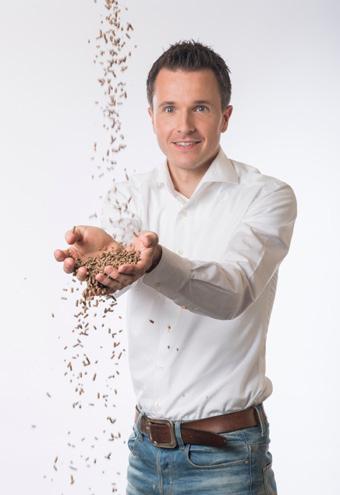


Feed Compounder March/april 2024 page 23
Arthur vom Hofe Sales and Product Manager CPM
Gert-Jaap Dekker Export Manager at IVS
Carl Robinson General Manager CFE
Raymond Blom Area Sales manager Geelen- Counterflow
Jorn van de Burgwal Area Manager bij CPM
Nigel Hillyer Consultant to CFE Group
How to Stay Competitive and Profitable in Feed and Petfood Production?
With BESTMIX Software
10 essential software features that every feed and pet food producer needs
In an ever-evolving landscape, feed and pet food producers face a myriad of challenges, from managing raw material variability and fluctuating prices, to meeting stringent quality standards, labour shortages, and many more. How can you stay competitive and profitable in such a dynamic environment? Enter industry-specific software, that helps meet the demands of the industry. Here are the most essential functionalities that help you stay competitive and keep your customers happy.
• Procision: Managing complex raw material variability, balancing cost-effectiveness with product quality, and ensuring operational efficiency are very challenging for feed and pet food producers. BESTMIX Procision provides the solution by optimising raw material usage, reducing the need for safety margins, and streamlining operations. Incorporating Procision into your operations guarantees cost savings, consistent product quality, improved operational efficiency, transparency, traceability, and adaptability to market fluctuations.
• Multiblend: Optimally redistribute allocation of ingredients, even in volatile markets. Easily (re)calculate recipes, assess buying opportunities, and make swift and informed purchasing decisions. In a world where adaptability and data-driven insights are paramount, BESTMIX® Multiblend is the key to overcoming challenges, making sound decisions, and securing your business’s future in the ever-changing feed and petfood producing markets.
• Blend Optimisation: Enhancing Efficiency and Cost Savings in the Pet Food and Premix Industry. By using Blend optimisation
you design blends or premixes that can be tailored to serve multiple end products. By embracing this innovative approach, manufacturers can simultaneously enhance their efficiency and lower production costs while reducing their environmental impact. This not only secures a brighter future for the industry but also ensures that our beloved pets receive the best nutrition possible.
• Ration calculation: Effortlessly handle all aspects of formulation, while empowering advisors and sales teams with integrated ration functionality for individual animal precision. BESTMIX® Recipe Management offers a groundbreaking solution, uniting multiple species and different industry standard models in one central platform. Premix and feed manufacturers can effortlessly handle all aspects of formulation, while empowering advisors and sales teams with integrated ration functionality for individual animal precision. Tailor your approach with a choice of standard animal models or create custom ones, bridging the gap between manufacturers and farmers.
• Quality Control: Start getting real, tangible returns out of your quality data. Spend your time more efficiently by automating sample management and thus leaving more time to actually improve your quality processes based on data driven decisions. Quality control within our industry comes with a set of complex challenges ranging from risk mitigation at ingredient sourcing, overseeing the quality of (semi-) finished products, keeping up with quality standards and legislation, etc. Our cloudbased quality control software solution is tailored specifically to surmount these challenges indigenous to the industry.
page 24 March/april 2024 Feed Compounder
Ensure precise raw material verification Cloud Software Meet sustainability requirements Streamline procurement operations Compliant labeling Tangible returns out of quality data Ration calculation for individual animal precision Multiblend: optimally redistribute allocation of ingredients, even in volatile markets Procision: managing complex raw material variability FEDIAF & AAFCO inclusive Save Money Optimized raw material sourcing
• Bestmix Identification : a game-changer for the premix industry, offering a swift and efficient solution to ensure precise raw material verification at the intake gate. Elevate your quality assurance, avoid costly recalls, and solidify your position as a symbol of excellence in the food and feed industry. In an industry where raw materials can be visually deceptive but have a profound impact when mixed incorrectly, accurate identification is of high importance. Bestmix Identification acts as a guardian at the intake gate, preventing faulty raw material intake that could compromise end product quality.
• Compliant Labeling: Easily create labels that meet UK, EU, US, and Canadian regulations with Bestmix Recipe Management software. With our Labelling-as-a-Service functionality, you can seamlessly integrate BESTMIX ERP or other, third-party software to automate your label generation process.
• Cloud solution: In a world where connectivity is key, Bestmix’s SaaS platform ensures your team is always connected, collaborating seamlessly, and driving productivity, no matter where they are located – in the plant or out rationing in the field. Embrace the power of delighting your customers in real-time and gaining a real competitive advantage. In this dynamic and rapidly evolving feed industry, the future isn’t a distant vision—it’s here and now, and it’s powered by Bestmix Software. As the trailblazer in Cloud and SaaS solutions,
Bestmix is shaping the way forward, with a complete solution - revolutionising how feed businesses operate and succeed.
• Sustainability: How to reduce environmental impact, boost animal health, and maintain cost-efficiency? As to sustainable production: what is required from legislation and from the market? How can I implement it in my company?
At what cost? Why should I even consider introducing sustainability in my company? Discover how our cuttingedge technology empowers you to reduce environmental impact, boost animal health, and maintain cost-efficiency. Contact us at hello@bestmix.com to find out more.
• ERP suite: streamlining procurement, sales, operations, finance, and risk management processes. In the nutrition industry, achieving operational excellence is key to staying competitive and driving growth. BESTMIX ERP Suite empowers businesses to achieve efficiency, compliance, and customer satisfaction. Industry best practice solutions cover critical areas such as recall and traceability, safety and compliance, quality and production, recipe development, label management, customer and product pricing, transport and distribution, and warehouse management.
Interested in learning about BESTMIX Software?
Get in touch via hello@bestmix.com


Feed Compounder March/april 2024 page 25
www.bestmix.com • Reduce costs and prevent risks • Optimize your entire product chain • Guarantee higher-quality products BESTMIX® Feed Formulation, Quality Control, Ration Calculation and ERP solution Scan to learn more: BESTMIX® Software: The best solution in challenging times
Mycotoxins in UK and Irish Feed: dsm-firmenich World Mycotoxin Survey Results
Mycotoxins, naturally produced by fungi, are a great concern within the feed industry. The impact of mycotoxins can significantly affect the health, performance, welfare, and profitability of farm animals. To gain insight into the mycotoxin contamination levels of different feed materials, dsm-firmenich Animal Nutrition & Health analysed thousands of feed samples internationally to compile the findings of the latest dsm-firmenich World Mycotoxin Survey.
The most recent survey report has shed light on the implications mycotoxins are having for the UK and Irish feed industry. In recent years, survey data has shown that the feed industry in the UK and Ireland has seen that both homegrown and imported materials can pose a significant risk. While the incidences of mycotoxins in wheat and barley have slightly decreased this year, a significant risk persists in maize and other alternative feed ingredients.
The Results
The mycotoxin survey findings indicate that maize sourced from various mills across the UK and Ireland exhibited a high concentration of the mycotoxin DON, with a maximum level of 3,910 ppb and an average of 1,432 ppb among positive samples. A significant proportion of this grain tested positive for deoxynivalenol (DON), with 70% of all samples indicating a positive result. Alternative feed ingredients used in the UK and Irish feed industries, including wheat feed, biscuit meal, oats, and rye, also exhibited the presence of various mycotoxins, with ergot alkaloids being particularly notable. These results underscore the importance of vigilant monitoring and strong control measures throughout the entire feed production chain, for both traditional grains and alternatives used.
On the other hand, wheat, a native crop from the UK and Ireland, had a much lower prevalence of mycotoxins, with only 8% of samples testing positive. However, the mycotoxin Zearalenone (ZEN) was found in 14% of these samples. Barley demonstrated a similar mycotoxin profile to wheat, with the prevalence of DON, ZEN, and T-2 reported at 7%, 10%, and 17%. Nivalenol was also identified in barley samples.
It is important to note that B-trichothecenes represent the most prevalent group of mycotoxins in moderate climates and analysing samples for just DON alone can result in substantial underestimation of mycotoxin risk. For example, although grass silage samples were limited in number, B-trichothecenes were identified as a potential risk, with levels reaching up to 1,700 ppb. Maize silage analysis in recent
years has also highlighted a problem, with these feeds demonstrating consistent contamination with B-trichothecenes.
The concern for mycotoxins extends beyond domestically sourced feed ingredients. Imported raw materials, such as wheat, maize and soya products also present a potential risk. Also, straws used for bedding or enrichment can pose a threat, as ingestion can still occur. For example, results have shown a significant presence of B-trichothecenes in European straw, with a concerning prevalence of 79% and average levels exceeding 1000 ppb in 28 samples analysed.
The Impact of Mycotoxins on Animal Health
These findings highlight a potential concern for the feed industry, particularly due to the high DON contamination in maize, which detrimentally impacts animal health. Medium doses of DON may not cause immediate illness (acute mycotoxicosis) in animals but often have subclinical effects and besides that, long-term effects at these levels will continue to cause complications for animal health.
The presence of mycotoxins at moderate levels can directly suppress the immune system of farm animals, making them more susceptible to infections. This can lead to increased outbreaks of diseases, even in vaccinated animals as mycotoxins often interfere with the efficacy of vaccinations, rendering them less effective in preventing illness. Other effects of moderate doses of mycotoxins include disruption to gut health, reduced nutrient absorption and reproductive issues.
Minimising Mycotoxin Risks
To effectively mitigate these risks, implementing a robust mycotoxin risk management strategy is crucial. A precise and cost-effective mycotoxin risk management strategy has consistent monitoring, risk assessment, and a comprehensive intervention plan. Regular and continuous mycotoxin monitoring can identify their presence, contamination levels, and potential risks in feed materials. Frequent feed analysis aids in early mycotoxin detection and allows producers to take action before exposing animals to these mycotoxins. This approach not only safeguards animal health and farm productivity but it ensures the safety of animal products entering the wider food chain.
The European Food Safety Authority (EFSA) underscores the importance of implementing robust mycotoxin management strategies. EFSA continuously assesses the risks posed by different mycotoxins, evaluating their toxicity and their potential for animal exposure through
page 26 March/april 2024 Feed Compounder
contaminated feed. EFSA emphasises the need for robust mycotoxin risk management strategies throughout the food and feed chain. These strategies include frequent testing of feed and food samples, adherence to good agricultural practices and the implementation of mitigation strategies when contamination is detected.
It is important to note that EFSA’s guidance constantly evolves as scientific understanding of mycotoxins improves. In addition to a recent update acknowledging that lower levels of certain mycotoxins like fumonisins and DON may pose a greater health risk than previously thought, EFSA’s scientific panel has also issued recommendations for lower reference points for ochratoxins in pigs, hens, and growing chickens based on newly appeared peerreviewed publications over the last years. Furthermore, the panel recommended lower reference points for DON and fumonisins in poultry (broilers and turkeys) as well as horses. These updates highlight the importance of staying informed about scientific advancements and adapting mycotoxin risk management strategies accordingly. By adhering to frequent testing, implementing effective mitigation strategies, and staying vigilant about evolving scientific knowledge, the feed industry can significantly reduce the impact of mycotoxins on various animal species and safeguard the integrity of the food chain.
Safeguarding the Feed Chain for a Healthy Future
The dsm-firmenich World Mycotoxin Survey reveals valuable insights into the presence and potential risks of mycotoxins in UK and Irish feed ingredients. While some positive trends, such as a decrease in mycotoxins in wheat and barley, have been observed, the report highlights the continued presence of concerning levels of DON in maize and other alternative feed ingredients. This, coupled with the potential threat from bedding, i.e. straw, or imported feed materials underscores the need for robust mycotoxin risk management strategies throughout the feed production chain.
Implementing a comprehensive strategy involving consistent monitoring, risk assessment, and effective intervention measures is crucial for safeguarding animal health, productivity, and ultimately, the safety of the food chain.
Ensuring animal health, productivity, and fortifying the safety of the food chain, a potent strategy that includes regular monitoring, comprehensive risk assessment, and effective intervention processes is indispensable. Reflecting upon the survey results a spokesperson for the company stated: “At dsm-firmenich Animal Nutrition and Health, our industry experts are passionately dedicated to providing unwavering support to the feed industry. Strategically integrating effective mycotoxin risk management within your feed operation, establishing a robust system that not only takes into account present challenges but can also adapt and tackle future uncertainties with efficiency and precision.”
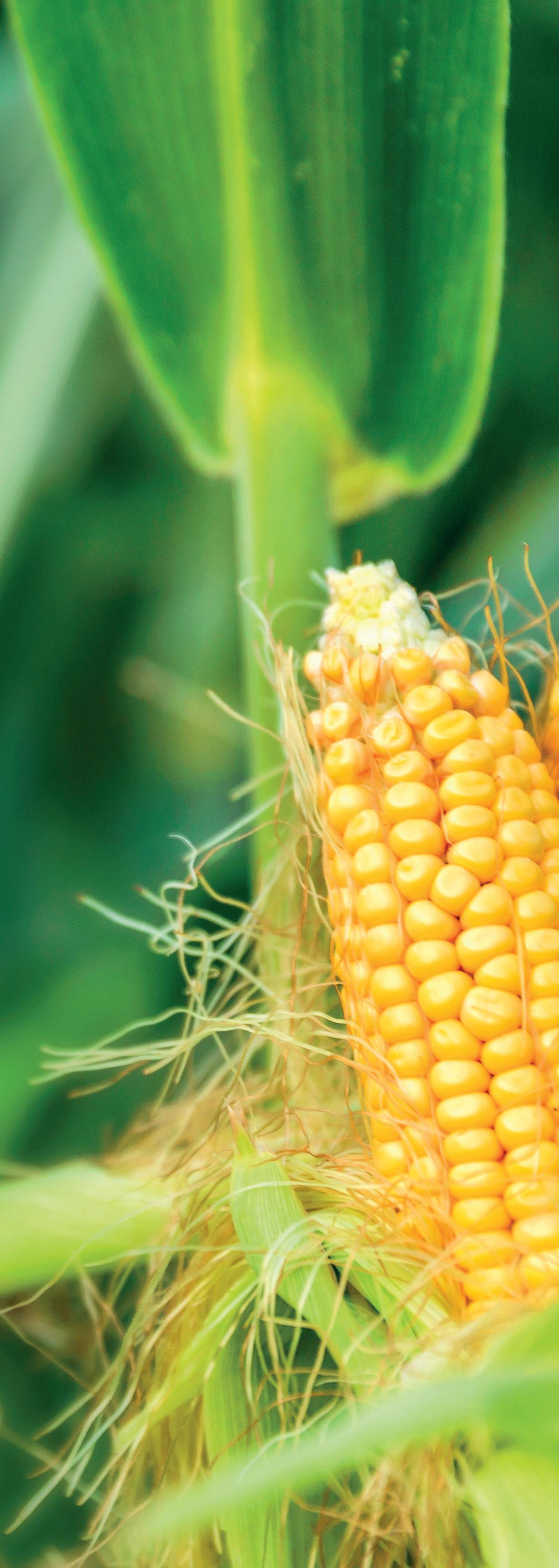
Feed Compounder March/april 2024 page 27
Powered by science to actively defend against multiple mycotoxins* With 3 combined strategies Mycofix ® Deactivate mycotoxins Activate performance Learn more at dsm-firmenich.com/anh Adsorption Biotransformation Bioprotection *Authorized by EU Regulation 1060/2013, 2017/913, 2017/930, 2018/1568 and 2021/363.
Leveraging Strategic Partnerships in the Feed Industry

In the feed industry, where tight profit margins and relentless competition is so paramount, efficiency is indispensable. From purchasing raw materials to managing inventory and optimising production and sales, every aspect of the feed mill operation demands meticulous attention to detail.
Inefficient buying practices can be a significant source of profit loss for feed mills, without a streamlined procurement process, mills can overpay for raw materials or face shortages, leading to production delays and dissatisfied customers. One of the key challenges of a feed mill business is inadequate inventory management, leading to excess or insufficient stock, tying up valuable resources and hindering business operations.
COREmill – Leading ERP Provider
Recognising the challenges of the feed industry, we at CORE Tech, leading ERP providers, developed COREmill, the market leading software solutions for mill and grain, tailored to meet the unique needs of the industry. Founded in 1982 with a deep understanding of Agriculture, CORE Tech remains at the forefront of innovation, continually evolving our solutions to address the evolving challenges and legislation faced by feed mills.
In recent years, we’ve witnessed a notable shift in milling clients moving towards data-driven decision making. COREmill leverages this trend by empowering feed mills with real-time insights and analytics, enabling them to transform their business data into actionable business insights. This allows them to make informed decisions that drive efficiencies and maximise profitability.
By integrating advanced technologies and industryspecific expertise, we ensure that our solution is not only robust but also future-proof. Investing in R&D and continually building on our software, we enable feed mills to scale up and thrive in a competitive landscape.
Over the last six months alone, we have onboarded two new milling clients, drawn to our reputation for innovation and industry knowledge. Unlike legacy software that hinders growth, COREmill empowers feed mills to unlock their full potential and achieve sustainable success.
T : +353 25 41400 E : info@coretechnology.ie W : coretechnology.ie
Driving Efficiency Through Data-Driven Decisions:
Advertising Feature
Elevating Efficiency:
CORE Tech’s Collaborative Partnership with LvLogics
At CORE Tech, we embrace strategic partnerships with industry leaders to elevate the value of our offering. We understand that no single solution can address all industry challenges, which is why we take a collaborative approach with partnerships. We carefully select partners who share our values and thirst for innovation.
One such partnership that exemplifies our commitment to collaboration is with LvLogics, a leading provider of advanced sensor technology for silos. By integrating LvLogics’ real-time monitoring capabilities with our COREmill ERP system, feed mills gain invaluable insights into silo stock levels. This integration facilitates proactive inventory management, mitigating the risk of feed shortages and optimising production processes. Furthermore, it enhances customer retention by ensuring timely deliveries while simultaneously reducing operational costs and environmental impact.
LvLogics’ SiloSpi solution offers a unique sensor for monitoring the contents of feed silos. With its advanced sensing technology, SiloSpi not only prevents supply shortages but also optimises production processes, reduces costs, minimises waste, and promotes a safer working environment.
SiloSpi’s unique patented technology can first detect when dirt accumulates on the lens and can then self-clean. In the harsh, dusty environment in a silo, it’s this ability that differentiates LvLogics sensor and ensures consistent and reliable performance. Data from SiloSpi, including constant measurements of feed height in the silo, is securely transmitted to the cloud and presented in a user-friendly format. This data can then be seamlessly integrated into our COREmill ERP for efficient management and analysis, empowering our users to make informed decisions based on real-time insights.
At CORETech we believe that innovation thrives on collaboration. By fostering partnerships and embracing cutting-edge technologies, we empower feed mills to overcome the many challenges they face. We aim to provide a service that drives feed mills towards a more efficient and sustainable future. With COREmill and LvLogics partnership, the future for feed mills is looking bright.
By providing feed mills with the data they need to make informed decisions, we offer a winning recipe for success, ensuring they can navigate the complexities of the industry with confidence and achieve their goals

working together with
Providing agritech solutions for over 40 years, helping clients to innovate, grow and adapt to change.

Supplementing Copper in Calves
By Vet Leandro Royo and Dr Rahma Balegi, Animine
There are multiple factors that can affect copper (Cu) metabolism in cattle, many of which remain poorly understood. These factors may be due to the animal’s own metabolism, nevertheless, copper metabolism can also be affected by external factors, such as the presence of antagonists and starch in the diet.
Introduction
Copper (Cu) is crucial for the proper functioning of adult cattle and calf organisms. It is primordial to maintain the immune system, growth and productivity of farm animals. Copper, like many microelements, is a constituent of several enzymes and proteins involved in many metabolic processes, including cellular respiration, anti-oxidant system, lipid metabolism, and reproduction etc. Copper deficiency during the intrauterine foetal development or in early growth may have adverse effects on animals’ health and performances in the future. Later, copper deficiency in ruminants is generally secondary and happens due to decreased copper bioavailability, in the presence of antagonists of this element in feed or forages, such as molybdenum (Mo), sulfur (S) and iron (Fe). In order to prevent this, there are tendencies to supplement Cu in injections at an early age or in milk replacers to meet or exceed the requirements. Indeed, copper toxicity in pre-ruminant calves occasionally is encountered as a result of excessive supplementation of replacers with the element, as we often forget that a young calf is physiologically monogastric.
Young Calves are not affected by the antagonistic events in the rumen
Even though the copper requirement is well known, Cu is the most common trace mineral (TM) deficiency in adult ruminants due to the interaction with some antagonists including S, Mo and Fe that influence its bioavailability. More precisely, S interferes with Cu via sulphides formed in the rumen; this compound has a strong affinity for Cu and forms insoluble Cu sulphide complexes (CuS). They are eliminated via the faecal route. Rumen sulphides and molybdates form together thiomolybdates. This complex has a high affinity for Cu, making it insoluble and therefore less bioavailable to the animal. There are 4 forms of thiomolybdate, described according to the number of S atoms. A Mo intake of 3-4 mg/kg dry matter (DM) is sufficient to reduce Cu uptake. In addition, Cu uptake is decreased when animals have a high Fe intake (Fe /Cu> 100; risk of Cu deficiency) due to ingestion of Fe-rich soil, drinking water or pasture rich in Fe.

Regarding copper supplementation in calves, great care must be taken, as these animals do not have a
fully developed functional rumen. This means that calves don’t have the effect of antagonists (S and Mo) in the rumen, making Cu more available for absorption in the gut. A large fraction of the antagonist (especially Mo) comes from forages; a feedstuff that is present in small amounts in calf’s diets.
The absorption of Cu in the gut of calves seems to be more effective when compared with adult animals. As Cu is absorbed from the intestine, it enters the liver where Cu is either utilised in normal hepatocyte metabolism, stored bound to metallothionein (MT) or, if Cu balance is positive, excreted into the bile (Bremner, 1991). MT seems to play a main role in the Cu excretion into the bile.
Beware of copper toxicity due to milk replacers
In the field, both acute and chronic forms of Cu toxicity in calves have been observed. Important excess of Cu in milk replacer can cause acute toxicity leading to severe gastroenteritis and rapid death. However, the chronic form occurs when a lower excess of Cu is ingested over an extended period, resulting in an accumulation of Cu in the liver. In fact, in ruminants, Cu is extensively stored in the liver (with concentrations ranging from 100 to 450 mg Cu/kg DM) because of limited biliary Cu excretion. If there is a large influx of Cu into the liver, the capacity of the MT to bind Cu and the lysosomes to remove Cu from the cytosol can be exceeded, and Cu starts to accumulate at a higher rate in other organelles (mainly in the nucleus), or, at even higher Cu accumulations, may remain as free Cu ions in the cytosol; in both cases, Cu is responsible for severe changes in liver structure and function. When the liver Cu tolerance is exceeded, hemolytic crisis occurs resulting in anemia, jaundice, and frequently rapid death.
Copper levels in cow milk is only about 0.15 mg/l, whereas dairy calves are fed milk replacer that typically contains 10 mg/l of Cu. The present level allowed for pre-ruminant calves could jeopardise their health due to the high accumulation of copper in their liver. Consequently, the copper level authorised in feed should ideally be reduced to 5 mg/kg in milk replacer to protect calves’ health. This, in addition, would lead to a reduction in the human consumer exposure. Furthermore, the absorption is higher than 50% for the milk replacer in young calves and less than 5% in growing ruminants mainly fed with roughages. Copper supplementation of dairy calves also occurs when calves are fed calf starter or other grain mix rations that contain copper. Dairy calves typically begin consuming these calf starter rations in the first week of life. Once dairy calves are weaned, copper supplementation continues in the total mixed ration.
Conclusions
Do not forget that calves do not have a physiologically developed rumen. It is necessary to take into account all the sources of Cu that the calf is receiving, to avoid overdosing. Calves are very efficient in absorbing and storing Cu in the liver. Chronic copper intoxication can have later consequences on the productive and reproductive life of these animals.
page 30 March/april 2024 Feed Compounder
Dairy Benchmarking Report Identifies Herd Targets
Discussing the 500-NMR KPI Report
With Will Tulley, Vet & Nutritionist at Advanced Ruminant Nutrition
NMR’s latest Key Performance Indicator (KPI) report for the year ending August 2023, published by PAN Livestock Services at the University of Reading, identifies important targets for UK dairy herds.
The report, which is repeated annually, is now in its 14th year and is based on data from 500 NMR-recorded Holstein Friesian herds.
It ‘strips down’ NMR data and shows the achievements of the top 25% and bottom 25% of herds for 37 management parameters (see Table 1). This data provides a valuable benchmarking tool for farmers, vets and advisers to identify where and how improvements to dairy management can be made.
Practical benefits
Vet and nutritionist Will Tulley, from Advanced Ruminant Nutrition, says that the KPI report is an excellent opportunity to benchmark clients’ herds alongside others in the group, as well as the 500-herd sample.
“It is a tool that we can use with our farmers to select key parameters that are relevant to their own business, and it helps us set realistic targets,” he says, adding that the report shows up the diverse UK dairy industry with a wide range of performance in some areas with considerable scope for improvement.

Udder health is one area where improvements have been good during the past decade, but the gap between the average and top quartile performance demonstrates what is achievable and the opportunity for those lagging behind.
Mr Tulley, who advises dairy farmers nationally, typically with high input high-output systems, is pleased to see that milk constituents have also increased alongside yields.
“But it’s important that farmers understand what drives their milk contracts - whether it’s yield or constituents – so they can use the most relevant data to set targets.”
While genetics play a big part in yields and milk quality, nutrition and management are critical to achieve the cow’s potential.
Dairy farmers typically aim to increase production from home-grown forages. “So quality is important, and the necessary steps should be taken to improve this, but we also need to know exactly what’s being fed so dry-matter, protein, fibre and energy levels can be balanced.”
More forage testing wouldn’t go amiss on many units. “It’s not enough just to test silages every month or when moving to a different cut. Changes can occur between layers in a clamp, and certainly from one clamp to another,” says Mr Tulley. He stresses the need for regular dry-matter analyses. “High-production units should be routinely checking this on-site at least every week.”
And as production increases, consistency becomes even more
important. “We’re aiming for a stable rumen condition, good cow comfort, sufficient feed space and an ad-lib supply of fresh feed that’s pushed up regularly. This is all part of the nutritionist’s job on farm.
“Rumen buffers can help to maintain a stable rumen environment and additives can improve feed efficiency, but should only be used if they can be justified in terms of production or rumen health improvements. It’s essential to understand the costs of improving performance with the economic benefit of any changes.”
Fertility gap
The report shows encouraging trends in reproductive performance, but there is still a gap between the average and top-quartile herds. “An extended lactation due to poor fertility is typically a lose-lose,” says Mr Tulley. “More open days, when a cow isn’t in calf, has a price tag, and she is less efficient at producing milk in late lactation so cost per litre is usually more expensive. Lower-producing late-lactation cows are also likely to gain body condition and so are more at risk of a poorer transition into the next lactation.
“The best feed efficiency is during the first 100 days of lactation, so we should be looking to maximise production at this stage,” he explains. “Transitioning cows successfully and feeding to support high yields in early lactation will set the peak of the lactation curve and largely determine overall production. Post peak, consistent nutrition and management will control the rate of decline and support higher production into later lactation.”
Mr Tulley believes herds should be targeting 50% of cows back in calf by 100 days after calving in an all-year-round calving system. An effective, integrated dry cow and transition programme is essential in achieving this, as well as minimising the risk of metabolic diseases such as ketosis and milk fever.
“These cows need carefully formulated diets with the correct energy and dry matter content. Lameness control, the correct stocking density and making sure there’s enough feed space are important protocols too.”
Youngstock targets
The report’s age at first calving KPIs highlights scope for improvement. “Even the top quartile herds only achieve 2.1 years (761 days), and this should be between 22 and 24 months (670 and 730 days) to minimise rearing costs and improve the unit’s sustainability,” says Mr Tulley.
“Birth-to-weaning performance has got a lot better on many units, but improvements can be made from weaning to six months when the calf is still extremely feed efficient. The target weight gain throughout the rearing period should be 0.8kg a day for a Holstein heifer, and this will rely on quality milks and a good starter feed early on to encourage rumen development and ensure a smooth transition into the post weaning phase. A well-grown heifer is more likely to be ready for breeding at between 13 and 15 months old.”
He comments on the culling rates shown in the report, with the top
Feed Compounder March/april 2024 page 31
Will Tulley - Vet & Nutritionist, Advanced Ruminant Nutrition
25% of herds only culling 3% of cows in the first 100 days after calving. “This should be seen as a target for all herds, as these cows have typically failed transition and are a significant loss to the farm. Again, effective dry- and fresh-cow programmes minimise these losses.
“Overall target culling rate should be decided at farm level, dependant on the requirement to introduce genetically superior heifers and to voluntarily cull lower producing animals. The fewer animals culled for infertility or health problems the better, and the greater the opportunity to drive genetic improvements.
“Good fertility, controlled culling with minimal losses in early lactation and improved youngstock rearing are where gains can be made on many farms. These will improve their production efficiency and carbon footprint.”
He says that it’s important to take a holistic view and look at the whole system. “We can’t look at one area in isolation but rather drive for efficiencies and strike the right balance. Realistic targets and monitoring progress are key in all situations.”
500-NMR KPI Report - Key Findings
Since 2010, the mean age at first calving has decreased by 89 days to 804 days (2.2 years), although it has increased by five days since 2022. The median, or mid-point in the sample, calving interval is also 30 days shorter than in 2010 at 394 days but remains unchanged since the previous report in 2022.
Conception rates increased by 1% compared to 2022 to 39% and, during the past 14 years, they have increased by 7%. However, the variation remains high between herds, from 32% in the bottom quartile of herds to more than 45% in the best quartile.
Milk yields have remained stable for the past five years, averaging 8,737kg in 2023, but have increased by more than 1,000kg since 2010. Lifetime milk per cow per day increased by 25% from 10.5kg in 2010 to 12.7kg in 2023.
The most significant improvements have been in milk fat and protein during the 13 years that the report has been published. Milk fat has increased from 3.35% in 2010 to 4.26% in 2023, up from
page 32 March/april 2024 Feed Compounder
Table 1: Median and target values from the study of 500 NMR recording herds in 2022 and 2023, compared with the original study in 2010
Parameter Median Target “Best 25%” Year of the Study 2010 2022 2023 2010 2022 2023 Milk / cow / year (kg) 7,665 8,708 8,737 8,760 9,763 9,961 Average protein% 3.27% 3.33% 3.36% 3.33% 3.40% 3.43% Average fat% 3.96% 4.18% 4.26% 4.12% 4.34% 4.45% Lifetime milk / cow / day (kg) 10.5 12.7 12.7 12.6 14.7 14.6 Age at 1st calving (years) 2.4 2.2 2.2 2.3 2.1 2.1 Culling Culling rate 24% 26% 28% 18% 22% 22% Percentage culled (off take) / died 100 days after calving 7% 5% 5% 4% 3% 3% Age at exit (years) 6.6 6.0 6.0 7.4 6.7 6.7 Age at exit by lactations 3.9 3.6 3.6 4.5 4.1 4.2 Fertility performance Percentage Served by day 80 46% 60% 59% 59% 70% 69% Percentage conceived 100 days after calving 26% 39% 39% 33% 46% 46% Calving to 1st service interval (days) 105 80 81 87 70 71 Calving interval (days) 424 394 394 409 384 383 Conception rate 32% 38% 39% 40% 45% 45% %Service intervals at 18-24 days (Heat detection) 30% 41% 41% 38% 47% 48% %Service intervals >50 days 32% 19% 19% 22% 13% 12% %Cows eligible for service served (Submission rate) 27% 41% 41% 37% 53% 53% %Cows eligible for service conceived (Pregnancy rate) 9% 16% 16% 13% 21% 21% Udder health Average SCC (‘000 cells/ml) 210 166 168 169 130 133 % SCC ≥200,000 cells/ml 24% 16% 15% 19% 12% 12% % SCC ≥500,000 cells/ml 9% 7% 7% 7% 5% 5% % 1st recording SCC ≥200,000 cells/ml 20% 15% 15% 15% 12% 12% % chronic SCC ≥200,000 cells/ml 14% 8% 8% 10% 6% 6% % Dry period cure (High:Low) 74% 78% 77% 80% 84% 86% % Dry period protection (Low:Low) 84% 86% 86% 89% 90% 90% % Low at end of previous lactation (SCC<200,000 cells/ml) 60% 78% 79% 70% 84% 84%
The table shows changes in the median and target (top 25% performance) for each parameter. The majority of parameters have improved since 2010 (green) with the exception of some that have deteriorated (red)
4.18% in 2022. Protein has risen from 3.33% to 3.36% since 2022, up from 3.27% in 2010.
Annual trends in herd health from 2010 to 2023 show that 70% of herds had a SCC below 200,000 cells/ml in the year ending August 2023, an improvement from 44% in 2010.
Mastitis incidence across a 242 sample of the 500 recorded herds averaged 22 cases per 100 cows per year, a reduction of 14 cases per 100 cows per year since 2016.
Results are shown in Table 1.
Group benchmarks
NMR’s InterHerd+ dairy management software system has developed a new tool that enables a group of dairy farms to be compared alongside the 500-herd sample for each parameter.
This is particularly useful for advisers, nutritionists and vets as the basis for discussion with their dairy clients, either as a group or individually. Graphs clearly show each herd’s position for any KPI, relative to other clients and the 500 herds.
It can also compare current performance with the three-year trend, highlighting changes and identifying areas of strength and weakness. This is key to constructive discussions going forward.
Figure 2a shows an example of 21 herds in a veterinary practice ranked alongside the 500-herd sample for heat detection.
Figure 2b shows the difference in heat detection for each herd between 2020 and 2023.
The NMR 500-Herd report was produced by Dr James Hanks, Dr Emma Taylor, and Dr Mohamad Kossaibati from the University of Reading and can be found on NMR’s web site: www.nmr.co.uk
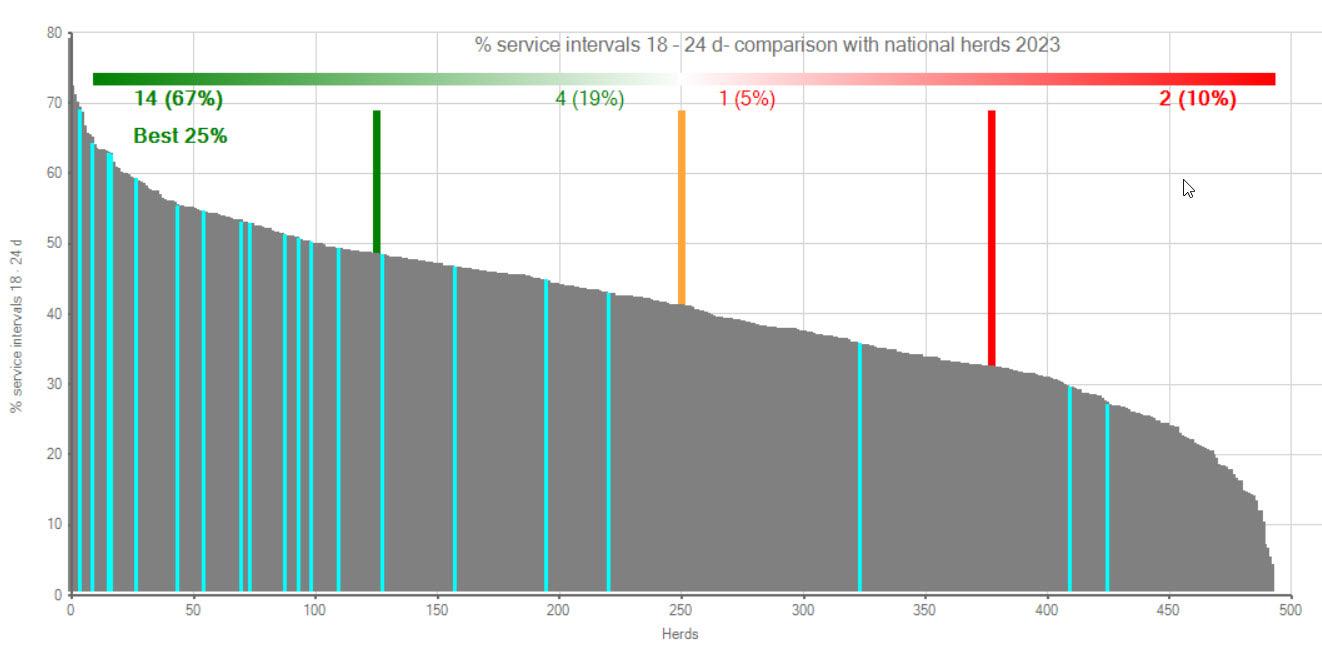

Feed Compounder March/april 2024 page 33
Figure 2a: Herds in a vet practice vs 500-herd sample - heat detection
Fig 2b: Changes in heat detection for each herd in a veterinary practice between 2020 and 2023

PUTTING THE CREAM BACK ON TOP AT TURNOUT
Managing milk fat in cows on grass-based diets or high oil feed ingredients can be a challenge, but it can be averted with specialised feed ingredients. And the proof of the pudding is in the eating, as farm trials and the experiences of UK feed compounders and farmers have shown.
Fresh young grass – either grazed or cut in zero-grazing systems – has a high oil content and this interferes with the milk production pathway. It’s worth noting too that TMR diets rich in oil, such as those with by-products can have the same effect.
Dips in average milk fat can be 0.5%, and a 0.35% depression is typical. This can have a significant and rapid impact on the milk cheque.
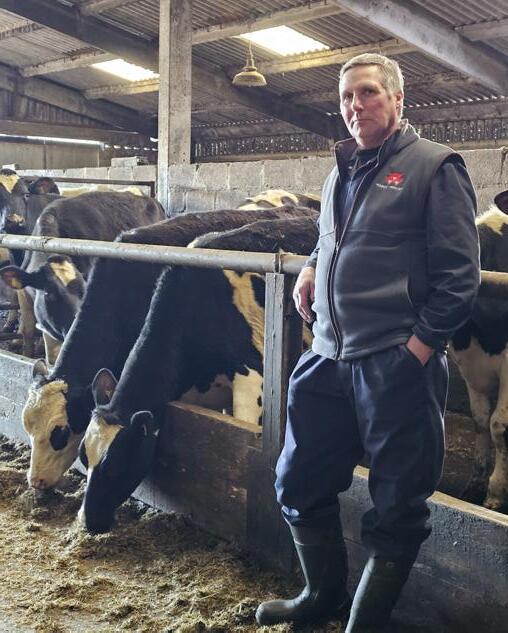
Lancashire-based producer Nigel Airey has experienced this in his dairy herd, but an improved dairy compound, using Cargill’s Equaliser® Cream product in his dairy cake, has mitigated the issue and kept milk fat on target.
Nigel’s 78-cow Holstein herd averages 9,000 litres, at 4.5% fat and 3.3% protein, on twice-a-day milking. The traditional summer grazing and winter housing system relies on high-quality grazed grass and ad-lib grass silage in winter, with a high-quality 17% protein compound feed fed to yield through the parlour. Concentrate feed rate is 0.35kg/litre.
The focus is on maximising milk from home-grown forage while keeping a straightforward system, which is run by Nigel with part-time help.
He grows grass silage and rotates this with summer grazing on the 90-hectare unit, based between the Yorkshire Dales National Park and the Forest of Bowland. The farm also supports a flock of 100 Texel mules.
The herd is closed and calves in an extended autumn block from July to the end of January. “Turnout is rarely before May,” says Nigel, “but the heavy land doesn’t dry up, so the grass keeps growing all summer. I get three decent cuts of silage.”
Good quality first-cut silage made in 2023 boosted yields this winter and in January 63,450 litres of milk were sold to milk buyer First Milk.
“Most cows peaked at between 35kg and 40kg of milk a day in early- to mid-lactation,” he adds.
Spring boost
Nigel looks for a boost in milk production as cows are turned out to grass in the second half of their lactation. But despite milk yields increasing,
he’s struggled to maintain milk fat. “This would typically dip to 4.2% with some cows going below 4% and I’d see the milk cheque go down in these months,” he adds.
“So on the advice of my nutritionist, Gemma Ford from Dugdale Nutrition, I switched to another 17% protein cake, Creamyield, in 2023. This is specially designed to promote milk fats and reduce the dip at turnout.”

It includes Cargill’s Equaliser ® Cream, which counters the negative effects of high oil content diets, seen in spring and early summer fresh grass and in diets with high oil content ingredients, on milk quality.
“I tried the new cake in April 2023 when milk fats had started to drop,” says Nigel. “Within three weeks they’d recovered to the 4.5% level and this remained steady all summer, right through the grazing season.”
Convinced of its effectiveness, and having tried various products in the past that hadn’t delivered the same results, he’s committed to Creamyield in 2024. “And I’m keen to prevent the problem so cows now move on to it a few weeks before turnout. I have seen it work and it more than pays for itself by maintaining milk quality and keeping the milk cheque on target.”
Cream appeal
Dugdale’s ruminant veterinary adviser Debby Brown researched the specialised rumen buffer Equaliser® Cream in 2021, as an alternative to palm fats.
“When the cost of palm fats increased, we started to look at the sustainable source of ingredients we use within our feeds,” says Debby. “We were presented with this specialised rumen buffer from Cargill as an alternative, in certain diet situations, to support milk fat on farm.
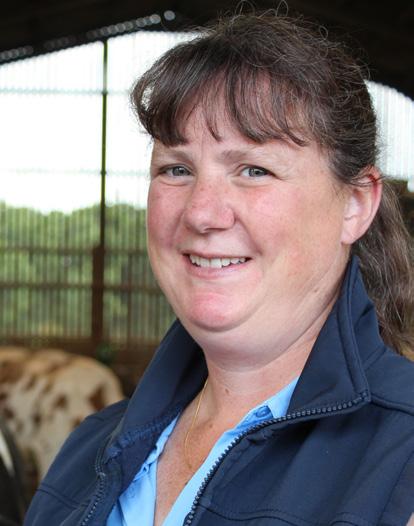
page 36 March/april 2024 Feed Compounder
Nigel Airey with his Lancashire based Holstein herd
Spring and summer grazing can significantly depress milkfat
Dugdale Nutrition’s ruminant vetinary adviser Debby Brown
With Nigel Airey, Debby Brown, Ruminant Vetinary Adviser, Dugdale Nutrition and Dr. Philip Ingram, Ruminant Technical Manager, Cargill
“Sceptical as ever, I risked trying some direct on farm, in a zero grazing herd that has challenges through the summer with decreasing milk fat levels. The results were positive, with milk fat holding up. This meant the producer met his contract requirements and optimised his milk price.”
In 2022, following the success on farm, Dugdale replaced C16 fats in compounds with Equaliser® Cream for herds challenged with milk fat levels resulting from oily diets, either through grazing, or high levels of byproducts. They adjusted energy to ensure the correct levels. The response was consistently good.
And on farms where the milk fat challenge was greater and compound feed levels lower, they topped up with more of the specialised rumen buffer added to the partial mixed ration part of the diet. This ensured the required dose level was met for the response required.
“The added advantage from a compound manufacture perspective is the better quality nut produced with the Cargill product compared to C16 fats, which historically always represented a challenge to feed quality,” adds Debby.
Oil fuels milk fat plummet
A dip in milk fat percentage can happen fairly rapidly after turnout, but can also happen during the second or third round of grazing, often between three and nine weeks after initial turnout, and continue through early summer.
The two main factors responsible for this drop are the high oil content and fibre in fresh grass.
“This high oil content, which is even more elevated in some of the newer grass varieties, makes the unsaturated fat content of the grazing diet about 50% higher than a typical winter ration,” says Cargill’s ruminant technical manager Philip Ingram.
“And fresh grass has low structural, highly digestible fibre that causes a reduction in rumen pH and creates acidic conditions. This creates a storm in the cow’s rumen and disrupts the normal pathways used to produce milk fat,” he adds.
Specialised buffers, that go beyond controlling rumen pH, will reduce the negative impact on milk quality of high oil content diets.
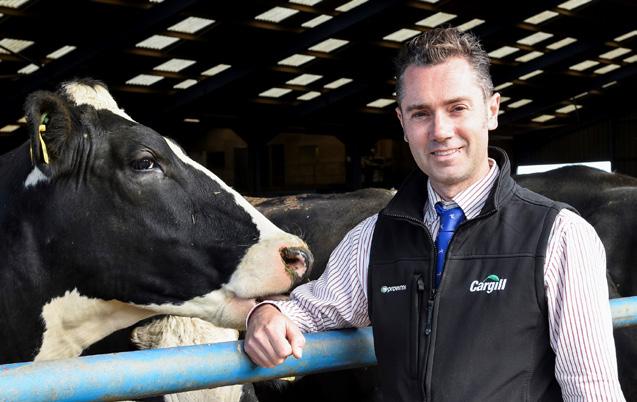 Dr. Philip Ingram, Cargill ruminant technical manager
Dr. Philip Ingram, Cargill ruminant technical manager
“Equaliser® Cream is particularly effective because it works as a buffer in maintaining rumen pH and also supports the reduction of CLA production by normalising the oil conversion pathways. It has a two-pronged attack and prevents rather than ‘cures’ the problem,” explains Dr Ingram.
“Most buffers tackle rumen pH to help prevent milk fat depression, but they are not consistently effective. Instead, Equaliser® Cream has key ingredients to help reduce the impact of the high oil content of the diets on milk fat. And the response is rapid with increases in milk fat typically happening within days of introducing the product into the cows’ diets.”
Trial evidence
Recent trial results using the specialist Equaliser® Cream buffer on 25 UK and Irish dairy farms from 2021 to 2023 have shown the effectiveness of the product.
Thirteen farms introduced the specialist buffer early, before the usual dip in milk fat, and 12 farms introduced it after experiencing low milk fat. Feed rates were between 75g and 150g per cow per day, and the proportion of grazed grass in the diet ranged from 0% to 75%.
Those introducing the buffer early had the best overall response by mitigating a drop in milk fat and recording an improvement in 0.4% in May, compared with the same month in the previous year, as shown in Figure 1.
The 12 farms feeding the buffer after milk fats dropped saw an improvement within a week of 0.33%, with an average increase in one month of 0.51%.
The average financial benefit of adding Equaliser® Cream to the diets of the 25 commercial dairy herds monitored from 2021 to 2023 was 51p per cow per day, and for an average herd of 155 cows, this was £2,412 per month based on milk prices for the farms at the time of the trial.


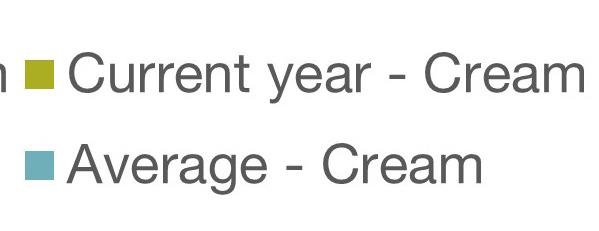
Feed Compounder March/april 2024 page 37
Figure 1: Equaliser Cream - year on year response
Glutamine: the Pivotal Amino Acid to Support Gut Health in Pig and Poultry
By Aude Simongiovanni and Herman Claassen, Metex Animal Nutrition
During the last decades, great efforts have been made to reduce the use of antimicrobials in livestock production due to the risk of antimicrobial resistance development. However, our sector is still under pressure for further reduction or even withdrawal of these substances in livestock production.
Improving gut health resilience in pig and poultry is a long and complex journey. The growing portfolio of feed-grade amino acids (AA) developed by Metex Animal Nutrition allows:
1. to decrease the dietary crude protein (CP) level efficiently and reduce the excess of undigested protein reaching the hindgut, thanks to the range of indispensable AA
2. to supplement the adequate nutrients to boost physiological functions such as gut health, thanks to the range of functional AA.
These complementary nutritional strategies are efficient tools in the context of antibiotics and anticoccidial compounds reduction.
Under specific physiological stage or rearing conditions, the demand for some AA will increase, while the supply via anabolism cannot be increased at a sufficient level. These AA are named “functional”.
Metex Animal Nutrition has developed a range of solutions for pig and poultry based on a synergistic combination of functional AA, inneus®
All amino acids are essential – Amino acids to support gut health
Among the nutritional strategies, the decrease in dietary CP combined with the inclusion of feed-grade AA is a proven solution to reduce deleterious pressure on the gastrointestinal tract. Indeed, feeding a low CP diet lowers pH both in the stomach and intestine and reduces substrate availability for pathogenic bacteria to proliferate or to produce harmful metabolites (Luise et al., 2021).
Feed-grade AA are more than a lever to decrease the dietary CP level while maintaining animal performance. On top of their usage as “building blocks of muscle proteins”, it is time to consider their metabolic functions as precursors of energy, signalling molecules and microbiota modulators. It has been shown that AA can directly support or restore the four pillars of gut health (Chalvon-Demersay et al., 2021): epithelial barrier, immune fitness, microbiota balance and oxidative status homeostasis.
Glutamine, a pivotal amino acid for gut health
Glutamine (Gln), a conditionally indispensable AA, is predominantly consumed in the gastrointestinal tract as a source of energy, particularly under conditions of intestinal disturbance when its consumption exceeds the rate of production (Rao and Samak, 2012).
Most notably, it is the main energy substrate for rapidly proliferating cells such as intestinal enterocytes and is used as metabolic fuel for the immune cells (including lymphocytes and macrophages) and by supplying substrates for the synthesis of glucosamines, nucleic acids, nucleotides and adenosine triphosphate (ATP) (Calder and Yaqoob, 1999; Blachier et al., 2009). In addition, Gln, via the biosynthesis of amino sugars, is a notable component of mucin, a glycoprotein protecting gut mucosa (Neu et al., 2002; Newsholme and Carrié, 1994). Furthermore, Gln can modulate the phosphorylation of the mammalian target of rapamycin (mTOR) which is involved in the regulation of protein synthesis in the intestine (Coëffier et al., 2005).
During periods of challenge, the demand for Gln can exceed its supply due to increased catabolism and decreased feed intake and digestibility. Several studies have shown that supplementing diets with feed-grade L-Gln improved growth performance at a similar or greater level than dietary antibiotics both in piglets and chickens (Bartell, 2006; Johnson and Lay, 2017; Duttlinger et al., 2019). It is expected that supplementation of L-Gln translates into consistent improvement of gut integrity.
inneus®, a full range of solutions based on Gln to face gut health issues
Based on the published literature, there is no doubt concerning the efficiency of L-Gln supplementation to improve gut health. However, all experiments tested high doses (0.5 to 3% in the diet), leading to inconsistent results, and preventing this strategy from being implemented in the field.
Synergistical solutions combining Gln with other functional AA have been developed by Metex Animal Nutrition and proven to (i) increase the efficiency of the solution (ii) decrease the dose of efficiency (iii) increase the reproducibility of the results. Combining AA with different functions helps to potentialise their effects on gut health.
page 38 March/april 2024 Feed Compounder
1. Synergistic combination of amino acids and polyphenols, to act all along the digestive tract, reaching the hindgut (Feed Compounder, issue July/August 2022, p.50)
The first inneus ® products, which were launched two years ago, are complete solutions based on a synergistic combination of functional AA potentialised by specifically selected polyphenols. This combination, with a selected mixture of polyphenols, increases the anti-inflammatory properties of inneus® and allows it to carry the functional AA all along the gut, where they can exert their effect on microbiota (Beaumont et al., 2022).
Piglet trials performed at INRAE (Beaumont et al., 2021) and Ghent University (Michiels et al., 2021) clearly demonstrated the ability of inneus® to positively act on key metabolic pathways with a clear impact on oxidative stress regulation, cell integrity, and microbiota modulation. Beaumont et al. (2021), demonstrated that inneus® significantly increases the abundance of beneficial bacteria (lactic acid producing bacteria) and metabolites (butyrate, propionate and isovalerate) while decreasing the abundance of pathogenic bacteria (Proteobacteria) in the caecum. In Michiels et al. (2021), it is shown that inneus® significantly downregulates key metabolic pathways in the ileum: Caspase 3 (a protease involved in the programming of cell apoptosis) and NRF2 expression (a regulator of oxidative stress).
In broilers, it was demonstrated that inneus ® improved gut integrity after a challenge in two different trials with dexamethasone (Barekatain et al., 2021) or corticosterone (Paes et al., 2022) challenged birds. Concomitantly, it was found that inneus® positively modulated microbiota composition and promoted mucus synthesis by goblet cells to protect more efficiently the gut barrier (Paes et al., 2022). Furthermore, birds provided with inneus® showed significantly decreased inflammatory response under stress conditions compared with non-supplemented birds (Barekatain et al., 2021).
2. Synergistic combination of glutamine and glutamate to target the upper part of the gut and improve gut integrity L-Glutamate (Glu) and L-Gln are abundant AA in the body and have traditionally been considered dispensable AA. However, they are currently regarded as a conditionally indispensable nutrient under stress conditions, including gut health challenges.
The metabolism of Glu and Gln is closely connected, as shown in Figure 1. Glutamate is the immediate product of the Gln metabolism, produced by the action of glutaminase; Glu can be combined with ammonia (NH3) to produce Gln by the action of glutamine synthetase in some tissues and cells, such as the liver and skeletal muscles (Newsholme et al., 2003).
Glutamate is mainly utilised as a source of energy by enterocytes (Windmueller et al., 1975). Moreover, it may also display anti-apoptotic properties in the intestines by maintaining normal cellular redox status through its role as a precursor for the synthesis of glutathione (Kim

and Kim, 2017); thus, it plays a key role in preserving the gut from oxidative damage.
Based on the specific effects of Glu and Gln on gut health and considering their interconnection, it is expected that the combined supplementation of Glu and Gln has synergistic effects (Teixeira et al., 2014). To date, few studies have investigated the effect of mixing Glu and Gln supplementation on piglets, suggesting a positive effect on growth performance and gut morphology parameters (Teixeira et al., 2014; Molina et al., 2012).
A recent study performed at the University of Bologna (Luise et al., 2022) suggested that both Glu and Gln were able to improve piglet growth during the more acute inflammatory periods (until the second week post-weaning). A favourable effect of mixing the Glu and Gln was observed on the immune parameters, gut morphological structure and barrier function of the small intestine. These effects contributed to reducing the number of days with diarrhoea and increasing the faecal consistency during the first period post-weaning (Figure 2).


This study suggested that supplementation with Glu (under the form of monosodium glutamate) and Gln at a ratio of 50:50 during the post-weaning phase supports gut health and maintains the growth of piglets after the challenge of weaning (Luise et al., 2022).
For poultry, on top of the benefits described above, Gln is necessary to produce uric acid at the systemic level and allows N
Feed Compounder March/april 2024 page 39
Figure 1: Connected metabolisms of glutamine and glutamate (Watford, 2015)
Figure 2: Fecal index (%) of piglets receiving diets supplemented with different levels of glutamate and glutamine during the first week post-weaning (Luise et al., 2022)
excretion. During a sanitary challenge, Gln may become indispensable and its dietary supplementation has been shown to be efficient in promoting growth and gut health.
In a trial performed at Guelph University, a basal corn-soybean meal diet was formulated to meet breeder (Ross 708) nutrient specifications. A total of 1800 day-old male Ross 708 chicks were allocated to 72 floor pens (25 birds/pen, n=6) for 35 days. Treatments with Glu/Gln were formulated as the control but with the addition of L-Glu and/or L-Gln (0.5% inclusion) supplemented on top of the feed.
Broiler chickens receiving the mixture 66%Glu:33%Gln performed significantly better than the control diet and at the same level as the control diet + Maxiban (Figure 3).

Metex Animal Nutrition offers solutions to target pig and poultry gut health
Metex Animal Nutrition has always focused its R&D program on the main challenges faced by the pig and poultry production markets. Historically, reducing the dietary CP level while maintaining the animal performance, was a big focus, as it brings a lot of benefits on the different pillars of sustainability, including economy, environment (protein autonomy, Feed Compounder, issue Jan/Feb 2012, p. 33; decarbonization, Feed Compounder, issue Nov/Dec 2022, p. 34), and animal health & welfare.
In the last years, animal health & welfare came to the front: antimicrobial and anticoccidial molecules have increasingly been used to control digestive diseases - increasing concerns have urged the industry to find alternative nutritional strategies to improve gut health resilience.
On top of reducing the pressure on the gut via low CP diet strategies, Metex Animal Nutrition developed inneus ® , a complementary range of solutions based on functional AA that can prepare the piglet and poultry gut to face challenges or help the gut to recover from a challenge (Figure 4).
inneus ® specifically decreases intestinal permeability and inflammation, thus increasing overall gut health resilience.

This year the range is enlarged with new solutions based on L-Gln and monosodium glutamate (MSG); the proportion of each component being adapted specifically depending on the species.
For additional information, please contact Herman Claassen: herman.claassen@metex-noovistago.com.

Metex Animal Nutrition registered 11 Amino Acids in Europe & the United Kingdom to provide the ultimate solutions for the Animal Feed industry. The solutions provided: Sustainable Nutrition, Health and Welfare. b-noov, the first bio-sourced butyrate for the animal nutrition market – available as a coated sodium or calcium source, exclusively available from Metex Animal Nutrition (Feed Compounder, issue Jan/Feb 2024, p34).
Metabolic Explorer is also the only European producer of biobased 1.3 Propanediol. This low carbon diol ingredient can be used as a green solvent for cleaning formulation in animal nutrition segment.
Metex Propanediol + can boost the stability and the conservation of your formula. Moreover, it is easily biodegradable. An Ecocert-Ecodetergent grade is available and can bring naturality to your end-product
page 40 March/april 2024 Feed Compounder
Figure 3 – Feed conversion ratio (FCR) of broilers receiving diets supplemented with different levels of glutamate and glutamine during their whole life (d0-35)
Figure 4 – Complementary mode of action of low crude protein diets and functional amino acids to improve gut health
Cargill Publishes 2023 Global Mycotoxin Report
Cargill has published its global Mycotoxin Report for 2023. Now in its third year, the report now includes analyses of forages making it relevant and useful to all livestock species.
The report includes 360,000 analyses from more than 145,000 raw material samples, from at least 150 feed plants and across 43 countries. More than 17,000 forage mycotoxin analyses have been included in the 2023 report.
Cargill hosts the largest mycotoxin contamination database in the world, providing information on the most problematic mycotoxins, their level of contamination and performance risk rates, and species sensitivity when exposed to a given mycotoxin.
To ensure its usefulness at a local level, global mycotoxin contamination levels and their risks are split into regions and countries.
Key points
In 2023, mycotoxin contamination levels were slightly lower than in 2022 with 70% of samples being positive and 37% of the analyses exceeding Cargill’s performance risk thresholds.
The top three mycotoxins to watch for due to their prevalence and risk levels are Deoxynivalenol (DON; Vomitoxin), Fumonisin (FUM), and Zearalenone (ZEN).
In 2023, there was a notable increase (+7%) in FUM analyses surpassing performance risk thresholds, while both the prevalence of DON (-1%) and ZEN (-9%) decreased.
Three or more mycotoxins were detected in 78% of analyses showing the frequency of contamination with multiple mycotoxins.
Mycotoxin risk assessment
Mycotoxins are naturally occurring toxins produced by fungi. Levels can vary by ingredient and region, and they can affect species differently.
Risk assessments take account of the contamination rate and level and the species sensitivity. Real time data used by Cargill as the database continues to be updated, provides the most accurate risk assessments for use in the industry and on farm.
Many factors affect the type and level found in feed ingredients and an accurate assessment of their presence in real time is required to implement effective control in diets used in livestock production.
Although ruminants are less sensitive to mycotoxin contamination in feeds, the inclusion of forage analyses adds to the report’s usefulness in ruminant mycotoxin risk evaluation.
High concentrations of mycotoxins can result in clinical symptoms, but many feeds have low to moderate levels.
There is increasing evidence that mycotoxins have subclinical and indirect effects on performance loss. Livestock can unknowingly be affected by mycotoxin contamination which can affect their immune system, degrade nutrient absorption and vaccine response. Feed intake and fertility can be affected, as well as meat, egg or milk production.
In the dairy sector, transition cows may be more susceptible than
others in the herd due to the combination of toxin stresses and other stress factors affecting cows in this period.
Threshold level
There is a recognised correlation between the presence of mycotoxins and the performance of the animal. The effect on performance depends on the level of mycotoxin in feeds and there is a defined threshold at which production takes a hit.
Regulatory detection levels set this threshold when clinical symptoms become evident, but Cargill sets this threshold, which it applies in its risk assessment tools, at the level at which performance starts to decline.
Calculating the risk of mycotoxin contamination in feeds and assessing the losses is an essential part of good husbandry.
Cargill has developed a Mycotoxin Impact Calculator, which estimates the loss in performance by referencing the feed material alongside the database data. From this, it calculates the effect of the mycotoxin contamination on animal performance in each farm situation. These data-backed insights help customers identify and mitigate mycotoxins so performance can be maximised and financial losses mitigated.
Accurate decisions can then be taken on whether mitigating mycotoxin measures, like feed additives, are necessary.
Anti-mycotoxin additive
The risk estimation tools allow the most appropriate control plan to be developed. Farmers and their advisers can assess the value of an anti-mycotoxin additive and the most appropriate product and dosage based on the type of mycotoxin and the contamination rate.
Cargill has developed a comprehensive portfolio of narrow and large spectrum anti-mycotoxin agents backed by extensive research.
As Cargill continues to increase the scale of its mycotoxin analyses it gets an even better understanding of the magnitude of their impact, its risk assessments become more accurate. This means that, at a local level, feed mills and farmers can then adopt a targeted approach to mycotoxin mitigation.
“This wealth of information in this report is designed to provide farmers and their advisers with real-time information on the most problematic mycotoxins with their level of contamination,” says report author Clement Soulet, global anti-mycotoxin agent category manager for Cargill’s animal nutrition business. It equips them with the information they need to implement proactive and effective control plans.”
Download Cargill’s 2023
Global Mycotoxin Report

Feed Compounder March/april 2024 page 41
Adams & Green
Pioneering Excellence in Animal Nutrition and Sustainability
By Laura Andrew with Rob Brocklesby, Managing Director, Adams & Green
Driven by a passion for sustainability and customer satisfaction, East Yorkshire-based Adams & Green is a trusted feed fat producer specialising in supplying a diverse range of high quality products to feed compounders, farms, pet food manufacturers and feed merchants nationally.

Founded in 2011, with a dedicated Feed Materials Assurance Scheme accredited facility in Hull, Adams & Green is more than just a feed fat producer, it’s a market leader through its unwavering commitment to innovative and successful international trade.
With a deep rooted understanding of the vital role liquid feed fats play in supporting the health and performance of livestock, Adams & Green is dedicated to delivering exceptional service and top quality products to its valued customers.
Cutting edge innovation
With a growing emphasis on animal welfare, sustainability and performance, the demand for innovative and sustainable solutions is on the rise.
It’s why Adams & Green is committed to delivering products of the highest quality that meet the strictest industry standards, carefully formulated to meet the nutritional requirements of animals.
Continuous investment in research and development to bring new solutions and cutting-edge innovations to the UK market enables the company to embrace emerging trends and leverage the latest scientific advancements to empower its customers to stay competitive and adapt to the changing market landscape.
Its diverse and high-quality product range has set strong standards in the industry. Always on the lookout for new raw materials and through ongoing research and development, Adams & Green is committed to bringing new products and concepts to its customers.
Adams & Green takes pride in actively listening to its customers and partners, ensuring it develops innovative blends that meet the unique needs of new and existing sectors and align with the demands of the market.
Through its ongoing customer-centric innovation and industryleading customer service, Adams & Green has made a powerful mark on the UK animal feed industry.
Sustainability and customer satisfaction sit at the core of Adams & Green’s business philosophy and its commitment to product and service excellence, coupled with a focus on continuous innovation, sets it apart in a demanding industry.
Exceptional quality and customer service
Customers choose Adams & Green for its exceptional products, unwavering commitment to quality and unmatched market-leading customer service.
Fundamental to its organic commercial growth, successful customer and supplier retention, is the exemplary team, led by seasoned owner and managing director Rob Brocklesby:

“From the very beginning, my vision for A&G was to be a market leader for quality and customer service, and I’m proud to say we’ve accomplished that through the dedication of our focused team and diligent research and development. That said, our commitment to improvement knows no bounds and we continuously push ourselves to lead the way and set the standard for excellence.”
Understanding its customers’ unique requirements and everchanging needs means the company prioritises a customer-centric approach in everything it does.
Taking the time to listen and understand customers’ specific challenges and goals, and gaining deep insights into their operations, the company is able to tailor its solutions to meet customers’ individual demands.
Whether it’s optimising feed formulations or supporting sustainable practices, Adams & Green works closely with customers to deliver the right solutions.
page 42 March/april 2024 Feed Compounder Advertising Feature
A homegrown global leader
Headquartered in Hull, East Yorkshire, this independent family-owned company has expanded its global footprint, playing a pivotal role in enhancing the UK’s reputation as a hub for excellence in the animal feed industry.
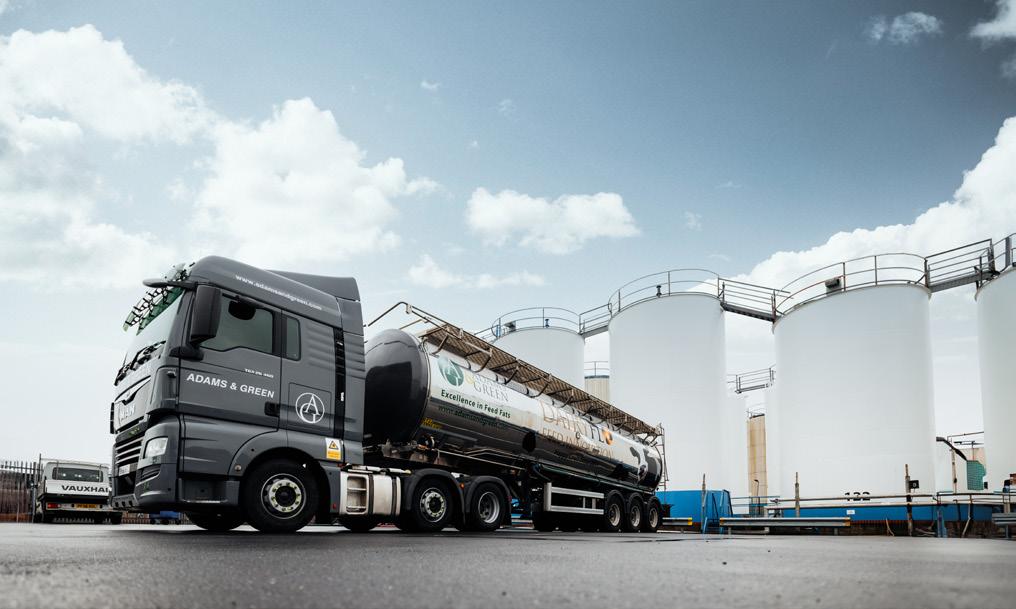
From its inception, Adams & Green has distinguished itself by fostering a culture of innovation and excellence. They have continuously collaborated with their customers to enhance sustainability while delivering a diverse range of high-quality products.
The company’s journey began with a focus on the broiler chicken industry but has since evolved to supply a wide range of animals, including broilers, broiler breeders, laying hens, ducks, pigs, game, cattle, sheep, and most recently, the Scottish salmon feed industry.
In the last three years, Adams & Green has achieved exceptional growth, driven by a dedicated focus on research and development and a willingness to collaborate internationally. The company has invested significantly in R&D, working closely with partners in Europe and other parts of the world to bring cutting-edge innovations to the UK market.
Its international presence is one of Adams & Green’s key strengths. Sourcing 90% of its raw materials from across the globe, including South America (notably Argentina), the Far East and Europe, for the benefit of its UK-based customers who, in turn, produce for both domestic and international markets.
Rob explained: “We’re constantly expanding our network to forge strong partnerships with suppliers who share our values. In addition, we’re exploring alternative, innovative raw materials from around the world to enhance the quality of feed rations in the UK.”
Actively collaborating with partners worldwide, the company has addressed global raw material supply chain challenges, from sustainability to ethical considerations, demonstrating commitment to responsible business practices on a global scale.
The Yorkshire-based company sources from all the major agricultural businesses in Argentina, as well as in mainland Europe, to deliver materials to Hull in order to produce the finished products its customers require.
Adams & Green’s growth is further underscored by the transition to vessel-based raw material transportation, reflecting the company’s adaptability and commitment to efficient global trade.
While global supply chain management is never easy, with vessels needing to be in the right place at the right time, Adams & Green works with trusted partners to facilitate this process to ensure a smooth flow of materials and products across borders.
The approach Adams & Green takes to its international partnerships highlights how the company is fostering global relationships. With strong international trading relationships across the world, the team works in collaboration with those outside the UK with a long term view of achieving a ‘both sides win’ approach.
Championing sustainability: A&G’s ethical sourcing and environmental stewardship
The company’s commitment to sustainable sourcing is exemplified by the firm requirement of a No Deforestation, No Peat, and No Exploitation (NDPE) policy, particularly with regard to palm oil production, ensuring responsible procurement away from Europe.

Rob explained: “At the heart of our business lies a commitment to integrity, reflected in our stance on critical issues like No Deforestation, No Peat, and No Exploitation (NDPE). Upholding these values is non-negotiable for us, ensuring we always strive to do what’s right.”
The business also sources sustainably in South America, with all soy-based products derived from non-deforested land and more importantly, sourcing co-products from the core soy processing.
Adams & Green’s top-of-the-range products, supplied alongside

Feed Compounder March/april 2024 page 43
traditional fat blends to established UK animal feed companies, have set high standards.
Moreover, the company’s proactive approach to addressing global raw material supply chain challenges, from sustainability to ethical considerations, demonstrates its commitment to responsible business practices.

From formulation to manufacturing
A key factor contributing to its growth is the diverse and high-quality product range, developed through rigorous research and development and an unwavering commitment to collaboration with customers.
A leader in the fast-paced animal feed industry, Adams & Green understands the importance of staying at the forefront of innovation, working closely with customers and suppliers to achieve excellence in animal nutrition and contribute to a sustainable and thriving industry.
Forward-thinking, it works closely with customers to gain deep insights into their operations to develop tailored solutions, from optimising feed formulations to supporting sustainable practices, all from its Hull headquarters.
Open dialogue and a collaborative approach have not only solidified the company’s market presence but have also made it a trusted partner in addressing complex challenges, such as sustainability, non-GMO oils and fats, ethical supply chains, and modern-day slavery concerns within the global raw material supply chains.
More recently, it has grown by offering alternative feed blends, constantly striving to provide innovative alternatives to meet evolving industry and customer demands.
With continuous investment in research and development to bring new animal nutrition products, solutions and technologies to its customers, A&G embraces emerging trends and leverages the latest scientific advancements to empower its customers to stay competitive and adapt to the changing market landscape.
Customer focused approach to innovation and service
Since 2011, A&G has been dedicated to working alongside its customers to improve sustainability by offering a high-quality range of products.
As a forward-thinking business, it has taken significant steps in recent years by offering alternative feed blends, constantly striving to provide innovative alternatives to meet evolving industry demands.
Setting high standards for service and innovation, A&G recognises
that every customer is different, with unique goals, specific requirements and ever-changing needs.
Providing personalised support and exceptional customer service, the company actively engages with its customers, taking the time to listen and understand their specific challenges and goals, needs and concerns.
By gaining deep insights into customer operations, A&G is able to develop tailored solutions, from optimising feed formulations to supporting sustainable practices.
Rob explained: “At Adams & Green, our customers are the heartbeat of our operations. Every decision we make, whether introducing innovative products or enhancing our customer service, is driven by our unwavering commitment to meet their needs. We recognise that Adams & Green serves a vital purpose, and it’s our privilege to serve our customers with excellence and dedication.”
A collaborative spirit
Proudly operating a fully owned and liveried tanker fleet, Adams & Green aims to provide the utmost convenience and flexibility to customers, with trained drivers able to meet customers’ needs quickly and professionally with precision via its 15-strong fleet. Adams & Green delivers 7 days a week, including bank holidays.
The company’s success - fueled by innovation, sustainability and a collaborative spirit - not only benefits its stakeholders but also contributes significantly to the UK’s standing in the world.

Rob added: “I’m immensely proud of the remarkable strides Adams & Green has made in just over a decade since its inception. This achievement stands as a testament to the dedication and expertise of our exceptional team, who consistently strive to deliver excellence to our valued customers. Looking ahead, I’m confident our trajectory will continue to ascend, fueled by our unwavering commitment to innovation and customer satisfaction.”
Adams & Green’s dedication to addressing critical issues and the company’s remarkable journey from a small family-owned business to a thriving medium-sized enterprise, is a testament to its vision, innovation and unwavering commitment to growth and excellence.
Its story is one of unwavering commitment and exceptional success, which, with unbridled enthusiasm, is set to continue. Together with its customers and suppliers, this East Yorkshire company is helping to create a sustainable future for the animal feed industry.
page 44 March/april 2024 Feed Compounder
Fats, Molasses & Sugars
A showcase of fats and molasses/sugar products used in feed
ADAMS & GREEN LTD
A DAMS & GREEN LTD, an independent family-owned company based in East Yorkshire, is a dynamic feed fat producer supplying a range of liquid feed fat products to the animal feed manufacturing industry.

A supplier in feed excellence and feed innovation, we’re committed to working alongside our customers to improve sustainability with a high quality range of products.
Our Lecithin blends - Leciol and Superflo - are soya derived replacers for use in pig and poultry diets and replace palm oil blends in ruminant feed.
Superflo+ is a fully soya derived blend designed to give an alternative option to crude soya bean oil for use on a 1:1 basis.
The development of products for new and existing sectors is important to us here at Adams & Green. We care about doing the best by our customers and partners and pride ourselves on listening
to their needs as well as the demands of the market to develop new, innovative blends.
With ongoing development since the end of 2022 for a soy alternative, Dairyflo marked the company’s return to the ruminant sector with a non-soy blend primarily derived from sustainable palm oils.
New in 2023 is Aquaflo, a non-GMO lecithin blend for aquafeed and Sunflo, a new blend formulated to replace crude bean oil offers a like-for-like nutritional option without the use of soy or palm for conscious end users.
These top of the range blends are supplied alongside traditional fat blends to many established UK animal feed companies.
Feed safety is central to our ethos and quality system, supplying high quality, consistent and feed-safe products to give our customers full peace of mind. FEMAS accredited (Member No 385) by KIWA with a fully traceable HACCP and quality management system, our systems are regularly audited by internal, customer and third party auditors.
We operate an industry-leading and unique finished product


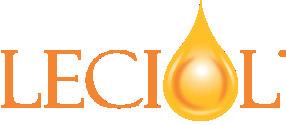




Innovative








































































































Feed Compounder March/april 2024 page 45
producer
fats Quality assured feed safe products Customer focused in-house tanker fleet providing flexible service and full product traceability www.adamsandgreen.com 01482 968881 sales@adamsandgreen.com EXCELLENCE IN FEED FATS EXCELLENCE IN FEED FATS
of liquid feed
positive release policy and encourage an open dialogue with customers about feed material inputs and finished products. Our well-equipped in-house laboratory supports the quality system with testing of all feed materials and finished products. Positively released on testing, our finished products are fully compliant with current feed safety regulations, with analysis available at any time.
We recognise the sensitivity of some of the global raw material supply chains and proactively work with customers and supply chain partners to understand and manage issues such as sustainability, Non-GMO oils and fats, ethical supply chains and modern day slavery.
Operating a Fully Owned Liveried Tanker Fleet, our trained drivers are flexible to meet customer needs quickly and professionally 7 days per week.
Adams & Green Limited
Plot 9, Burma Drive, Hull, East Yorkshire, HU9 5SD
Email: sales@adamsandgreen.com
Tel: 01482 968881
Web: www.adamsandgreen.com
AZELIS
Azelis Animal Nutrition has a developing fat portfolio which now includes our NxtLac ® range of calcium soaps, offering a range of fatty acid profiles and options based on either palm oil or non-palm oil derived raw materials
In addition Azelis Animal Nutrition distributes the Energizer RP10 premium rumen protected fat produced by IFFCO Malaysia from refined, fully sustainable Malaysian palm oil sources and certified to the GMP+ quality assurance standard.
Energizer RP10 is a pure 100% fat delivering both a high level of palmitic acid (C16, typically 88-92%) and the highest possible dietary energy concentration.
Its rumen stability means it is preferred over alternative protected fat sources where high levels of supplementation are required and in dietary situations predisposing to low rumen pH or low milk fat content, eg TMR’s based on acidic silage and/or high starch content, spring grazing etc.
A white, free flowing flake, Energizer RP10 is both palatable and highly digestible, whilst its high melting point ensures it remains rumen inert. It is therefore ideal for boosting both milk yield and butterfat concentration, helping farmers take advantage of milk compositional quality premiums or avoid quality penalties.
For further information please contact Leia Trotman at Azelis on: +44 (0)7792116659 or via email: leia.trotman@azelis.co.uk
ED&F MAN LIQUID PRODUCTS
ED&F Man Liquid
Products is the leading supplier of molasses based liquid products to the feed manufacturing industry. Offering a range of product options to suit individual production needs. Whether you are looking for molasses as a raw material ingredient of more specialist coating products we can supply highly cost effective solutions to meet the ever increasing demands of our industry.
Molasses blends represent excellent value especially as sugars are now recognised as a key nutritional component of an effective ruminant ration and are vital in producing good quality pellets. Recent R&D work carried out by ED&F Man has highlighted the value of 6-Carbon sugars in ruminant rations especially in the area of improved fibre digestion. It is therefore, important to look at maximising inclusions in compound feed formulations
The Millspec range offers cost effective options designed to supply high levels of nutrition with ease of handling to ensure high quality pellet production
Molglo/Blendflo: The market leader in coating product technology, if one of our current range doesn’t fit the bill we will work together to produce a bespoke solution tailored to our customers specific needs.
ED&F Man can also offer bespoke products formulated to exactly meet customers individual requirements
Web: www.edfmanliquidproductsuk.com
Twitter: @EDFMan_Molasses
Instagram:edfmanliquidproductsuk
TROUW NUTRITION
Trouw Nutrition’s Maxcare molassed mineral bucket range has recently been reformulated to balance UK diets. The Maxcare range of minerals is formulated using forage analysis averages from the Trouw Nutrition GB laboratory, ensuring that the mineral specifications are suitable for GB farmers. The Maxcare mineral specifications are suited for all classes of livestock, especially suited to extensive systems where mineral buckets are a more convenient source of mineral supplementation compared to powdered minerals.
The cattle range includes: Cattle bucket for all cattle on a wide range of forage based diets- High Mag bucket for all cattle including dairy and suckler cows to reduce the risk of grass staggers in spring
page 46 March/april 2024 Feed Compounder
and autumn- Suckler bucket ideal to balance forage based diets throughout the year- Dry Cow bucket for in calf cows and heifers, contains a range of specific additives to help support cow performance during the stressful period in the run up to calving, as well as calf health and vigour- Cattle Protein and Energy bucket suitable for cattle all year round, particularly where extra energy and protein is required such as later in the grazing season and for outwintered cattle- Cattle Easy Breather suitable for calves and youngstock at risk of respiratory disorders.
The sheep range includes: Sheep bucket for sheep all year roundSheep High Mag ideal for lactating ewes at risk of grass staggers during spring- High Protein and Energy suitable where extra protein and energy is required, such as alongside poorer quality grazing and mid-pregnancy- Super Boost Ewe with added fish oil, ideal for ewes at tupping time and in the run up to lambing, also suitable for flock replacements and growing and finishing lambs.
The cattle and sheep range includes: Garlic bucket ideal for cattle and sheep during the summer to help discourage flies and biting insects.
All our buckets contain IntelliBond which optimizes the trace element delivery in the diet.
For more details visit: trouwnutrition.co.uk
UNITED MOLASSES

United Molasses GB Ltd offers a range of molasses products developed specifically to meet the diverse needs of compound animal feed manufacturers. Our range consists of high energy liquids such as our Feed Mill Molasses in addition to products with modified flow characteristics such as Millflow to help ease any potential handling issues. We believe our product range allows us to offer a liquid that will fit every mill situation.
At United Molasses GB Ltd we have also developed an extensive range of specialist coating products that includes our Molashine and Molablend ranges which caters to the diverse needs of coarse mixes and blended feeds. These products supply all the nutritional benefits of molasses while also significantly enhancing the physical appearance of the finished mix.
United Molasses GB Ltd, Athel House, Liverpool L20 8DD
Tel +44 (0)151 955 4850 Fax +44 (0) 151 955 4860
E-mail: molassesgb@umgroup.com
Web: www.unitedmolasses.com
STRAW AND MOLASSES WILL HELP EXTEND SILAGE STOCKS
With turnout delayed across the country and silage stocks running down, incorporating a proportion of straw and molasses in the diet will be an effective way to eke out silage stocks.
“Due to the continued wet weather, the prospects for turnout are not encouraging,” concedes Georgina Chapman from molasses blends specialists ED&F Man. “While grass covers are increasing, ground conditions mean cows on many farms will be unable to graze effectively, putting pressure on silage stocks.
“So it will be important to look at ways to extend silage stocks until cows can go out. One cost-effective option is to consider feeding straw and a molasses blend. This can either be used to replace a proportion of grass silage in the milking diet, or to replace silage totally in heifer and growing cattle diets.
Trials at the South West Dairy Development Centre in conjunction with Kingshay showed that it is possible to successfully replace 2.5kg silage dry matter in dairy diets (around 7-10kg freshweight) with 2.2kgFW of straw and 1kg of a molasses blend. Assuming cows had been fed 12.5kgDM of silage, moving to 10kgDM of silage and the straw: molasses blend alternative would mean every four days on the new diet would save enough
silage to allow an extra day of winter housing from current silage stocks.
“The molasses blend plays a crucial role in maintaining good rumen function. Molasses blends contain highly rumen fermentable sugars, increasing microbial protein production and stimulating rumen microbes to improve fibre digestion. The blend used in the trial also contained Regulated Release protein, which releases nitrogen at a steady rate to optimise rumen microbial activity. Coupled with a high sugar content, they promote rumen fermentation and activity and can utilise straw effectively.
When implementing a straw-based diet, it is important to provide good access to a plentiful supply of clean water. Additionally, the transition from a silage-based diet to a straw based must be controlled, by introducing more straw into the diet and reducing silage over a few days to give the rumen microbes time to adjust to the new forage. Finally, straw is deficient in minerals so additional mineral supplementation could be necessary.
“Incorporating straw and molasses into dairy diets now will help minimise the consequences of any delay to turnout,” Ms Chapman advises.
Feed Compounder March/april 2024 page 47
Sensory Products
A Round-up of Sensory Products: Flavours/Palatants/Sweeteners, Colourants/Pigmenters
ADM
ADM is a global leader in animal nutrition solutions and services, including sensory products. These sensory products include an extensive range of flavours, sweeteners (SUCRAM), and combination palatants (MAGNASWEET).

ADM has been a pioneer in the sensory products for animal nutrition space, and has specific in-house expertise in innovating, developing and commercialising palatant products for animal nutrition applications.
ADM has recently launched two swine-specific, saccharin-free sweetener products, SUCRAM SPECIFEEK and SUCRAM M’I SWEET. Developed in collaboration with the University of Liverpool, these sweeteners have been formulated to specifically and synergistically activate the swine sweet taste receptor. As in-feed, saccharin-free sweeteners, they promote improved outcomes for piglets from weaning through fattening, and for the environment.
Contact:
Sarah Cooper
Global Director, Creation, Design & Development, Animal Nutrition sarah.cooper@adm.com
AZELIS
Azelis Animal Nutrition offers an extensive range of feed flavours and sweeteners on behalf of Phytobiotics for the UK & Ireland feed market.
The range of feed flavours under the Miracol brand covers savoury, fruity, milky/creamy and spicy options developed to optimise both smell and taste of feeds for all categories of livestock. Strategic use of flavours in early life feeds, i.e. milk replacer/starter feed can have a significant effect on reducing stress during weaning and improve the intake which can be affected by the change from liquid to dry feed
Miracol flavours are available in powder, encapsulated and liquid forms as required. Expert advice is on hand to ensure that selected flavours are compatible with strong tasting or smelling ingredients.
The range of flavours include more vanilla, milky, flavours for young animals, fruity flavours for growing animals and more spicy noted flavours for older animals.
Azelis also offers three sweeteners:
Piggysweet is a uniquely formulated sweetener specifically designed for inclusion in piglet diets up to four months of age. Trials have proven it to outperform leading sweeteners when included in the diets of weaned piglets.
Appitello Naturale is an entirely natural sweetener, produced from plant extracts and designed to enhance the palatability of animal feed in situations where saccharin based sweeteners are not permitted. It has a sweetening power approximately 300 times greater than sucrose making it a highly effective natural solution. It is suitable for use in all species.
Phytosweet is a plant-derived appetising additive with a pleasant, hay-like scent. With a sweetening power 40 – 50 times that of sugar, it is effective as a flavour-sweetener and it also allows reduced dietary molasses inclusions whilst still boosting feed intake. For further information please contact Leia Trotman at Azelis on: +44 (0)7792116659 or via email: leia.trotman@azelis.co.uk
BIOCHEM
TechnoYeast – the tasty all rounder for improved gut development
TechnoYeast is a functional feed material based on the unique and highly palatable milky-umami yeast strain Kluyveromyces fragilis
TechnoYeast contains high levels of essential amino acids, umamitasting peptides for support of feed intake and beneficial nucleotides for cell growth and further immunological effects. Furthermore, it contains valuable cell wall components, such as mannan-oligosaccharides and ß-1,3/1,6-glucans which bind pathogens such as E. coli or Salmonella and activate immune defences, respectively.
Research has shown TechnoYeast significantly increases feed intake, improves weight development and reduces gut health problems. Thanks to its high nutritional value, TechnoYeast can furthermore be used in a cost optimised way. TechnoYeast increases feed acceptance, enhances intestinal development and supports immune functions, especially in young animals. All this combined, it ultimately leads to better gut functionality, less gut health problems and enhanced performance.
www.biochem.net
page 48 March/april 2024 Feed Compounder
DSM NUTRITIONAL PRODUCTS LTD
CRINA® – delivering essential digestive performance
Our specific digestive solutions have been developed using speciallycreated blends of essential oil components.
Digestive efficiency has an immense impact on the performance and profitably of farmed animals. Animals that use feed more efficiently:
• Grow faster
• Produce more
• Have lower feed costs
• Are more profitable
Rising feed costs mean that the challenge of achieving more efficient digestion is even more important than before.
CRINA® contains essential oil components proven in trials to improve feed digestion and provide great benefits.
Essential oil components have shown to work on two fronts. Firstly, they improve the balance of gut microflora, increasing the proportion of beneficial bacteria and reducing the amounts of pathogenic and undesirable bacteria in the animal’s system.
Secondly, they have shown to stimulate the animal to produce more digestive enzymes. This improves the effectiveness of feed breakdown in the gut.
Of course, different species require different essential oil components.
All flavouring components in CRINA® products are approved for feed and food, and appear on the Register of Feed Additives (Reg 1831/2003) of the European Union and the FEMA (Flavor and Extracts Manufacturers Association) and/or GRAS (Generally Recognised As Safe) listings. The power of phytogenics
Digestarom® line of phytogenics contains unique blends of herbs and spices, essential oils and other plant extracts to improve palatability and acceptance of feed, support digestion and overall performance of farm animals.
Digestarom® supports the development of the gastrointestinal tract and can help ease stress effects during critical periods in animal production and development.
Digestarom is proven to enhance digestibility, which is a prerequisite for the efficient conversion of raw materials into milk production or growth performance, while also reducing intestinal stress.
Improved digestibility of feed means there are less free nutrients available in the gut to nourish pathogenic bacteria, as well as less nutrients being excreted into the environment, thus reducing emissions. For more information visit www.dsm.com/anh
ORFFA
Elovital Red and Elovital Yellow, pigments to improve the colouring of egg yolk and broiler skin
Elovital Yellow contains 10% β-Apo-8’-carotenoic acid ethyl ester and is designed to optimise yellow colouration in animal production. Elovital Red consists of 10% canthaxanthin and ensures a uniform
pigmentation of egg yolk. Recently, the formulas have been updated to bring synthetic pigments to the market without ingredients of animal origin. In both Elovital Red and Elovital Yellow, the gelatine has now been replaced by lignin sulfonate, obtained from pulping processes linked to the wood industry.
With the naturally low level of pigments available in poultry feed ingredients, laying hens and broilers are often unable to deposit the preferred colour in either the egg yolk or the broiler skin. Applying Elovital Red to laying hen diets leads to significant changes in redness, yellowness and brightness of the egg yolk. By combining Elovital Red with Elovital Yellow, the desired colour of egg yolk and skin (for broilers) can be reached. Therefore, Elovital Red and Elovital Yellow provide the perfect tool to precisely control different colours.
Elovital Red and Elovital Yellow guarantee optimal product stability, proven both for the pure products as week as after pelletising the feed. Elovital Red and Elovital Yellow are the trustworthy choice to reach consistent results in colouration of egg yolk and broiler skin. Both products are produced under FAMI-QS guidelines, guaranteeing high quality and safety.
For more information, visit our website www.orffa.com
INROADS INTERNATIONAL LTD

Aroma stimulates animal appetite and creates commercial feed appeal. Taste provides a critical platform for driving feed intake and palatability throughout an animal’s growth and dietary transition. So how do you maximise this opportunity?
Inroads International is a proud, British manufacturer of flavours, aromatics and seasonings. We support UK and global feed manufacturers with the science of flavour, using our expertise to help influence feed palatability and feed intakes for all livestock and pet sectors.
So, if you’re tired of the same generic flavoured milk powder and want to create your own brand differentiation, for example, then let us show you how condensed milk and caramel flavours can freshen up your range and optimise neonatal growth.
Why not make use of our knowledge and experience and unleash the full potential of your product range; it’s all a matter of good taste.
Inroads International Ltd, Unit 4 Wem Engineering Centre, Church Lane, Wem, Shropshire, SY4 5HS
Tel: +44 (0) 1939 236 555
Email: info@inroadsintl.com
Web: www.inroadsintl.com
Feed Compounder March/april 2024 page 49
FORFARMERS 2023 RESULTS
ForFarmers has released its results for the year ending 2023. The key highlights are detailed below.
• Implementation of ’Local in the lead’ is bearing fruit; the second half of 2023 showed a recovery of the market position and a clear improvement in underlying profitability
• Total volume was 8.4 million tonnes in 2023 (2022: 9.0 million tonnes); adjusted for Belgian volumes, compound feed volume in the second half 2023 was in line with the first half
• Gross profit declined 3.5% as a result of the decline in volume and volatile raw material and fertilizer prices. In H2 2023 gross profit rose 2.1% compared to a year earlier
• Underlying EBITDA came in at €70.0 million and underlying EBIT was €32.7 million; this was lower compared to 2022 but, as expected, H2 showed a strong improvement compared to both H1 2023 and H2 2022
• Underlying net profit was €22.7 million. There was a reported net loss of €1.0 million, mainly as a result of one-off non-cash items
• Strongly improved net cash flow from operating activities as a result of favourable developments in working capital and raw material prices
• Successful implementation of organisational changes aimed at more local responsibility and cost-saving measures
• Following the acquisition of Piast in Poland and Thunderbrook (horse feed activities) in the United Kingdom in January 2024 and the sale of the compound feed activities in Belgium, ForFarmers is more strongly positioned for growth
• Dividend proposal of €0.15 per ordinary share (2022: €0.20)
Specifically discussing their UK cluster the report detailed that: In the United Kingdom, ForFarmers achieved success with its specialist approach in the dairy sector, managing to improve its position in this market. Despite the high availability of good forage and lower milk prices at the end of 2023 the market saw volume growth for the full year.
The non-integrated market for pigs and broilers is contracting amid increasing chain integration. This trend continued, resulting in a loss of volumes.
Poultry volumes were impacted by the effects of avian flu, particularly in the first half of the year.
On balance gross profit showed a stable development over the year, partly
due to a higher share of ruminant feeds in the product mix. Underlying operating expenses increased as a result of inflation and higher production costs, partly offset by lower energy costs. The number of FTEs decreased during the year, in line with the sharpened focus. Underlying operating profitability declined.
In early 2023 ForFarmers UK and 2Agriculture abandoned their proposed joint venture announced in 2022. This joint venture was the response to the increasingly integrated poultry market in the United Kingdom. Similar chain integration is happening in the swine sector. ForFarmers has recently been considering the best solution for the future of its customers and operations in the United Kingdom. A reorganisation of the UK organisation has been announced, and as a result, the divestment process of two factories starts. Deliveries to customers will be transferred to other ForFarmers locations.
The full report can be accessed from the ForFarmers’ website.
DSM-FIRMENICH AND DONAU
SOJA TEAM UP TO HIGHLIGHT THE ENVIRONMENTAL IMPACT OF
FEED INGREDIENTS ON ANIMAL PROTEIN WITH SUSTELLTM
dsm-firmenich and Donau Soja, an international non-profit organisation supporting sustainable European soya, are proud to announce their partnership to highlight the environmental footprint of animal feeds and feed ingredients using SustellTM, the LCA platform for the animal protein value chain.
The impact of eggs, meat, milk and farmed seafood on the environment greatly depends on what animals eat and how they use it. The ecological footprints of various raw materials and ingredients in the feed can vary enormously. Advanced life cycle assessment (LCA) platforms, such as Sustell™, enable the feed and animal protein sectors to precisely measure and improve their sustainability and unlock new sources of revenue.
David Nickell, Vice President of Sustainability & Business Solutions at dsmfirmenich, Animal Nutrition & Health said, “Our commitment to this partnership with Donau Soja will help empower businesses along the value chain to both improve and communicate the sustainability of their operations. Accurate, scalable and credible LCA measurement of a product’s environmental impact from farm to fork is fundamental to unlocking multiple value opportunities such as eco-labelling initiatives of both food and feed, sustainable finance, adherence to the latest sustainability reporting requirements, as well as being a strong business diagnostic to understand
where best practice is within the production process.”
Roughly one-third of the world’s greenhouse gas emissions come from food production, with 10-15% of this coming directly from livestock emissions. Companies along the food value chain are increasingly called upon to measure, report and reduce their environmental footprints because of their sustainability commitments, regulatory requirements, and consumer preferences.
Susanne Fromwald, Senior Advisor and Programme Director at Donau Soja adds: “Animal feed accounts for 40 to 60% of the environmental footprint of eggs, meat, milk and farmed fish. Protein sources in animal feed, such as non-certified soybean meal from overseas or even Europe, can be major contributors to the overall greenhouse gas footprint. Donau Soja has conducted several science-based calculations with renowned institutes whose results show the carbon footprint reduction potential of using certified European soya. With Donau Soja certified non-GM sustainable conversionfree European feed we could prove for example a reduction of 42% CO2 emissions per kilogram pork. The partnership with dsm-firmenich, using SustellTM creates benefits for our Donau Soja members to do more science-based calculations and bring greater transparency to the feed and food industry that empowers more sustainable food production and consumption.”
BORREGAARD ENSURES APPROVAL OF LIGNOSULFONATES
FOR USE IN ANIMAL FEED WITHIN EUROPE
Borregaard is proud to announce the reauthorisation of its lignosulfonate products as feed additives for all animal species by the European Food Safety Authority (EFSA).
As the only lignosulfonate producer, Borregaard has spearheaded the reauthorisation process towards EFSA and the EU Commission over the past thirteen years.
“We have compiled a thorough dossier, demonstrating the performance and safety of our lignosulfonates. We are therefore very pleased with this approval, which validates the efficacy and safety of our products as feed additives for the foreseeable future”, says Tom Stylo, Business Director Feed Additives at Borregaard.
The date of effect is 21.03.2024. This approval applies to the use of Borregaard’s lignosulfonates as a technological additive (functional group: binders) for all animal species and underlines the company’s commitment to delivering sustainable solutions to the feed industry.
page 50 March/april 2024 Feed Compounder
NOVUS ACQUIRES ENZYME COMPANY BIORESOURCE INTERNATIONAL, INC.
NOVUS International, Inc. announced it has completed the acquisition of U.S.based enzyme company BioResource International, Inc. (BRI). Under the terms of the agreement, NOVUS becomes the owner of all BRI’s products and intellectual property and takes control of the company’s facilities.
“This move will allow us to serve our customers better and expand our innovation pipeline further,” says NOVUS President & CEO Dan Meagher. “Enzymes are vital tools for producers to ensure animal health and well-being and help deliver on-farm profitability. We’re very excited to offer our customers more options, as well as aspire to develop new feed additives.”
The relationship between the two companies isn’t new. NOVUS has partnered with BRI since 2008 to manufacture its protease product, CIBENZA® Enzyme Feed Additive. Meagher says having full ownership and control of the product line and the option to expand NOVUS’ portfolio beyond protease enzymes is a natural fit in the company’s long-term strategic plans.
“NOVUS’ priorities include investing further in functional proteins and the gut health segment, growing our portfolio, and achieving stronger control of our supply chain,” he says. “Along with supporting these goals, acquiring BRI also increases our capabilities to develop innovative solutions in the fermentation space.”
BRI’s products include Versazyme® protease feed additive, Xylamax® xylanase feed enzyme, Dymanase® mannanase enzyme, Phytamax® granulated, thermostable, microbial 6-phytase enzyme; and EnzaPro® enzyme and direct-fed microbials, among others.
Along with BRI’s current product portfolio, NOVUS also takes over the company’s facilities in North Carolina in the U.S.
Meagher says continuity is key for current BRI customers and they should experience “business as usual” during the integration process.
FAIR AND TRANSPARENT DAIRY CONTRACTS FOR ALL AFTER MORE THAN A DECADE OF CAMPAIGNING
More than a decade on from the NFU’s SoS Dairy Campaign, and the UK farming unions first calling out unfair practices and abuses of power in the dairy supply chain, new legislation being laid in Parliament this week will ensure fair and transparent contracts for all dairy farmers in the UK.
In response to ongoing campaigning by the UK farming unions, the government held an industry-wide consultation in 2020 which found unfair practices within the supply chain linked to buyers having the power to set and modify the terms of a contract with no negotiation with the producer and little notification.
The new regulations, a commitment set out at the Prime Minister’s Farm to Fork Summit last year, will establish transparency and accountability across the dairy supply chain by stopping contract changes being imposed without agreement. There will also be a system in place to enable farmers to verify the calculation of variable prices. The regulations also include an enforcement regime, backed up by the ability for the Secretary of State to impose substantial financial penalties in respect of any breaches.
NFU dairy board chair Michael Oakes said: “It became clear to us back in 2012 that the voluntary code of practice still left many dairy farmers open to unfair practices and abuses of power, so this marks a significant step in a long road of campaigning by the NFU and the other farming unions to improve fairness across the supply chain.
“For a long time, unfair milk contracts have held back many UK dairy businesses, and these changes will help give dairy farmers much needed business security and confidence. While progress has taken far longer than any of us hoped and expected, I am confident that, from today, we are finally on the right path to building a stronger, more resilient future for the UK dairy sector. Notwithstanding the progress that is being made, the NFU believes that representative organisations, such as


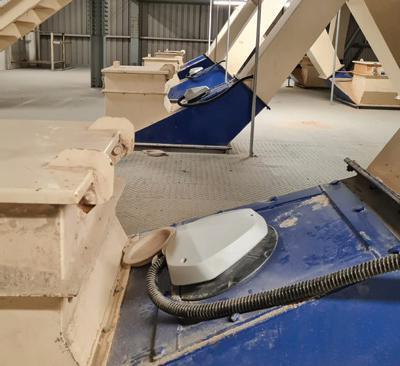

producer organisations, will play an important role in helping farmers negotiate contracts within the dairy sector and we will continue to support the development of representative structures like these to help improve trust and collaboration across the supply chain.
“We will continue to work with government and the wider dairy industry to not only benefit farm businesses and the dairy supply chain, but the millions of people who value access to quality, sustainable, nutritious British milk and other dairy products on a daily basis.”
NEW TREHANE TRUST WEBSITE LAUNCHED
UK dairy industry charity, The Trehane Trust, has launched a new website with details of its scholarships, dairy study groups and networking opportunities. The new website can be found at: trehanetrust.org.uk
The Trehane Trust, which was set up in 1977 on the retirement of Sir Richard Trehane as Chairman of the Milk Marketing Board, supports knowledge transfer and career development within the dairy supply chain.
As part of this, it sponsors up to two dairy-focused Nuffield Scholarships each year. There are now more than 100 Nuffield Farming Trust Trehane scholars.
“The new website is our shop window for attracting dairy-minded people from all sections of the supply chain who are keen to progress their own knowledge, and also research sectors of the industry that may benefit the UK dairy industry,” says dairy business adviser and Trehane Trust chair Diana Allen. “This may be from a scholarship, or from taking part in the many seminars, study tours and workshops that we are involved with.”
The Trehane Trust also offers dairy industry research fellowships on subjects specific and topical in the dairy industry.
Feed Compounder March/april 2024 page 51
use SiloSpi on all our bins. It’s an excellent, reliable system”
Kiernan, Chairman, Kiernan Milling Transforming the stock inventory process for animal feed mills T:+ 353 89 2426825 E: info@lvlogics.com www.lvlogics.com Scada and PLC Compatible Real Time Levels Increased Safety Silo Levels Email Alerts
“We
Mark
2024 SFT RUMINANT CONFERENCE—18TH APRIL
The 2024 SFT Ruminant conference is now available for booking on the SFT website.
The conference is being held on the 18th April 2024 at the Windmill hotel in Coventry. The packed agenda includes two presentations from SFT Edgar Pye winners.
• Further talks include:
• Welcome - Tom Butler, Conference Chair
• Net Zero Beef – Who, What, How and Why - George Peart, Promar Sustainability Team Lead and James Royce, Sustainability Consultant for Promar
• The effect of starter pelleted intake on faecal starch and pH of pre-weaned dairy calves - Amber Broadway, Harper Adams University
• Dairy calf microbiome and the potential effect of probioticsAisling Carroll, Hartpury University
• Recent research on improving the efficiency of protein utilization in dairy production systems - Chris Reynolds, Reading University
• Update on genetics with a view on beef sustainability - Mike Coffey, SRUC
• Beef Signals - from the farm to the abattoir - Bruno Martin, Ruminants Technical Manager, Lallemand Animal Nutrition
• Holistic approach to carbon footprint reduction in dairy farms - Jim Uprichard, Technical Manager – Sustainability for GB and Ireland Trouw Nutrition GB
The full agenda can also be found online
OCEAN HARVEST TECHNOLOGY GRANTED SECOND PATENT
Ocean Harvest Technology is pleased to announce that it has been granted a second patent, covering a wide range of claims about the benefits of using its OceanFeedTM product in the diets of a range of animals.
The patent protects the claims:
i) of how OHT’s product positively impacts the gut through its proven prebiotic effect; and,
ii) that this results in increased body weight and/or improved feed efficiency in a wide range of animals.
The grant of this patent is a core pillar of
OHT’s intellectual property strategy and protects OHT’s IP over the core claims of how its OceanFeedTM proprietary blended seaweed additive products work and the benefits it leads to. The patent covers a range of formulations providing OHT with significant flexibility in the future, both in terms of which seaweeds the Company uses and the exact proportions in which these are combined to produce the end products delivered to customers.
The patent, GB1909443.2 “Seaweed Blend for Modifying Gut Microbiota” has been issued by the UK Intellectual Property Office and similar applications have been made in other relevant jurisdictions by OHT. To OHT’s knowledge, this is the only patent that has been granted in any of OHT’s target markets which covers the mode of action of a seaweed blend as an additive to animal feed diets.
Mark Williams, CEO of OHT, commented: “The granting of this patent is a very important milestone for OHT. For a number of years we have been demonstrating improved performance in production animals from adding OceanFeedTM to their diets including higher growth rates, reduced mortality and improved feed efficiency. The grant of this patent enables us to uniquely make and protect the claims over these performance improvements and how they are achieved, which is through the specific pre-biotic effect our product has in the microbiome of the animals.”
SOYA SUPPLY THREAT AND LIKELY PREMIUMS PROVIDES OPPORTUNITY FOR RESPONSIBLE ALTERNATIVES
With less than a year before EU Deforestation regulations are implemented, dairy producers are being warned of a potential scarcity of supply of imported soya products, alongside likely price hikes on what is available.
Conversely, this is providing an opportunity to consider alternative responsible protein sources to fill the requirement, while also reducing feed carbon numbers.
The regulations entered into force from 29 June 2023, and means that from 1 Jan 2025, any soya product must be traceable to point of origin, with a segregated supply chain, and must not have been sourced from recently deforested land or an area that has contributed to forest degradation.
“This particularly applies to at-risk countries, from a deforestation point of view, such as Brazil and Argentina,” says
Chris Davidson, head of procurement at AB Agri’s ruminant division.
“It is a huge change in requirements, because all of the soya that currently comes into the EU or UK is predominantly any origin, meaning shippers can source from wherever the cheapest point is, and just ship it into the different countries,” he adds.
What this means in practice is that currently, shippers are not offering anything for February 2025 onwards, as they look into how to meet those requirements, and the costs of doing so. The situation is further complicated by uncertainty around UK regulations, and how they will align to the EU’s position.
“At this stage, no-one is sure where to source soya or the cost involved, so there is a great deal of uncertainty,” says Mr Davidson.
“Farmers have a decision to make, are they willing to pay that premium, or wait and potentially miss opportunities, without knowing how much they will end up having to pay,” he adds.
This does provide a good opportunity for products such as NovaPro from Trident Feeds, the UK grown and manufactured high energy rumen by-pass rape expeller.
As it is sourced from British rapemeal there are no availability issues, with the added and significant environmental benefits over the use of imported soya products.
“This xylig-treated rapeseed expeller is an ideal complement as a protein source,” says Trident Feeds ruminant technical manager Charlotte Ward.
“Trials run at the University of Nottingham found rations containing NovaPro produced an additional 1.7 litres of milk per cow per day compared to a soya and rape ration, with no significant effect on milk constituents.
“The trials also found an improved amino acid profile, rape having a closer amino acid profile to milk protein than soya, and improved protein utilisation, shown by a significant reduction in milk urea nitrogen levels, meaning less nitrogen pollution on farm,” she adds.
“NovaPro allows producers to replace soya fully or partially, whilst improving animal performance. Its carbon footprint is also only around 1/7th of the carbon footprint of soya*.
“There is a significant risk of soya within the EU and coming into the UK being at a premium to the price we have been used to trading at,” says Mr Davidson.
“NovaPro offers a cost-effective and viable alternative. You can cover it forward today, and you know what prices you are going to pay. In doing so, you are also reducing your carbon footprint as well.”
* GFLI figure for soya coming into the UK including Land Use Change, NovaPro figure submitted for review into GFLI branded data
page 52 March/april 2024 Feed Compounder
COMPUTING Formulation, Process Control, Office/Mill Management
BESTMIX Software
Since 1974, BESTMIX ® Software, formerly known as Adifo, has developed and serviced a unique range of food and feed industry-specific software tools for least-cost recipe formulation, quality data management, ration calculation, cloud services and ERP. Over 1000 customers in 60 countries apply BESTMIX® software to optimize their resources, achieve the highest quality products, achieve optimal animal performance, service their clients and become more efficient and profitable.
Today, we’re proud to offer industry-leading applications and expertise for clients across the globe. Continuous input from our users, 50 years of experience and state-of-the art technology guarantee innovative products that make a difference.
Software is the best response to a crisis
The supply chain is going through difficult and disruptive times and companies need to act to keep meeting their challenges. Only agile and flexible companies that have a grip on all their data will be able to turn difficulties into opportunities.
Being the only software supplier globally that offers an A-to-Z, problem-solving, and brand-boosting framework, BESTMIX makes every single step of the process easier. From buying decisions to quality control and customer support to logistics, the highly skilled BESTMIX team will help nutritionists, purchase managers and QC managers to succeed.
Integrated solution supporting the entire production flow of a feedmill
BESTMIX offers integrated solutions solving client challenges, supporting the growth of companies in the nutrition industry. By developing best-in-class software tools, led by input from our customers, we boost your business. Come along on our journey as we provide software for feeding the future.
• Result-driven Feed Formulation
Your partner for feed optimization and ration calculation
• Quality control at your advantage
• Introduce quality control/assurance in the core of your business processes
• Smart Commodity trade, risk management and procurement software
• Make the right purchase decisions based on clear insights
• Reliable Precision feeding and Production
• Deliver what you promise, and match the customer’s expectations
Feel free to contact us for more information: hello@bestmix.com www.bestmix.com
Binary Consultants
Binary Consultants are often described as a “Boutique Microsoft Dynamics Partner”, where “boutique” is a nice way of saying small! It’s true that in the world of Tier 1 Enterprise Resource Planning Partners (that’s what we sell), we’d be one of the smallest with our team of 20!
You may know us as the authors of Feed Dynamics, a specialist solution for the UK and Irish feed milling industry built on Microsoft Dynamics. But feed is just part of what we do. Binary is all about delivering Microsoft Dynamics AX (now known as Dynamics 365 for Finance and Operations). Our team have fanatically delivered Dynamics for our customers in diverse industries from FTSE-100 Travel Companies to Specialist Greeting Card Manufactures; from Utility Infrastructure Providers to Wholesale FMCG Distributors. Why did any of them choose someone as small as Binary?
Simple: our honest and transparent approach to what are typically confusing and contractually complex projects. Our deep product knowledge combined with our practical “do it rather than talking about doing it” approach is something of an oddity in the enterprise software world but it’s an approach that has seen us secure projects in multiple industries, including flour milling, over the last 14 years.
Several of these customers joined Binary after working with another partner, deciding the “deliberately different” approach might be for them too. If you have or are considering Dynamics AX/ Dynamics 365 then give us a call to see if we are different in the right way for you.
Tel: +44 (0) 1423 223 511 or e-mail Chris Black (chris.black@binary.ax) or Andrew Birch (andrew@binary.ax)
Feed Compounder March/april 2024 page 53
CORE Tech

In the ever-evolving landscape of the feed industry, efficiency and adaptability are paramount for success. As challenges like fluctuating commodity prices, supply chain disruptions, and sustainability concerns continue to shape the sector, the need for innovative solutions becomes increasingly apparent.
COREmill, the market leader in customised grain software from CORE Tech, is poised to revolutionise feed mill operations.
COREmill offers a comprehensive solution designed to streamline all aspects of feed production, from inventory management to formulation and beyond. Its customisable features allow feed producers to tailor the software to their specific needs, ensuring seamless integration into existing workflows and maximum efficiency gains.
By providing real-time insights into inventory levels, production schedules, and ingredient formulations, the software empowers feed producers to make data-driven decisions that minimise waste and maximise profitability. Whether it’s adjusting production schedules to accommodate fluctuations in demand or fine-tuning ingredient formulations to optimise nutritional value, COREmill equips businesses with the tools they need to stay agile in a rapidly changing market.
COREmill’s advanced analytics capabilities enable feed producers to identify trends, pinpoint areas for improvement, and forecast future demand with precision. This proactive approach not only enhances operational efficiency but also fosters strategic growth and innovation.
In an industry where margins are tight and competition is fierce, having a reliable partner like COREmill can make all the difference. By streamlining operations, optimising resource utilisation, and providing actionable insights, COREmill empowers feed producers to overcome the challenges of the feed industry and thrive in an increasingly competitive market landscape.
Web: www.coretechnology.ie
Tel: +353 25 41400
DSL / Datastor Systems

Imperium4Feed is the award-winning mill control software offered by Datastor Systems, DSL Systems and WEM Automation all of whom are part of the Valstone Process Control Division. Recognised at the IPPE 2023 show in Atlanta winning an award for “Best of the Best in Animal Feed” and at the end of last year the new Imperium4 website was launched www.imperium4.com
Imperium4Feed is a process control, planning and information system that is designed specifically for feed and grain plants, including animal feed mills, pet food plants, pre-mix plants and grain silo storage.
It has an intuitive graphical browser interface accessible from any device with a browser. The web pages are published on a local server protected by the client’s firewall and network security. As opposed to cloud-based software it is not reliant on an internet connection. Reliability remains the key for process control and that with usability and optimisation underpins the Imperium4Feed architecture and design.
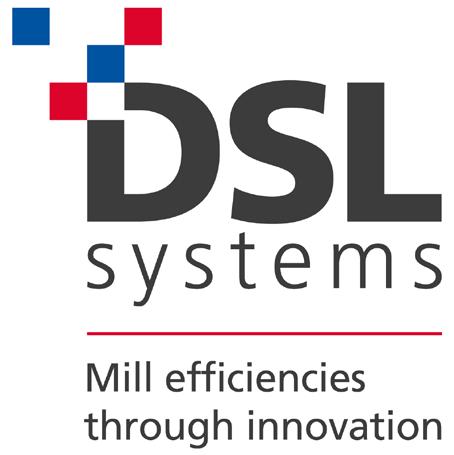

Imperium4 is a software for life solution which is continually evolving and improving through over the air updates from our R&D team to bring new features and user experience enhancements ensuring your plant and operations remain ahead of regulatory and technological advancements.

There are also several additional modules
• Plan4Imperium – Visual production planning module
• OOE4imperium – Mill performance monitoring module
• CMMS4Imperium – Integrated maintenance management module
• Insight4Imperium – Online report viewing module.
For further information or a demonstration please contact:
Bill Wright – Datastor Systems – billwright@datastorsystems.com 01260 277025
Matthew Swallow – DSL limited – matthewswallow@dsl-systems.com 01159 813700
Feed Dynamics
Feed Dynamics is a system specifically built for (in fact born out of) a UK feed mill (it works in Ireland too!), built on Microsoft Dynamics 365 for Finance and Operations. Feed Dynamics is the bit built by Binary to take the extremely featureful but generic Dynamics 365 ERP and make it work for a feed mill. To do that we add features including:
• Raw Material Contracting & Position Analysis
page 54 March/april 2024 Feed Compounder
• Sales Contracting
• Formulation Import (from all major formulation systems)
• Raw Material Cost Sets and Advanced Margin Analysis
• Full Product Labelling & Bulk Declaration Generation
• Simplified Central Product Management
• Graphical Map-based Transport Planning, Load Building and Costing
• Full Two-way Integration with Process Control Systems (DSL, Datastor & ICM)
• Touch-screen Weighbridge module with integration to multiple brands of weigh head
• Mobile Apps for Sales Reps and Raw Material Buyers
Feed Dynamics is more than just a software add-on to D365. It’s the culmination of 20 years’ experience implementing and operating Microsoft Dynamics in the feed industry. Our customers have told us that when they buy Feed Dynamics from Binary, they are our buying our experience and understanding of the feed industry as much as they are buying the software. That’s why we’re proud that 21 mills are now using Feed Dynamics with 3 more joining them in 2024. To find out a bit more about Feed Dynamics contact Chris Black (chris.black@binary.ax) or Andrew Birch (andrew@binary.ax) or call us on +44 (0) 1423 223 511
Primetics
The global challenge of feeding an evergrowing population, expected to surpass 10 billion by 2050, necessitates heightened efficiency in feed production. Gold Feed software offers a comprehensive ERP solution tailored to optimize mill performance amidst rising pressures such as commodity prices, supply chain complexities, and sustainability concerns.

Financial management is pivotal for profitability, especially amid volatile commodity prices. Gold Feed aids in financial control by streamlining invoicing, sales, and purchase transactions, enhancing budget management and profit maximization.
Addressing sustainability concerns, Gold Feed facilitates accountability by enabling ingredient traceability and sourcing from reputable suppliers. This supports efforts to mitigate environmental harm associated with feed production, crucial in combating the climate crisis.
Total traceability is prioritized, ensuring compliance with evolving customer demands and regulatory changes. Gold Feed’s configurability accommodates unique business requirements, with optional modules and custom developments tailored to individual needs.
With over 40 years of industry expertise, Gold Feed stands as a steadfast partner to feed producers, offering unwavering support and innovative solutions to navigate the challenges of modern feed production.
Web: www.primetics.co.uk
Email: primetics@culturatech.com
Tel: 01257 279 811
Promtek Ltd
Have you started your automation and digitisation journey?
Are your process controls taking you where you want to go, quickly and efficiently?
Do you have seamless integration between all aspects of your production software?

Promtek can help you answer ‘yes’ to those questions!
We’ve designed and built manufacturing and production process control systems since 1972. It’s our passion. Our decades of knowledge and innovation have created intelligent integrations for the animal feed industry and beyond. Our systems engineering experts create bespoke process automation technology and instrumentation for weighing and handling processes of all sizes and complexities.
We’re confident we have the production solution for you.
Our StoraWeigh process control system is one of Promtek’s signature products, developed with over 50 years of industry insight. It’s a robust and reliable system, adaptable to the needs of any factory. It integrates with multiple PLCs and provides a customer-specific control centre to ensure optimal production.
The Storaweigh suite is complemented by graphics management options, including Kestrel SCADA. This user interface allows specific adaptations of trend reporting and multi-site views to suit customer needs. It also has the flexibility to coordinate process control across all levels of production. The Microman options, with barcode scanning and label printing capabilities, expertly manage stand-alone or integrated singleingredient throughput and raw material hand-weighing.
Additionally, our Condor platform is a browser-based production management system designed to provide business-specific insights, offering four modules to enhance production:
• The Manufacturing Execution System (MES), for formulation control, raw material in and outtakes, scheduling, works orders, and cross contamination
• The Time in Motion & Energy (TiME) module, for insight into production performance and energy consumption
• The reporting module, to store and use historical production data to analyse batches, production, and stock reports
• The Application Programming Interface (API), to integrate Condor with external systems and applications to automate import and export data
This essential integration translates all the data generated from different sources into a better and more accurate picture of how energy is being used.
Promtek provides world-class solutions, sustainability, and customer service.
Contact us at: 01782375600 sales@promtek.com
Feed Compounder March/april 2024 page 55
In Conversation...
With Promtek’s Richard Key & Liam Barks
More than ten years after taking over the day to day running of Promtek's operations and taking responsibility for the company's future fortunes, Directors Charles and Simon Williams felt that the company was capable of more and needed to change gear, in order to stimulate significant growth and create fresh opportunities. For the first time in over a decade, the company appointed two new managers to work closely with the directors and our in-house HR, marketing and quality to build a new Projects division and a new Service division out of the existing software and engineering teams. This new strategy promises to give new clients the best possible onboarding experience, while ensuring that the extensive existing client base continues to enjoy the highest levels of support and customer care. The two divisions have autonomy within Promtek but work closely together to drive continuous improvement and achieve the company's ambitions. We sat down with these new managers, Richards Key and Liams Barks, to discuss their progression through the business, from part-time gardener and apprentice to their new roles.

Richard Key (31) - Head of Service
“My current job role within the business is head of service. I look after all our existing customer base. The service team does calibration service, preventative maintenance and also offers 24 hour breakdown cover for our existing customers.”
How did you first come to join Promtek?
Richard: So it’s a bit of an odd story. I started by doing the gardening at Promtek. The owner, Peter, knows my dad because my dad has worked at the company for 36 years. So, at the age of 16, he asked me if I wanted to come and do some of the gardening while I was still in high school.
And then I started on an advanced diploma in engineering and he pulled me to one side and said: “I’ll tell you what we’ll do, whilst you’re at college and you’ve got a couple of days off a week. Go out with the engineers and learn about how to be a service engineer because it should help you with the college course and if you pass, we’ll offer you a job within the company.” This was back in 2008 and I’ve been with the company since then, starting full time in 2010.
There was no formal apprenticeship programme at that point, I was sort of a trial run. I think Peter saw the opportunity of engaging somebody young and he liked the fact that I was a family member of somebody who was already working here, because we’re a family run company. So keeping that culture going is one thing that they really like to do.
Liam: I joined about eight years ago now. Initially, I was on a Level 3 apprenticeship in electrical and electronic engineering. That was for the duration of about two and a half to three years. Once that had finished, I then progressed on to another apprenticeship, but this time a degree apprenticeship, which I completed last year and again that was in electronic and electrical engineering.
Richard You were the 1st engineer at Promtek to go on to that, weren’t you?
Liam Yes, in terms of degree apprentices, I was the first to go through that route. So, in the sense that Richard was sort of the original trial apprentice, I was the first degree apprentice.
Alongside one day a week at college, the other four were spent
Liam Barks (30) - Head of Projects
“ I’m responsible for the onboarding of new and existing customers to any projects or developments they want to make within the business that sit inside the projecting capacity. So taking it right from the point of inception all the way through to the finished article.”

in the working environment with Promtek. And then now that’s finished I’ve progressed on to being the head of the head of projects. So yeah, quite a rapid incline.
What first attracted you to joining Promtek or making use of their apprenticeship scheme?
Liam: The engineering that Promtek provides is quite niche, quite specific and very interesting because of the fact that it is niche.
For me. it was an element of wanting to learn, wanting to understand and also develop experience and knowledge in a new area of engineering that, before coming to Promtek, I didn’t have any exposure to.
Another of the main draws was the ability to have that exposure not only to the office environment but also customer facing roles as well. There was immediately a heavy customer emphasis involving being out on-site for long periods at different locations. That flexibility in the role between site and office work was definitely an attraction.
Richard: Really it was also about what we do. Although we’re a small company in the grand scheme of things, our process control systems are vital, especially when you look at the production of animal feed. Our process control systems are vital to make sure that it actually gets done. Not just from a point of view of production, it’s also the reporting side of it and the quality side of it. So I think part of it was that it was quite exciting when you were younger to be part of the food chain. Because without feed there isn’t much else.
I think the challenge of doing something that was electrical and process driven was also interesting. I’d always been pulling things apart, fixing things when I was younger. So I knew I wanted to be an engineer at some stage, but I think when you’re 16 and coming into an apprenticeship, engineering is such a vast title. You know, I’m an engineer, an engineer
page 56 March/april 2024 Feed Compounder
in what? So it was nice to be able to hone my skills in something and say, OK, I’m an engineer within process control. How have you progressed from your time as an apprentice to your current role and how has the company supported you in this progression?
Liam: Having initially joined as a Level 3 Apprentice in electrical and electronic engineering, once that came to an end, there was the opportunity within the business to explore whether I wanted to continue forward with the academic route or if I wanted to leave that to one side and start full time employment. I decided that I wanted to go down a degree avenue and the business was happy to cater to my needs and support my choice.
And I suppose for me it’s been a natural progression, not only going from Level 3 to degree apprenticeship etcetera but also within the workplace. I started in the service department which is generally where the majority of our apprentices join, because it gives them that underpinning knowledge of what the business does, before progressing on to commissioning and then from commissioning to projecting as head of projects.
In terms of the support that the business has given me, they’ve always been happy to provide any support that they can when I felt that I needed it in every aspect, really, both within the workplace and what you could class as continual professional development.
They’re also supportive from a personal standpoint. One of the main things, and Richard touched upon it a little bit but because we are a family-owned environment, they provide that flexibility, they’re understanding. They know if people are going through hardships or need some time, they’re fully flexible and fully supportive of that sort of thing. So that’s really good as well.
Richard: Having done the gardening for a couple of years I then started off in service, worked about four years in service and then moved on to doing commissioning. After I did commissioning, my team lead at the time left and I was encouraged to step up to that role in projecting.
And so I took that role and stepped up into doing projecting and panel design which actually led to me becoming the engineering manager over the whole of Promtek.
So I managed the service team, I managed the projecting team, I managed the commissioning team whilst also doing projecting such doing electrical drawings, customer liaisons and all of the project meetings that come with being a project manager and then started to do sales as well.
It got to a point where for the business to grow to where it needed to be, we needed to split those roles out because there were too many focuses for one person to properly dedicate enough time to.
And so Liam, who I’d mentored through his Level 6 had got to a point where he’d started to take on some projects for us and we said, look, you’ve done well with those projects, you’ve done well with the project management side of it. Is that something that you’d like to progress on? And so that’s where the sort of idea was born for splitting the services and projecting to where we are now. We’ve now got smaller, more focused teams that can then drive the growth of the business.
So I’ve gone through pretty much all of the aspects of Promtek and the business has given me those opportunities to do that.
How has your experience helped you get the best out of the apprentices you now manage?
Richard: Because of my route through the company, I knew what the progression looked like and as a result, I was able to manage the apprentices a lot better. I could look at my progression and use that experience to create a training path that allows apprentices to come in and be able to step up nicely, instead of having to be sort of thrust in at the deep end.
For example, they typically start in the service team and you do so many years in the service team which usually fits into Level 3, and then at the Level 6 option, you’re looking to be moving into commissioning and projecting because the Level 6 focuses heavily on projects and the ability to show how you’ve managed to take this from a concept into actual product that’s been designed and put out onto the actual market.
Liam: With my particular team, I’ll typically get them at the point where they have already finished their apprenticeship, whether it be Level 3 or an apprenticeship of a degree nature.
Richard: Basically what he’s saying is I’ve got to do a good job, so that he’s getting good people into his teams!
What are your future ambitions within Promtek?
Liam: I think, build upon the existing teams that we’ve now got as part of the divisional change, expand and grow them and ensure that people are brought up to the relevant skill sets as well as catering for their personal progression. Another thing I’d be keen to emphasise is that, whether or not they’re a senior member of the team, we have individuals who have been here for over 40 years, or a new member, the progression opportunities are just as accessible at Promtek.
Richard: I’d second that. At the moment the future ambition is basically to develop the teams we’ve got and get them to a point where they are strong and well running teams. Also, I’ve got a young lad who is seven at the moment, but I’d like to think that he would come and join here once he’s grown - maybe not in the garden though!
What advice would you give anyone, young or not so young, who was thinking about entering the industry?
Richard: I think just go for it. It’s about bolstering the engineers of the future. It doesn’t matter whether you’re young or whether you’re somebody who’s older. You’ve got more to gain than you have to lose. I think the important thing at the moment is that people need to realise that the industry does need them and it is a vital industry.
It’s a sector that’s interesting, where no two days are the same, there’s always something going on and there’s a lot to learn.
And, in terms of what Promtek can offer, what we do albeit very niche, the core principles, the electrical principles, the project management principles, and the service principles are something that can be used in a wide range of engineering activities, not just within one sector. You’re not committing yourself to one sector for your working life.
Liam: Having been through an apprenticeship myself, the ability to learn and earn is certainly an attraction. Another important thing for people to be aware of is that the opportunities are there and you’ll be surprised when you go looking for these opportunities, what is actually out there for new entrants. Lastly, you’ll be playing an important role that is vital to the industry.
Feed Compounder March/april 2024 page 57
I’Anson Bros Ltd Recruits Commercial Director As Opening Of New Mill Nears
I’Anson Bros has appointed a new Commercial Director as the business looks to grow its sales with its new, £20m+ state-of-the-art feed mill and distribution centre.
Andrew Richardson has extensive experience within the Agri, Retail, Equine/Leisure and Fuel sectors having previously held the successful roles of Managing Director and Group CEO at two other major Agri supply companies. He will take up his new post at the beginning of March as Waterloo House, the firm’s technologically-advanced new production facility, the most significant development in the UK feed industry this century, prepares to go into production. The appointment bolsters the senior management team allowing Director Will I’Anson, who previously fulfilled the role, to focus on procurement as the business grows.
Andrew said: “I have spent my working life in the animal feed and Agri business industry, and this ground-breaking development by I’Anson’s is one of the most exciting and forward-looking initiatives I have ever seen in the sector. With its latest technology and location, this investment will bring further serious advantages to its growing farm customers and business partners. I have long known and admired the business, not just for the quality of its products, but for the values it has, its commitment to the farming industry and its contribution to the wider rural economy.
“I am delighted to have been offered the opportunity to be part of such a significant and important project and look forward to working with the team to make it an outstanding success. The new mill will deliver real benefits for customers, providing security of supply, the ability to meet growing demand and the development of new products to mention just a few. Increased production will also require more raw materials providing additional opportunities for arable farmers.”
He added: “I’Anson also have the sales divisions Masham Micronized Feeds, British Horse Feeds and The Golden Paste Company. Sales from these divisions are diverse, unique and innovative. Selling in more than 40 countries both branded and contracted ‘own label’ is an incredible strength to the business and one I’m looking forward to further develop with the sales teams and strategic feed partners.”
Designed and constructed by Dutch milling industry specialists, Ottevanger with machinery installation by GAME Engineering, mill wiring by Apex Electrical, groundworks by HACS of Harrogate and site wiring by Preston Electrical, the facility is located on the Dalton Industrial Park in North Yorkshire. It has been designed to be as energy efficient as possible and with the least environmental impact.
It will complement the firm’s existing facility at Masham and is the largest financial investment in the 120+ year history of the company. It is set to more than double production capacity by an additional 200,000 tonnes, and with the ingenuity of Chairman Chris I’Anson it has the opportunity through its design to increase capacity significantly further to meet market demands.
I’Anson Managing Director Sarah Richardson said: “The role of Commercial Director is vital in ensuring we capitalise on the significant investment we have made in developing the new mill. The search to find the right individual has been long and thorough but we are delighted to have attracted someone of Andrew’s undoubted calibre.
“He not only brings a wealth of industry experience and expertise but also the ideas and the ambition to help take the business on its next stage of growth. Andrew is passionate about building and developing teams so I am sure he will be an enormous support to the talented and dedicated people we have in the business.”
Lallemand Expand Their Poultry Team
Lallemand Animal Nutrition have expanded their monogastric team, welcoming a new poultry sales manager who brings a wealth of industry experience to the business.
Antonia Chittock is bringing over 13 years of poultry experience to the team, with a reputation for building strong customer relationships across the sector.

She started her career at AB Agri as a feed sales trainee and progressed to account manager before moving to ForFarmers in 2016 as a key account manager. This was followed by a short stint at family feed supplier Marriages. In 2021 she diversified from feed sales to selling in-feed pathogen control products and milling efficiency solutions with Anitox.
“It seemed a natural progression joining Lallemand,” says Mrs Chittock.
“Their commitment to optimising animal performance and wellbeing through microbial solutions aligns with my core principles, to support financially sustainable businesses while contributing to food safety and high animal welfare standards.”
Antonia’s previous roles have involved selling both direct to
page 58 March/april 2024 Feed Compounder
farmers as well as integrated businesses. Her understanding of diet make-up and production limitations while incorporating microbial solutions provides her with great experience that will pay dividends for Lallemand customers.
“I’m excited to be part of the Lallemand team as I see major value in their product portfolio, and I’m looking forward to showcasing this, with the support of the wider technical team,” she explains.
Mrs Chittock adds that she is looking forward to reaching out to new and existing customers to explore how Lallemand’s microbial solutions could support their businesses, by improving poultry health, welfare and performance.
Lee Gresham, UK and Ireland Country manager at Lallemand Animal Nutrition, says Antonia is a welcome asset to the monogastric team.
“Antonia’s wealth of experience in the feed sector and strong industry relationships are an excellent fit for Lallemand. We’re really excited to have her on board, helping to increase exposure and uptake of the benefits of our microbial solutions in the monogastric sector.”
ForFarmers
appoints Managing Director for UK compound feed, blends, forage and straights business
Dr Mark Cole moves from the role of Managing Director Ruminant OpCo, to take on the leadership for all species in the UK. Mark has over 30 years of commercial and business experience in the industry. His appointment solidifies the strong relationship across all sectors of the business and demonstrates ForFarmers’ commitment to the UK livestock industry as a whole.

This transition is happening at the same time as Steven Read steps down from responsibility for the UK business and ultimately retires from ForFarmers at the end of 2024 after 38 years.
Mark brings extensive international expertise and perspective to the role having spent over 18 years with Provimi (now Cargill) in several General Management and Technical roles both in the UK and abroad. He has also worked with ForFarmers in both the UK business and in group roles including a stint as Micro and Speciality Purchase Director and was then charged with leading the integration of the Polish business, Tasomix into the ForFarmers family following its acquisition. In addition to this he has worked for the Carr’s Group including the role of Managing Director of Carr’s Billington Agriculture (Sales) before its divestment.
Mark is excited to take on this new challenge at ForFarmers. He said: “I have built up considerable experience in commercial, technical and general management within the feed sector which I am looking forward to bringing to this role as we continue to support farmers across the UK with the best possible feed solutions.”
Steven Read leaving ForFarmers in safe hands after 38 years
After 38 years with ForFarmers Steven Read will be retiring from the business at the end of 2024. Until the end of this year Steven will be responsible for divesting two UK sites and fulfilling an interim assignment at Group Headquarters.

“It has been hugely rewarding to be part of the journey of ForFarmers in the UK and see it set on solid foundations to continue to support all livestock sectors,” said Steven. “The expanding CirQlar business is particularly exciting as the feeding of co-products is an environmentally sustainable and cost-effective way to bring increased nutrition to livestock feed.”
“I’m really pleased to have found two talented individuals to take the business forward. Dr Mark Cole will be Managing Director of the compound feed, blends, forage and straights business, and Peter Lyon the Managing Director, CirQlar UK, the growing coproducts business.”
Dr. Colm Moran Appointed Alltech’s Chief Regulatory Officer
Dr. Colm Moran has been appointed chief regulatory officer at Alltech. Moran has worked with Alltech for more than 20 years, most recently serving as director of European regulatory affairs and as chairman of Alltech’s crisis management team.

“Alltech’s regulatory strategy is moving into new strength under Colm’s leadership,” said Dr. Mark Lyons, president and CEO of Alltech. “This positions Alltech firmly at the leading edge in delivering innovation to our customers.”
Moran has worked in the feed industry for 23 years and has extensive experience in zootechnical studies for registration of feed additives for livestock and poultry species. He graduated with a bachelor’s degree in biotechnology from University of Wales, Cardiff, and three master’s degrees in food biotechnology, food regulatory affairs, and brewing and distilling — from University of Strathclyde, University of Ulster/University College Dublin, and Heriott-Wyatt University, respectively. He also has a Ph.D. in fermentation microbiology from University of Plymouth.
Moran has published more than 70 peer-reviewed articles in his subject area. He has received two international patents and has presented at numerous international conferences. He is based in Marseille, France.
Moran serves on the board of directors for the International Feed Industry Federation (IFIF).
Feed Compounder March/april 2024 page 59
Premier Nutrition Appoint Business Manager for Ireland
Premier Nutrition has appointed Lorna Power to guarantee focused commercial and technical support for customers across Ireland.
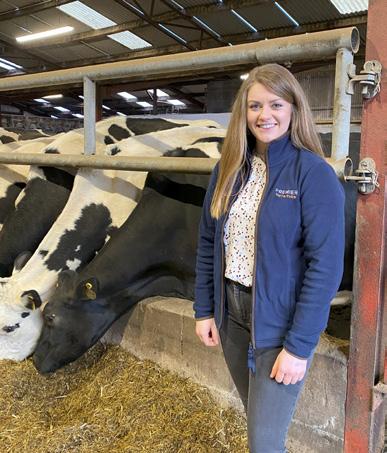
As Ireland’s new Business Manager, Lorna will work with customers across all species to ensure their nutrition programmes are both fit for purpose and maximising growth and production opportunities. With support from Premier’s internal Technical Team, Lorna will also be able to advise customers on formulation, labelling and regulation requirements.
Head of Farm Animal Division, Alan Johnston, said: “We’re excited to have Lorna join us as we expand our business in Ireland. She has extensive experience in the ruminant sector, as well has previously holding technical roles in both pig and poultry, so we’re confident customers now have local access to some of the best industry knowledge available to support and grow their businesses.”
Lorna Power, Business Manager Ireland added: “I am working with a fantastic team of people at Premier Nutrition to support both current customers and prospective new businesses who wish to improve their own results. It’s such an exciting phase of growth for Premier here in Ireland and I’m looking forward to helping customers with increased success.”
Lorna graduated from Waterford Institute of Technology with a BSc (Hons) in Agriculture Science and has recently started a Masters in ruminant nutrition. She has experience in ruminant, poultry, pig and food innovation sectors and has held roles comprising equine, sustainability and regulatory aspects.
Alltech Announces New Roles to Support its Global Agriculture Solutions and Services
Over the past 15 years, Alltech has grown its portfolio significantly. To reflect this growth, Alltech has formed a new team, the Technology Group. This team will be responsible for Alltech’s nutritional technologies, services and technical support. Its focus will be on providing customers with an advantage, drawing upon company’s diverse range of solutions and services to offer customised support. To lead the Technology Group, Alltech has appointed:
• Nick Adams (UK), commercial director. Adams has worked with Alltech for 24 years, most recently as global director of the Alltech Mycotoxin Management platform.
• Dr. Jules Taylor-Pickard (UK), technical director. TaylorPickard has worked with Alltech for 22 years and previously served as global director of the Alltech Gut Health platform.
• Martin Minchin (UK), commercial marketing director. Minchin previously served as global marketing manager of the Alltech Mycotoxin Management platform. He has been with Alltech for nearly seven years.
Other recent Alltech appointments include:
• Steve Elliott (U.S.), global vice president, corporate accounts and pet. Elliott has been with Alltech for more than 29 years in a variety of roles. Most recently, he served as global director of the mineral management division.
• Russell Gilliam (U.S.), global director of business development for pork. Gilliam has worked with Alltech for nearly 24 years. Prior to this role, he was Alltech’s U.S. pork business leader.
• Dr. Daniel Graugnard (U.S.), dairy research director. Graugnard, who has worked with Alltech for more than 12 years, most recently served as monogastric research director.
• Dr. Jose Soto (U.S.), monogastric research director. Soto most recently served as global swine technical manager. He has worked with Alltech for two-and-a-half years.
• Claire Boudwin (U.S.), global product launch marketing manager. Boudwin, who previously served as North American species marketing manager, has worked with Alltech for nearly six years.
• William Wallis (U.S.), Eastern U.S. marketing manager, is now also serving as U.S. poultry marketing manager. Wallis has worked with Alltech for 12 years.
New Managing Director appointed for dairy businesses of AB Agri

AB Agri has announced the appointment of a new Managing Director to head up its dairy businesses within the UK and Ireland.
David Williams took up the new role on 20 February 2024, and brings a vast wealth of executive experience within the dairy industry, spanning the UK and wider Europe, with both the Arla group, and more recently as CEO for Omsco Ltd (Organic Herd).
“I am delighted to take up this new opportunity at an exciting time for the development of our businesses here in the UK and Ireland,” says Mr Williams.
“I will continue to help drive and support the incredible hard work and successes our teams and businesses are demonstrating every day, as well as overseeing ongoing investments and developments, all geared towards providing responsible solutions for a sustainable and profitable future for farmers.”
AB Agri CEO José Nobre adds, “We are committed to help build the world’s most responsible and productive farm ecosystems, that are resilient for the future. Our recent investments mean we have a unique proposition to support farmers and the supply chain to produce more responsible, affordable nutrition.
“We are delighted to welcome David, with his wealth of experience in the dairy industry, as he strategically moves this proposition forward. We look forward to working with him at this exciting juncture.”
page 60 March/april 2024 Feed Compounder
Making the safe way the easy way…
With Dave Roberts, Director of Health, Safety, Quality and Environment, ABN
How a focus on health, safety, quality and environment is helping to drive production efficiencies and customer experiences at ABN
‘Making the safe way the easy way’ may sound like a simple principle, but by adopting that approach and developing a safety culture, ABN’s new Director of Health, Safety, Quality and Environment is driving a Target Zero ambition that is leading to continuous improvement and best practice across all elements of the business.
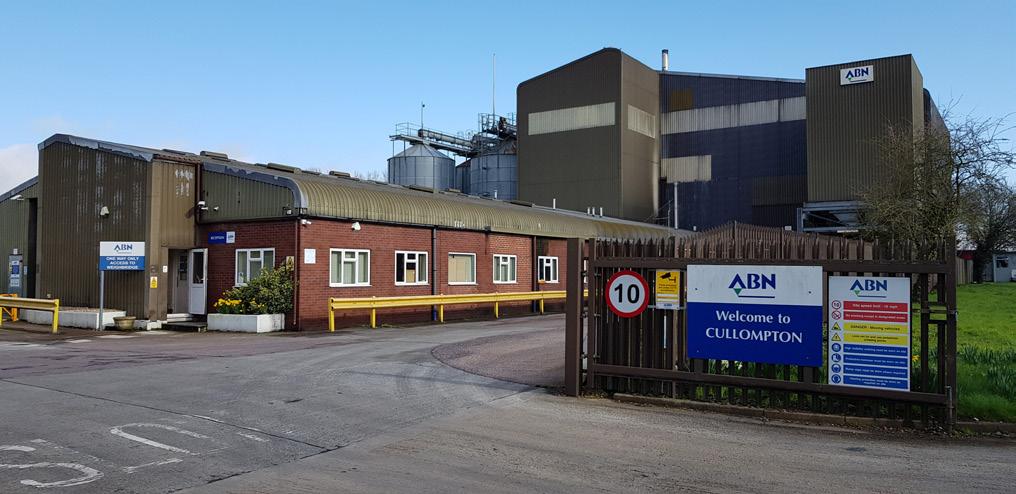
According to Dave, this is where the mantra ‘make the safe way the easy way’ comes in, and if that can’t be achieved, make the unsafe way the most difficult way.
The Safety Culture programme of Target Zero underpins everything ABN does across the supply chain, and as such provides the security of supply that customers require, based on sound QESH (Quality, Environment, Safety and Health) principles.
“This role for health, safety, quality and environment demonstrates our commitment to QESH, providing a voice as a representative of quality control to the ABN board,” says Dave.
The role dovetails with the CI team, with Everyday Excellence the vehicle driving the quality, safety, health and well-being responsibilities across all areas of the business and supply chain, including relationships with customers.
“These principles are really important to us as a business, not least because it is equally important to our customers, and this is where our partnership approach takes centre stage,” he says.
Coming from a chemical engineering background, and with a long operational track record working in high-risk environments, Dave understands the important balance between creating a safe and healthy working environment, while also meeting quality standards and productivity targets.
Beginning his career as a graduate trainee chemical engineer with British Sugar, Dave spent the subsequent 20 years gaining experience in various roles within the business including Continuous Improvement (CI) Manager, before spending a little under five years as Head of Supply Chain in Premier Nutrition.
In his eyes, safety and quality go hand-in-hand, and together they should result in enhanced productivity. The Target Zero ambition is based around a movement to make sites safer, from manual handling to the control of vehicles on site, while the same applies to quality, based around robust quality parameters.
“I like to take a ‘Head and Hearts’ approach. The head means we are legally compliant and operating responsibly, but crucially we also need full engagement with our people to create the right culture for behavioural safety,” he adds.
“Target Zero looks at challenging behavioural issues across the entire supply chain, from factory to farm, including addressing ‘loss-time’ injuries and environmental hazards that could impact on the business and the service we provide,” he says.
“It really is from factory to farm, covering the complete loop from inbound and outbound logistics, with raw materials coming in, and feed deliveries going out. This includes our drivers, account managers and nutritionists going out on farm, identifying and advising on hazards, and providing bio-security support,” he adds.
Dave holds a NEBOSH general certificate and oversees a team of three full-time health and safety managers, as well as the feed safety and quality team, working to eliminate hazard and risk, while improving standards and cultures across people, sites, and processes.

Having previously held roles that have been focussed on hitting production targets, Dave is enjoying combining that fast-paced environment with a focus on safety and ensuring quality feed is going out to customers.
“Bad safety quality equals bad production, so again those approaches go hand-in-hand. Good operations will encourage safe working environments, good quality feeds and production efficiencies. While it was not a career plan I had envisaged as a graduate trainee, I am very happy to have this opportunity at board level to make a difference.”
Feed Compounder March/april 2024 page 61
Dave Roberts, has been appointed to a new director level role with both ABN and Premier Nutrition, overseeing quality control across all elements of AB Agri’s UK monogastric businesses, as an extension of the Everyday Excellence programme pioneered by head of Continuous Improvement, Steve McNamara.
Dave Roberts - ABN’s new Director of Health, Safety, Quality and Environment

Trouw Nutrition GB, Blenheim House, Blenheim Road, Ashbourne DE6 1HA
Tel: 01335 341100 Fax: 01335 341171

E-mail: customerservices.gb@nutreco.com
Web: www.trouwnutrition.co.uk
(See Acidifiers, Analytical Services, Animal Health Products, Antibacterials, Chelated Minerals, Enzymes, Feed Additives, Feed Supplements, Milk Replacers, Mould Inhibitors, Mycotoxin Binders, Salmonella Control, Silage Additives)
Promtek Ltd
Fisher Street, Brindley Ford, Stoke-on-Trent, Staffordshire ST8 7QJ
Tel: 01782 375600 Fax: 01782 375605
E-mail: info@promtek.com Web: www.promtek.com

(See Calibration and Weighing Services, Process Control Systems)
CLASSIFIED
ACIDIFIERS
Lallemand Animal Nutrition Limited
10 – 13 Spring Lane North, Malvern Link WR14 1BU
Email: animaluk@lallemand.com
Tel: 07827 228161
Trouw Nutrition GB, Blenheim House, Blenheim Road, Ashbourne DE6 1HA
Tel: 01335 341100 Fax: 01335 341171

E-mail: customerservices.gb@nutreco.com
Web: www.trouwnutrition.co.uk
ALTERNATIVE PERFORMANCE ENHANCERS
Adisseo
Tel: +353 87 766 8848
E-mail: info.nauk@adisseo.com
Web: www.adisseo.com
ANIMAL HEALTH PRODUCTS
Kernfarm B.V.
De Corridor 14D
3621 ZB Breukelen, The Netherlands
Tel: +31 (0) 346 785 139


Email: info@kernfarm.com Web: www.kernfarm.com
Mervue Laboratories Ireland
Unit 9 Watergrasshill Business Park, Watergrasshill, Co. Cork, T56 HH98, Ireland
Tel: +353 21 21 4391080
E-mail: info@mervuelab.com
Web: www.mervuelab.com
Trouw Nutrition GB, Blenheim House, Blenheim Road, Ashbourne DE6 1HA
Tel: 01335 341100 Fax: 01335 341171


E-mail: customerservices.gb@nutreco.com
Web: www.trouwnutrition.co.uk
ANALYTICAL SERVICES
DM Scientific Ltd, Main Site, Dalton, Thirsk, North Yorkshire YO7 3JA Tel: 01845 577757
Email: dmacmillan@dmscientific.co.uk
Web: www.dmscientific.co.uk
Trouw Nutrition GB, Blenheim House, Blenheim Road, Ashbourne DE6 1HA
Tel: 01335 341100 Fax: 01335 341171


E-mail: customerservices.gb@nutreco.com
Web: www.trouwnutrition.co.uk
ANTIBACTERIALS
Adesco Nutricines, 23 Strandside South, Abbeyside, Dungarvan, Co. Waterford X35 W778, Ireland
Jack: +353 87 2208816 Seán: +353 85 1667512
Email: info@adesco.ie Web: www.adesco.ie
Trouw Nutrition GB, Blenheim House, Blenheim Road, Ashbourne DE6 1HA
Tel: 01335 341100 Fax: 01335 341171

E-mail: customerservices.gb@nutreco.com
Web: www.trouwnutrition.co.uk
ANTIOXIDANTS
Adisseo
Tel: +353 87 766 8848
E-mail: info.nauk@adisseo.com
Web: www.adisseo.com
Lallemand Animal Nutrition Limited
10 – 13 Spring Lane North, Malvern Link WR14 1BU
Email: animaluk@lallemand.com
Tel: 07827 228161

AUTOMATED BAGGING & PALLETIZING EQUIPMENT


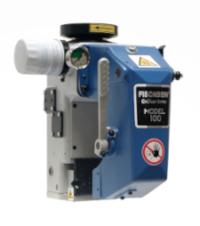

salesuk@fischbein.com
Tel. +44 208 344 6600
www.fischbein.com

BAGGING EQUIPMENT
Concetti S.p.A
S.S. 75 Centrale Umbra, km 4, 190 Ospedalicchio 06083 Bastia Umbra, PG - Italy
Tel: +39 075 801561 Fax: +39 075 8000894
E-mail: sales@concetti.com Web: www.concetti.com

page 62 March/april 2024 Feed Compounder
and Service Finder for the Animal Feed Industry Also
online
LISTINGS Product
available interactive and
at www.feedbuyersguide.com
BULK STORAGE AND HANDLING
Croston Engineering Ltd, Tarvin Mill, Barrow Lane, Tarvin, Chester CH3 8JF
Tel: 01829 741119 Fax: 01829 741169
E-mail: admin@croston-engineering.co.uk
Web: www.croston-engineering.co.uk

CALIBRATION AND WEIGHING SERVICES
Promtek Ltd
Fisher Street, Brindley Ford, Stoke-on-Trent, Staffordshire ST8 7QJ
Tel: 01782 375600 Fax: 01782 375605
E-mail: info@promtek.com Web: www.promtek.com
CHELATED MINERALS
Trouw Nutrition GB, Blenheim House, Blenheim Road, Ashbourne DE6 1HA
Tel: 01335 341100 Fax: 01335 341171


E-mail: customerservices.gb@nutreco.com
Web: www.trouwnutrition.co.uk
COMMODITY CLAIMS MANAGEMENT
RMC Commodity Claims Management
3 Clement Road, Fulwood, Preston PR2 9LG
Tel: 07841 198733
E-mail: enquiries@rawmaterialclaims.co.uk
Web: www.rawmaterialclaims.co.uk
ENZYMES
AB Vista

Edificio Twin Golf A, C/Perú, 6, 2º Floor, Office 4, 28290 Las Rozas, Madrid, Spain
Tel: +34 91 859 1787 Email: info@abvista.com
Web: www.abvista.com
Adisseo
Tel: +353 87 766 8848
E-mail: info.nauk@adisseo.com
Web: www.adisseo.com
Danisco Animal Nutrition & Health, IFF PO Box 218
2300 AE Leiden, THE NETHERLANDS
Tel: +31 6 1539 6689
Web: www.animalnutrition.iff.com
Trouw Nutrition GB, Blenheim House, Blenheim Road, Ashbourne DE6 1HA
Tel: 01335 341100 Fax: 01335 341171


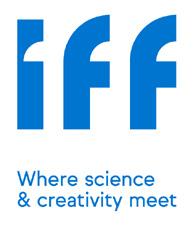

E-mail: customerservices.gb@nutreco.com
Web: www.trouwnutrition.co.uk
FEED MILL SILO MONITORING
Lvlogics Limited, Ballyhist, Carnaross,
Kells, Co. Meath, Ireland
Tel: +353 89 2426825
Email: info@lvlogics.com
Web: www.lvlogics.com
Silo Monitoring
FEED ADDITIVES
Borregaard UK Ltd
Clayton Road, Risley Employment Area, Warrington, Cheshire WA3 6QQ
Tel: 01925 285423 Fax: 01925 285433
E-mail: glenn.dearsley@borregaard.com
Cargill Animal Nutrition
Provimi Ltd., Dalton Airfield Industrial Estate, Thirsk, North Yorkshire, YO7 3HE
Tel: 01845 578125
www.cargill.com/feed
Inform Nutrition Ireland Ltd
Whitescross, Cork, T23 KD50, Ireland
Tel: +353 21 4394770
E-mail: info@informnutrition.com
Web: www.informnutrition.com
www.kemin.com
Orffa
Web: www.lignotechfeed.com

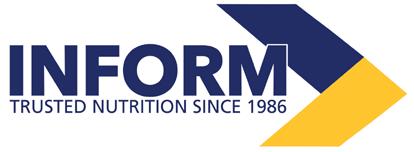

Kemin UK Ltd.
Kemin UK Ltd
Castlethorpe Court,Castlethorpe,BRIGG North Lincolnshire DN20 9LG,England
34 Botanic Road, Southport, Merseyside PR9 7NG
tel:+44.1652.65.10.10 fax:+44.1652.65.54.13
Tel: +44 (0)1704 537702
Pancosma SA
Minervum 7032 4817 LZ Breda
Vierlinghstraat 51
4251 LC Werkendam
The Netherlands
The Netherlands
T +31 183 44 77 66
E info@orffa.com
Find your Orffa specialist at www.orffa.com
Voie des Traz 6, 1218 Le Grand-Saconnex, Geneva, Switzerland
Tel : +41 22 929 84 84 Fax : +41 9259 84 95
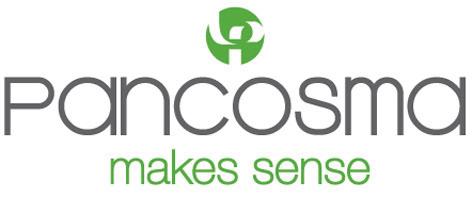
E-mail: info@pancosma.ch Web: www.pancosma.com
Trouw Nutrition GB, Blenheim House, Blenheim Road, Ashbourne DE6 1HA
Tel: 01335 341100 Fax: 01335 341171

E-mail: customerservices.gb@nutreco.com
Web: www.trouwnutrition.co.uk
FEED MILL DESIGN AND CONSTRUCTION
Croston Engineering Ltd, Tarvin Mill, Barrow Lane, Tarvin, Chester CH3 8JF
Tel: 01829 741119 Fax: 01829 741169
E-mail: admin@croston-engineering.co.uk
Web: www.croston-engineering.co.uk
Turner Process Equipment Ltd
5 De Grey Square, De Grey Road, Colchester, Essex CO4 5YQ
Tel: 01206 752017 Fax: 01206 854484
E-mail: sales@turnerprocessequipment.co.uk
Web: turnerprocessequipment.co.uk
Van Mourik Group
Boylestraat 34, 6718 XM Ede, The Netherlands
Tel: + 31 (0) 318 64 11 44
E-mail: info@vanmourik-group.com
Web: vanmourik-group.com

Feed Compounder March/april 2024 page 63

FEED MILL EQUIPMENT

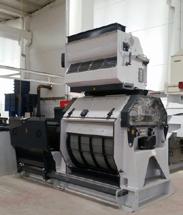


The sole UK supplier for Feedtech and supplier of all new and used milling equipment
Go Green Pelleting Solutions Ltd, Unit 8A Brindley Road, St Helens WA9 4HY
Mick Swift – 07500887637 David Kelly- 07500335621
Office Number – 01744808600
www.gogreenpelletingsolutions.co.uk www.feedtech.com.tr
FEED PATHOGEN CONTROL
Adesco Nutricines, 23 Strandside South, Abbeyside, Dungarvan, Co. Waterford X35 W778, Ireland
Jack: +353 87 2208816 Seán: +353 85 1667512
Email: info@adesco.ie Web: www.adesco.ie
Anitox Ltd
7 Regent Park, Booth Drive, Park Farm, Wellingborough NN8 6GR
Tel: +44 1604 811228
Fax: +44 1604 811013
E-mail: anitoxEMEA@anitox.com Web: www.anitox.com
FEED INGREDIENTS
Azelis UK Ltd
Axis House, Tudor Road, Manor Park, Runcorn WA7 1BD
Tel: 01928 793090
Fax: 01928 716997
Email: nutrition@azelis.co.uk www.azelis.com
Gemcom Ltd

68 Great Portland Street, London W1W 7NG
Tel: +44 (0)20 7580 8004
E-mail: info@gemcom.co.uk
Web: www.gemcom.co.uk
Fax: +44 (0)20 7580 8002
WestendAgri The Heath Business & Technical Park, Runcorn, Cheshire, WA7 4QX
Tel: + 44 (0)1477 544400
Mobile: +44 (0)7961 977623

E-mail: sales@westendagri.com Web: www.westendagri.com
FLAVOURS & PALATANTS
Adisseo
Tel: +353 87 766 8848
E-mail: info.nauk@adisseo.com
Web: www.adisseo.com
Inroads International Ltd
Unit 4, Wem Engineering Centre Church Lane, Wem, Shropshire SY4 5HS
FEED SUPPLEMENTS
Inform Nutrition Ireland Ltd Whitescross, Cork, T23 KD50, Ireland
Tel: +353 21 4394770
E-mail: info@informnutrition.com
Web: www.informnutrition.com
Premier Nutrition
The Levels, Rugeley, Staffordshire WS15 1RD
Tel: 01889 572500
Fax: 01889 577074
E-mail: info@premiernutrition.co.uk
Web: www.premiernutrition.co.uk
Trouw Nutrition GB, Blenheim House, Blenheim Road, Ashbourne DE6 1HA
Tel: 01335 341100 Fax: 01335 341171


E-mail: customerservices.gb@nutreco.com
Web: www.trouwnutrition.co.uk
MANUFCTURING OPTIMISATION SOFTWARE
Promtek Ltd
Fisher Street, Brindley Ford, Stoke-on-Trent, Staffordshire ST8 7QJ
Tel: 01782 375600 Fax: 01782 375605
E-mail: info@promtek.com Web: www.promtek.com
METHIONINE
Adisseo
Tel: +353 87 766 8848
E-mail: info.nauk@adisseo.com
Web: www.adisseo.com
MILK REPLACERS
Trouw Nutrition GB, Blenheim House, Blenheim Road, Ashbourne DE6 1HA
Tel: 01335 341100 Fax: 01335 341171



E-mail: customerservices.gb@nutreco.com
Web: www.trouwnutrition.co.uk
MINERALS/PHOSPHATES
WestendAgri The Heath Business & Technical Park, Runcorn, Cheshire, WA7 4QX
Tel: + 44 (0)1477 544400
Mobile: +44 (0)7961 977623

E-mail: sales@westendagri.com Web: www.westendagri.com
MOISTURE MEASUREMENT & CONTROL
Adesco Nutricines, 23 Strandside South, Abbeyside, Dungarvan, Co. Waterford X35 W778, Ireland
Jack: +353 87 2208816 Seán: +353 85 1667512
Email: info@adesco.ie Web: www.adesco.ie


Tel: +44 (0)1939 236 555 Fax: +44 (0)1939 236 450
Email: info@inroadsintl.co.uk Web: inroadsintl.com
PELLETING EQUIPMENT
Compound Feed Engineering Ltd
5 Haydock Lane, Haydock, St Helens, Merseyside, WA11 9UY
Tel: +44 (0) 1942 728188 Fax: +44 (0) 1942 408430
E-mail: info@cfegroup.com
Web: www.cfegroup.com
page 64 March/april 2024 Feed Compounder

MOLASSES PRODUCTS
E D & F Man Liquid Products UK Ltd
Alexandra House, Regent Road, Bootle L20 1ES
Tel: 0151 944 5100 Fax: 0151 944 3919
E-mail: info.mlpuk@edfman.com
Web: www.edfmanliquidproductsuk.com
United Molasses GB Ltd
48 Gracechurch Street, London EC3V 0EJ
Tel: 0151 955 4850
Fax: 0151 955 4860
E-mail: molassesgb@umgroup.com
Web: www.unitedmolasses.com
MOULD INHIBITORS

Adesco Nutricines, 23 Strandside South, Abbeyside, Dungarvan, Co. Waterford X35 W778, Ireland
Jack: +353 87 2208816 Seán: +353 85 1667512
Email: info@adesco.ie Web: www.adesco.ie
Trouw Nutrition GB, Blenheim House, Blenheim Road, Ashbourne DE6 1HA
Tel: 01335 341100 Fax: 01335 341171

E-mail: customerservices.gb@nutreco.com
Web: www.trouwnutrition.co.uk
MYCOTOXIN BINDERS
AB Vista
Edificio Twin Golf A, C/Perú, 6, 2º Floor, Office 4
28290 Las Rozas, Madrid, Spain
Tel: +34 91 859 1787 Email: info@abvista.com
Web: www.abvista.com
Adisseo
Tel: +353 87 766 8848
E-mail: info.nauk@adisseo.com
Web: www.adisseo.com
Trouw Nutrition GB, Blenheim House, Blenheim Road, Ashbourne DE6 1HA
Tel: 01335 341100 Fax: 01335 341171



E-mail: customerservices.gb@nutreco.com
Web: www.trouwnutrition.co.uk
PACKAGING SOLUTIONS
Fischbein
Tel: +44 (0)20 8344 6600
E-mail: salesuk@fischbein.com
Web: www.fischbein.com
PROCESS CONTROL SYSTEMS
DSL Systems Ltd
Adbolton Hall, Adbolton Lane, West Bridgford, Nottingham NG2 5AS
Tel: 0115 981 3700 Fax: 0115 981 3702
E-mail: sales@dsl-systems.com
Web: www.dsl-systems.com
Promtek Ltd
Fisher Street, Brindley Ford, Stoke-on-Trent, Staffordshire ST8 7QJ
Tel: 01782 375600 Fax: 01782 375605
NUTRITION TOLL MANUFACTURE
B2B Nutrition, Fordton Industrial Estate, Crediton, Devon EX17 3BZ (A division of the Denis Brinicombe Group)
Tel. 01363 775115
Tom Butler (Technical) 07803 736194

Email: tbutler@brinicombe.co.uk Web: www.b2bnutrition.co.uk
SALMONELLA CONTROL
Adesco Nutricines, 23 Strandside South, Abbeyside, Dungarvan, Co. Waterford X35 W778, Ireland
Jack: +353 87 2208816 Seán: +353 85 1667512
Email: info@adesco.ie
Web: www.adesco.ie
Lallemand Animal Nutrition Limited
10 – 13 Spring Lane North, Malvern Link WR14 1BU
Email: animaluk@lallemand.com
Tel: 07815 483755
Trouw Nutrition GB, Blenheim House, Blenheim Road, Ashbourne DE6 1HA
Tel: 01335 341100 Fax: 01335 341171

E-mail: customerservices.gb@nutreco.com
Web: www.trouwnutrition.co.uk
SELENIUM
Adisseo
Tel: +353 87 766 8848
E-mail: info.nauk@adisseo.com
Web: www.adisseo.com
Lallemand Animal Nutrition Limited
10 – 13 Spring Lane North, Malvern Link WR14 1BU
Email: animaluk@lallemand.com
Tel: 07827 228161
SIEVING & PRECLEANING
Turner Process Equipment Ltd
5 De Grey Square, De Grey Road, Colchester, Essex CO4 5YQ

Tel: 01206 752017 Fax: 01206 854484
E-mail: sales@turnerprocessequipment.co.uk
Web: turnerprocessequipment.co.uk
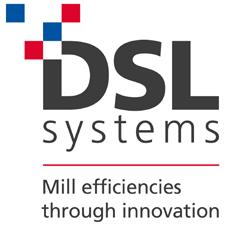
E-mail: info@promtek.com Web: www.promtek.com

SILAGE ADDITIVES
Lallemand Animal Nutrition Limited
10 – 13 Spring Lane North, Malvern Link WR14 1BU
Email: animaluk@lallemand.com
Tel: 07884 312382
Trouw Nutrition GB, Blenheim House, Blenheim Road, Ashbourne DE6 1HA
Tel: 01335 341100 Fax: 01335 341171

E-mail: customerservices.gb@nutreco.com
Web: www.trouwnutrition.co.uk
Feed Compounder March/april 2024 page 65

The gold standard of feed phytases:
• Superior performance driven by high activity at low pH: delivering greater cost savings to the poultry and swine feed industries
• Improves sustainability: driving the science towards inorganic phosphate free diets
• Market leading thermostability, even under harsh pelleting conditions
• Value-added services to support you, including: diet & raw material analysis and feed formulation tools
Danisco Animal Nutrition & Health © 2022 by International Flavors & Fragrances Inc. IFF is a Registered Trademark. All Rights Reserved.
| animalnutrition.iff.com THE BEST JUST GOT BETTER Axtra® PHY GOLD
info.animalnutrition@iff.com

































































































 Dr. Philip Ingram, Cargill ruminant technical manager
Dr. Philip Ingram, Cargill ruminant technical manager




















































































